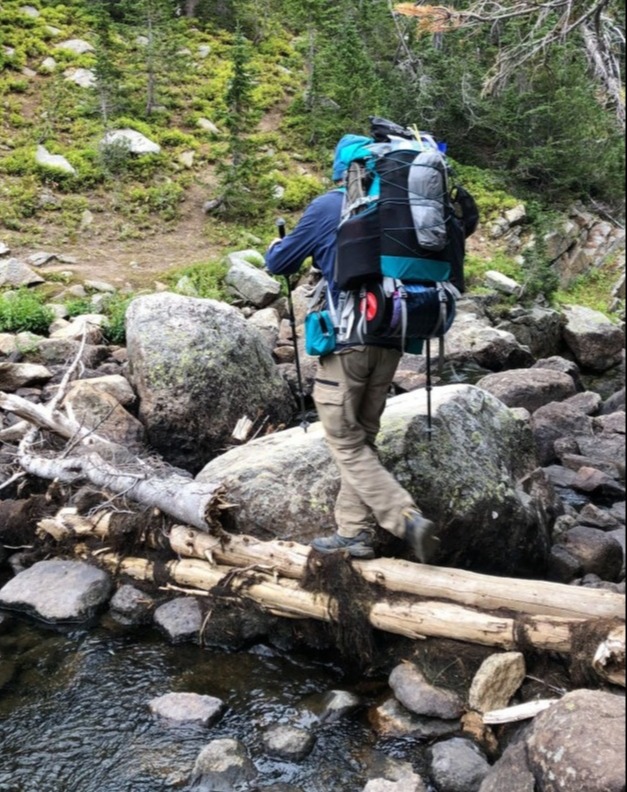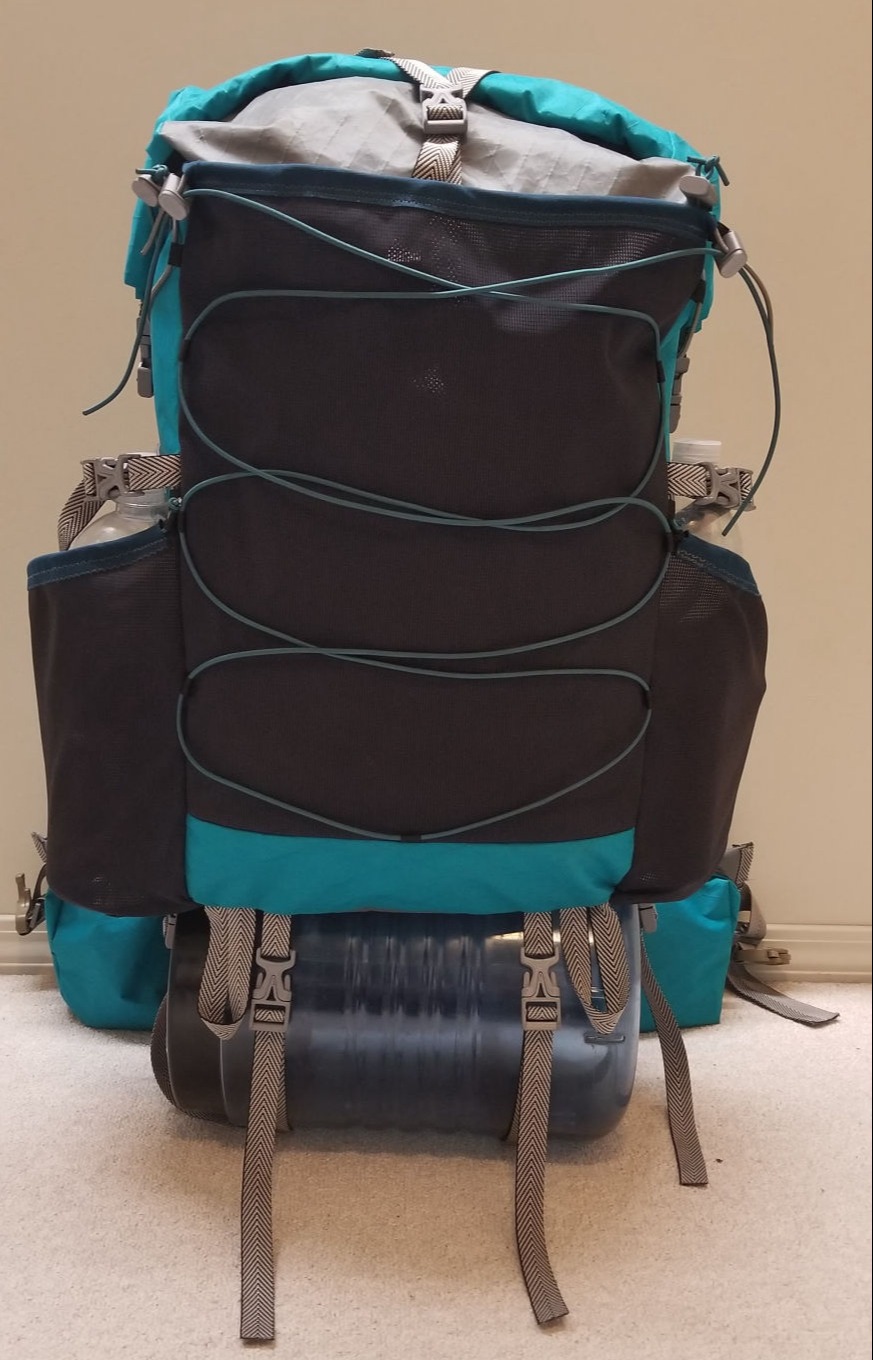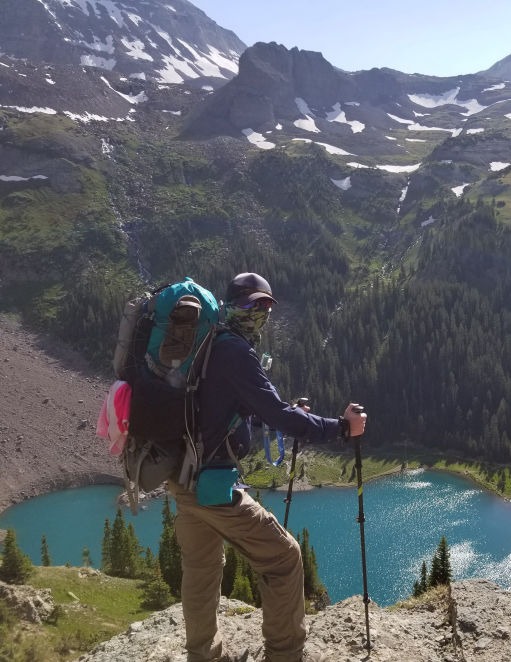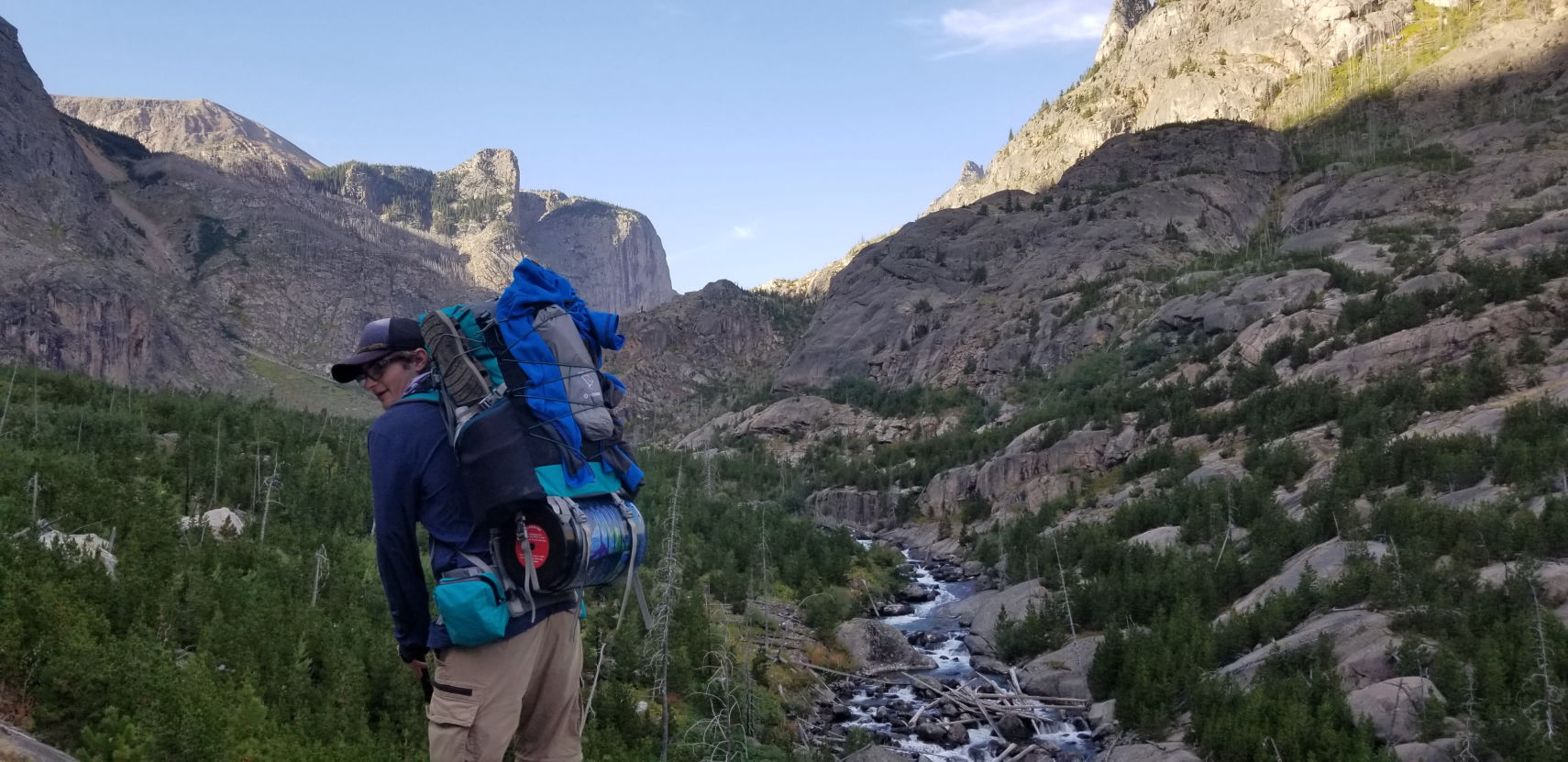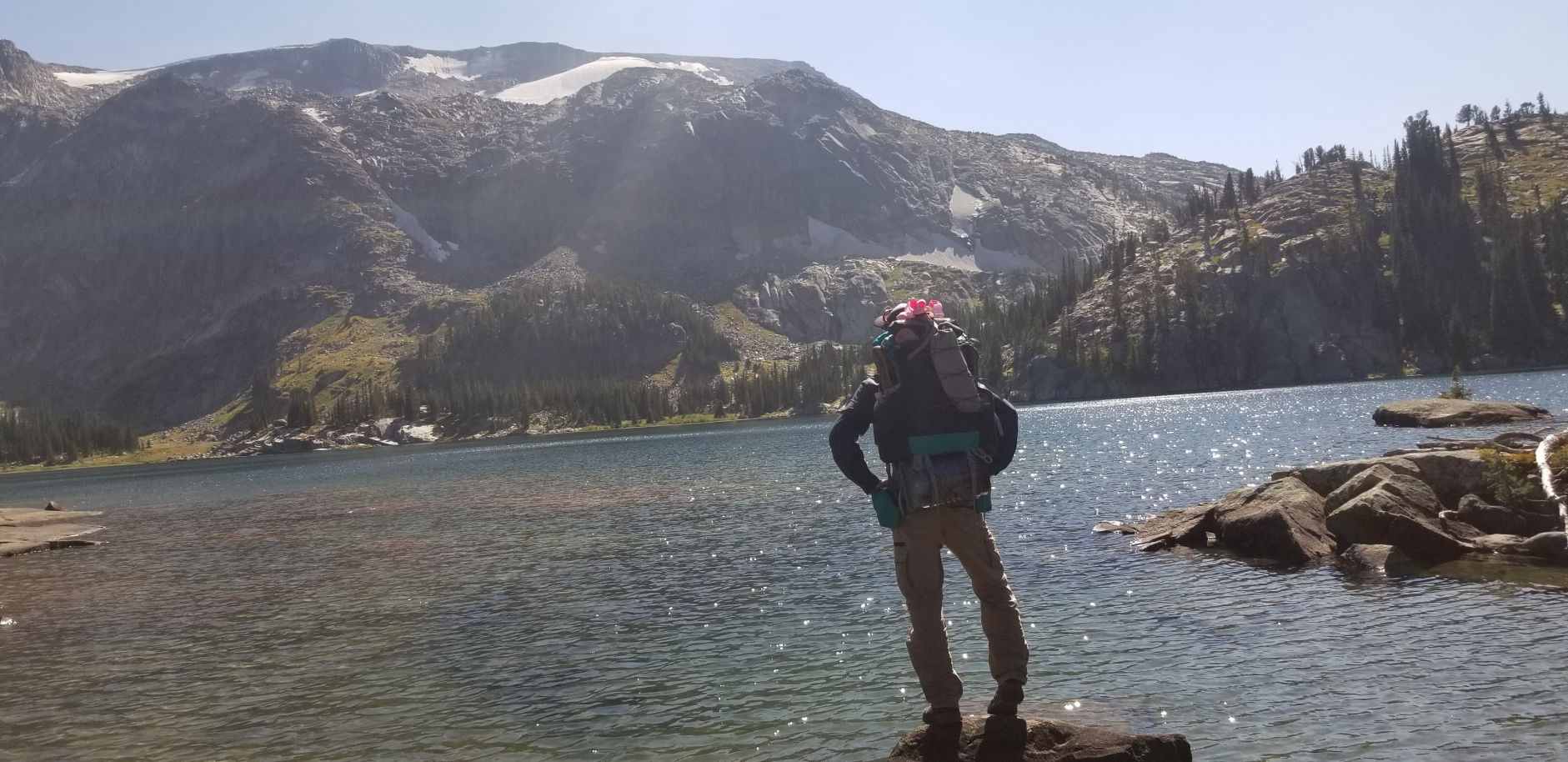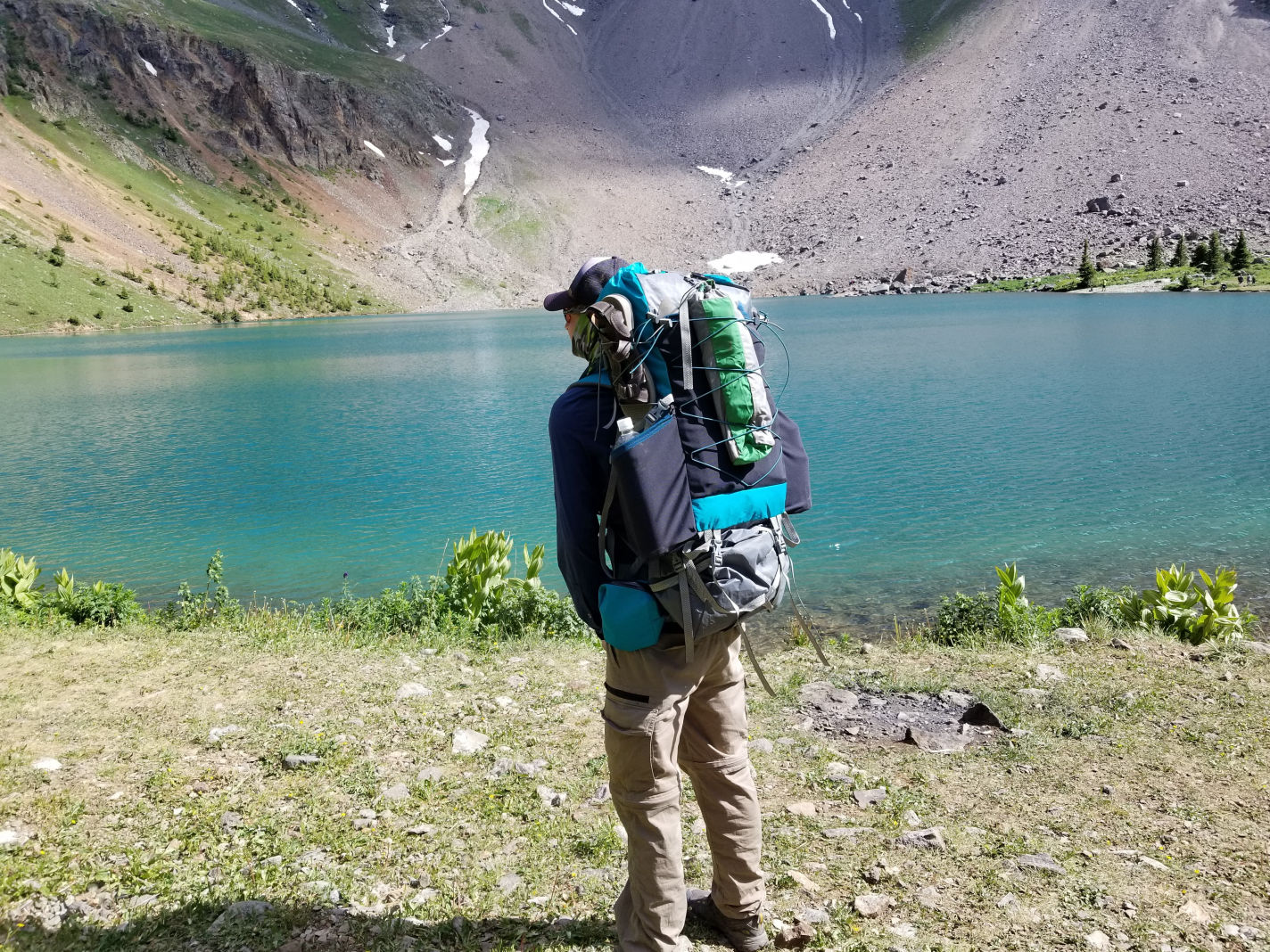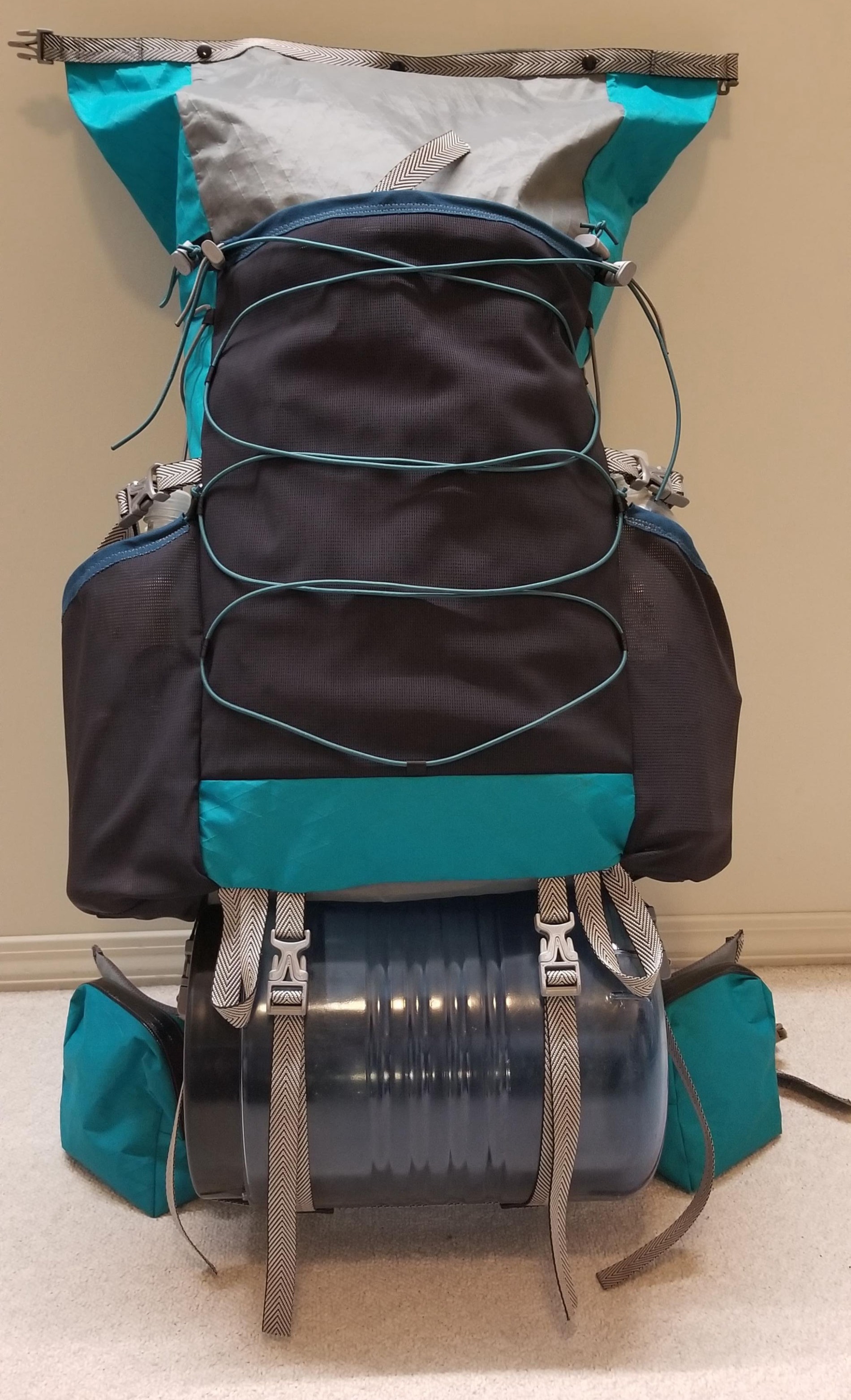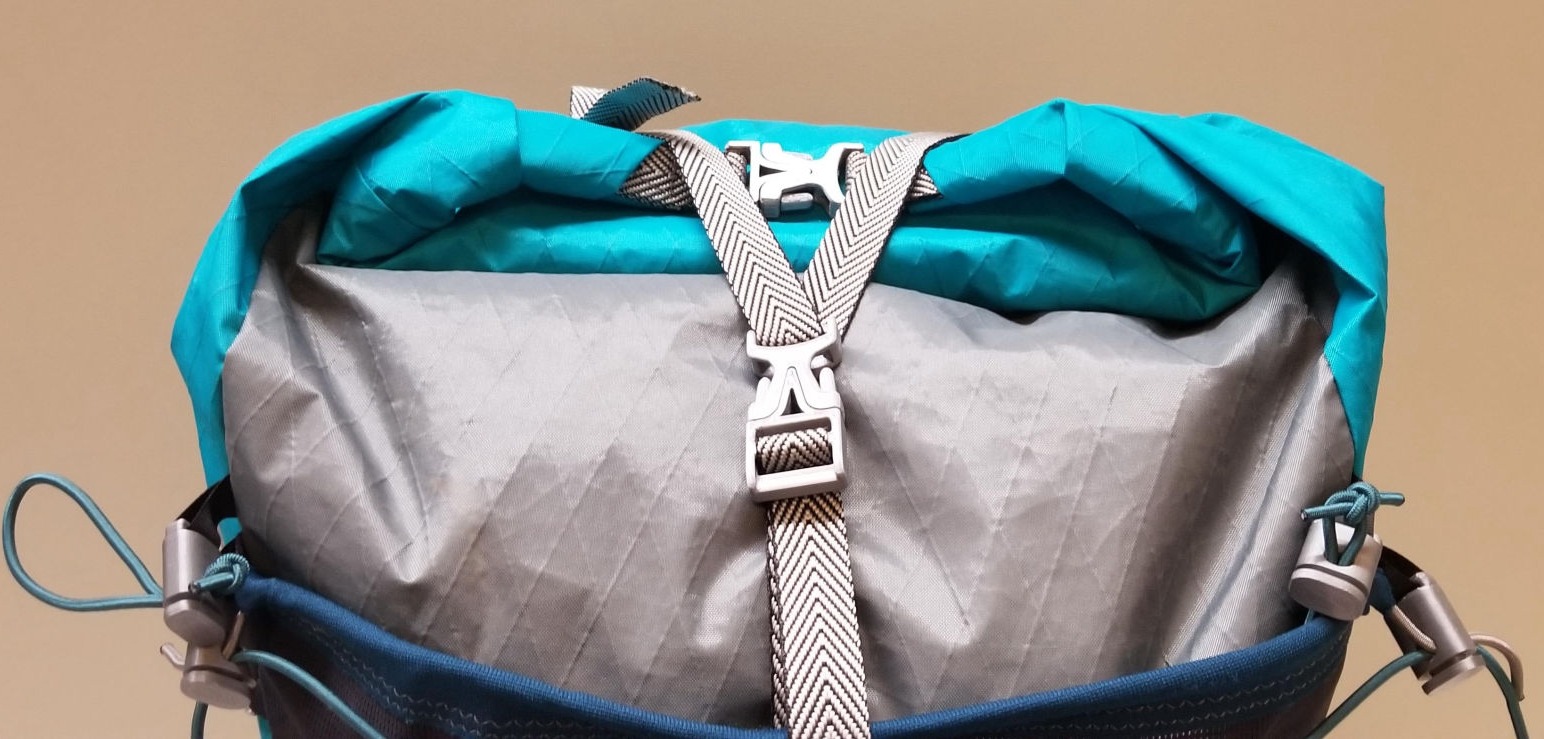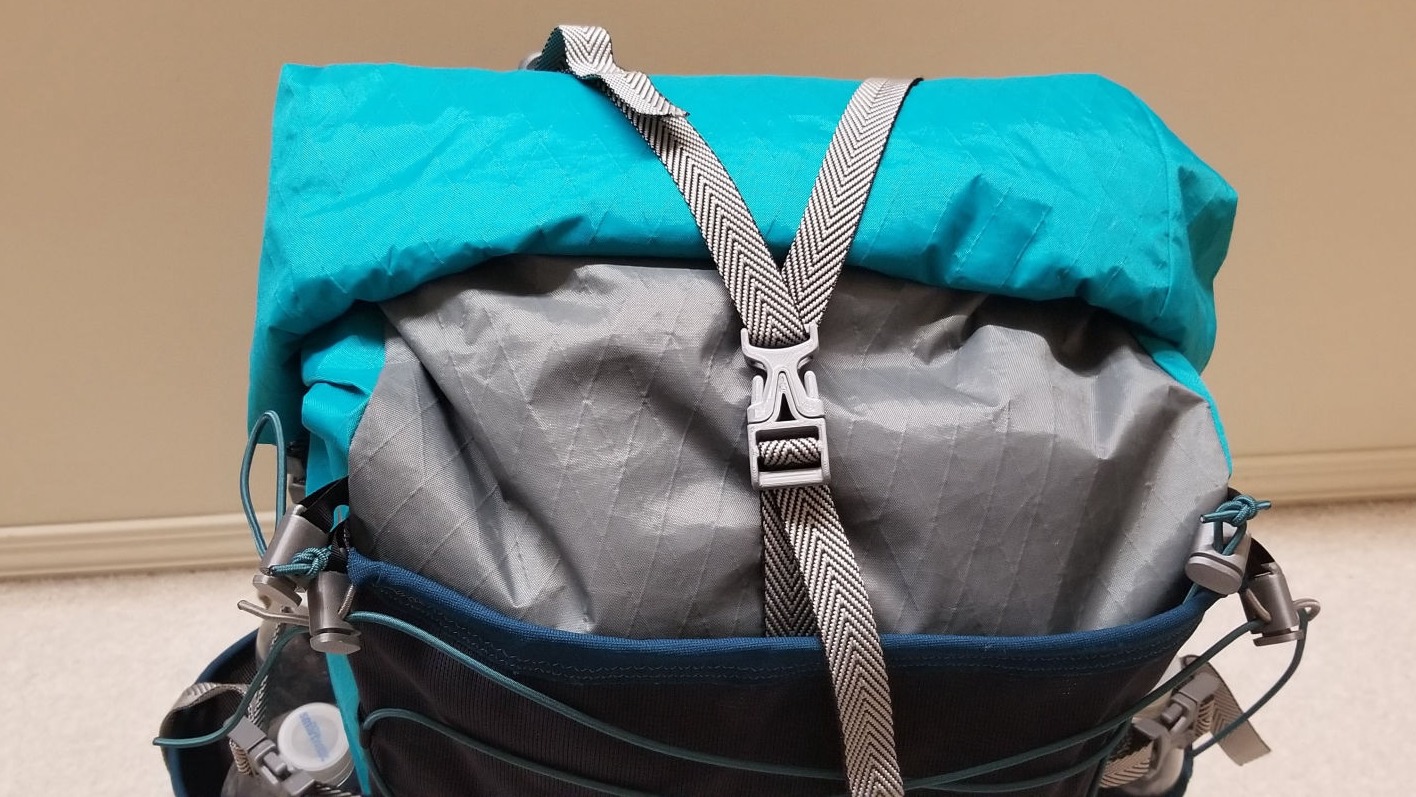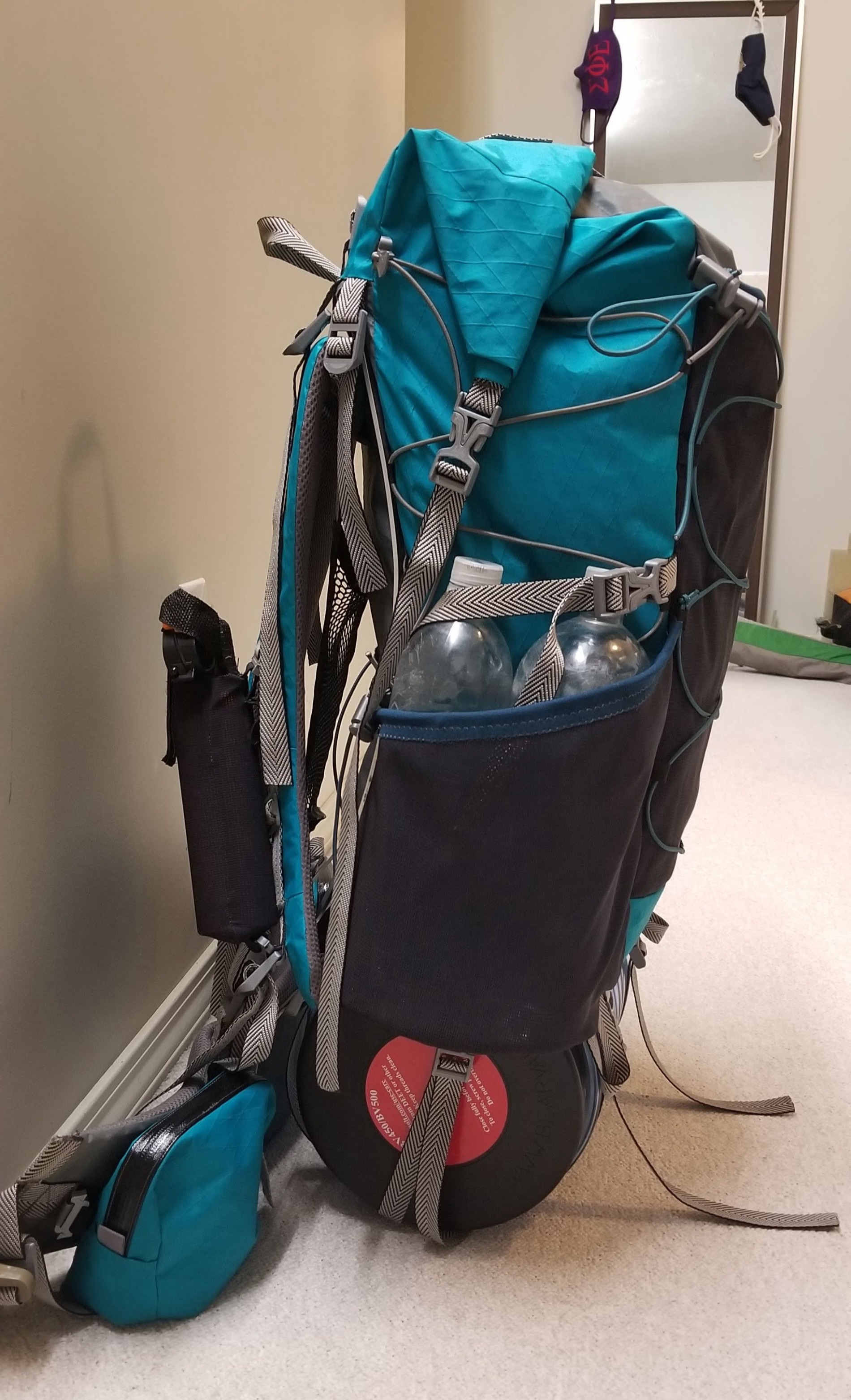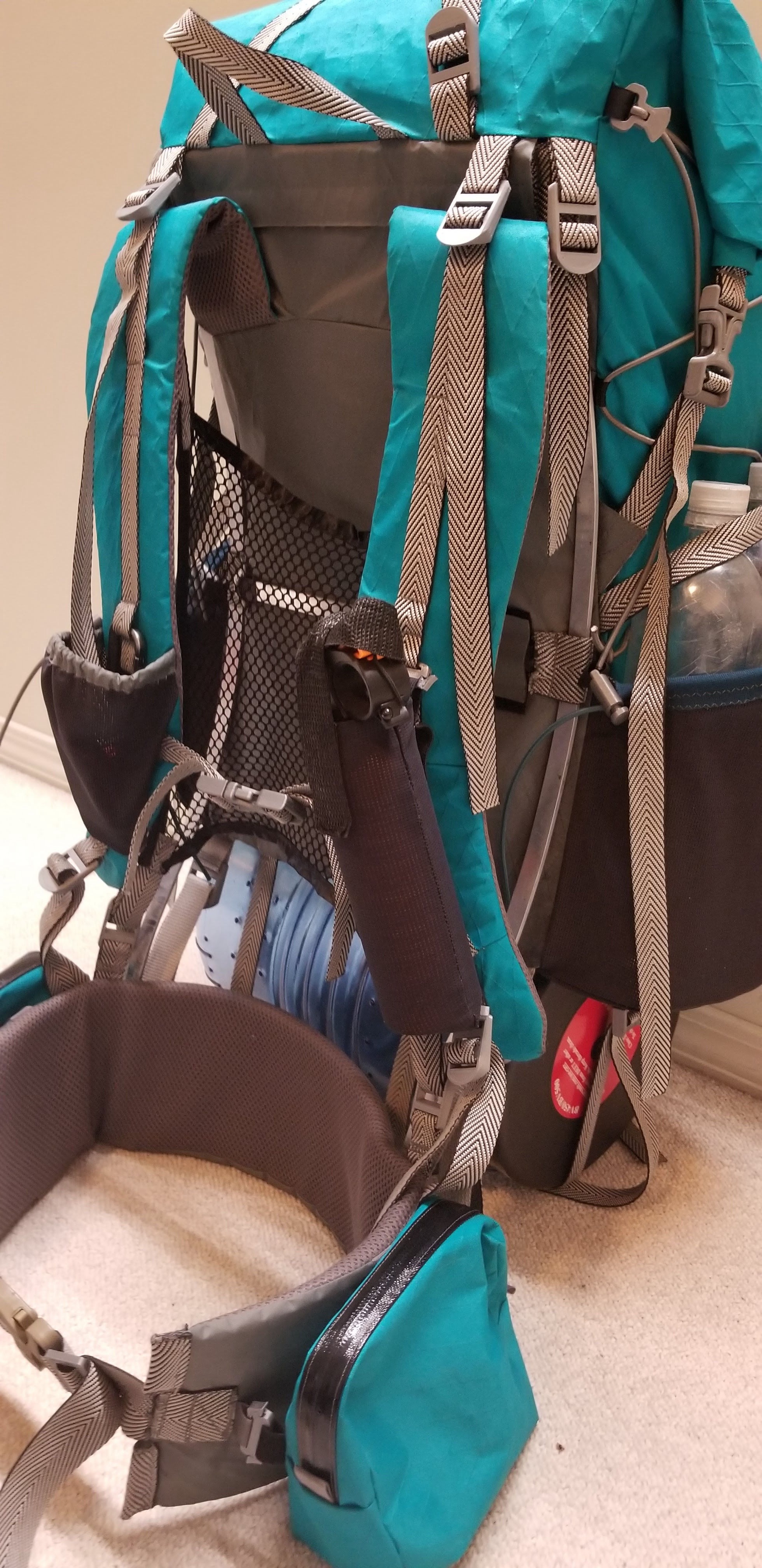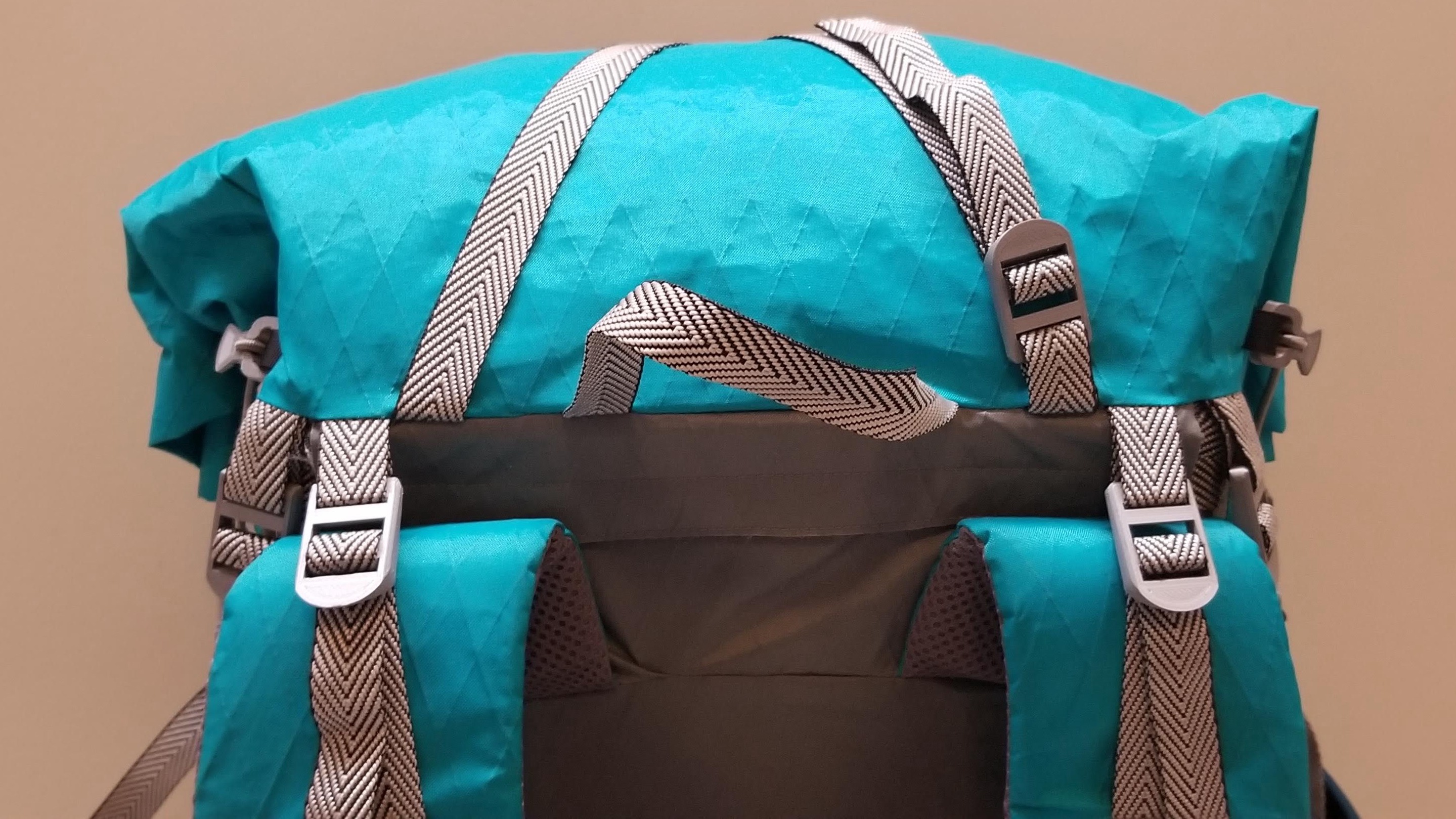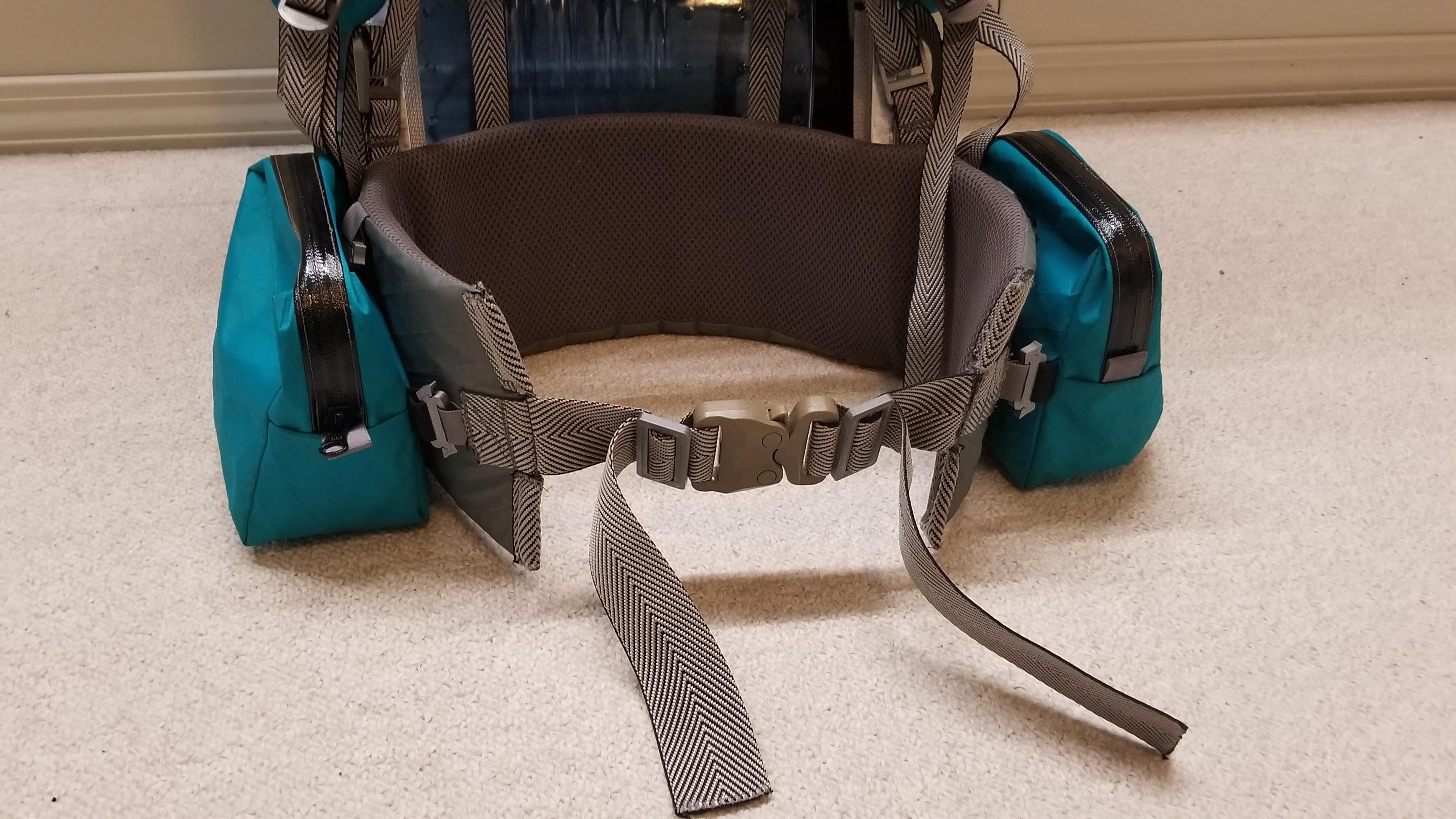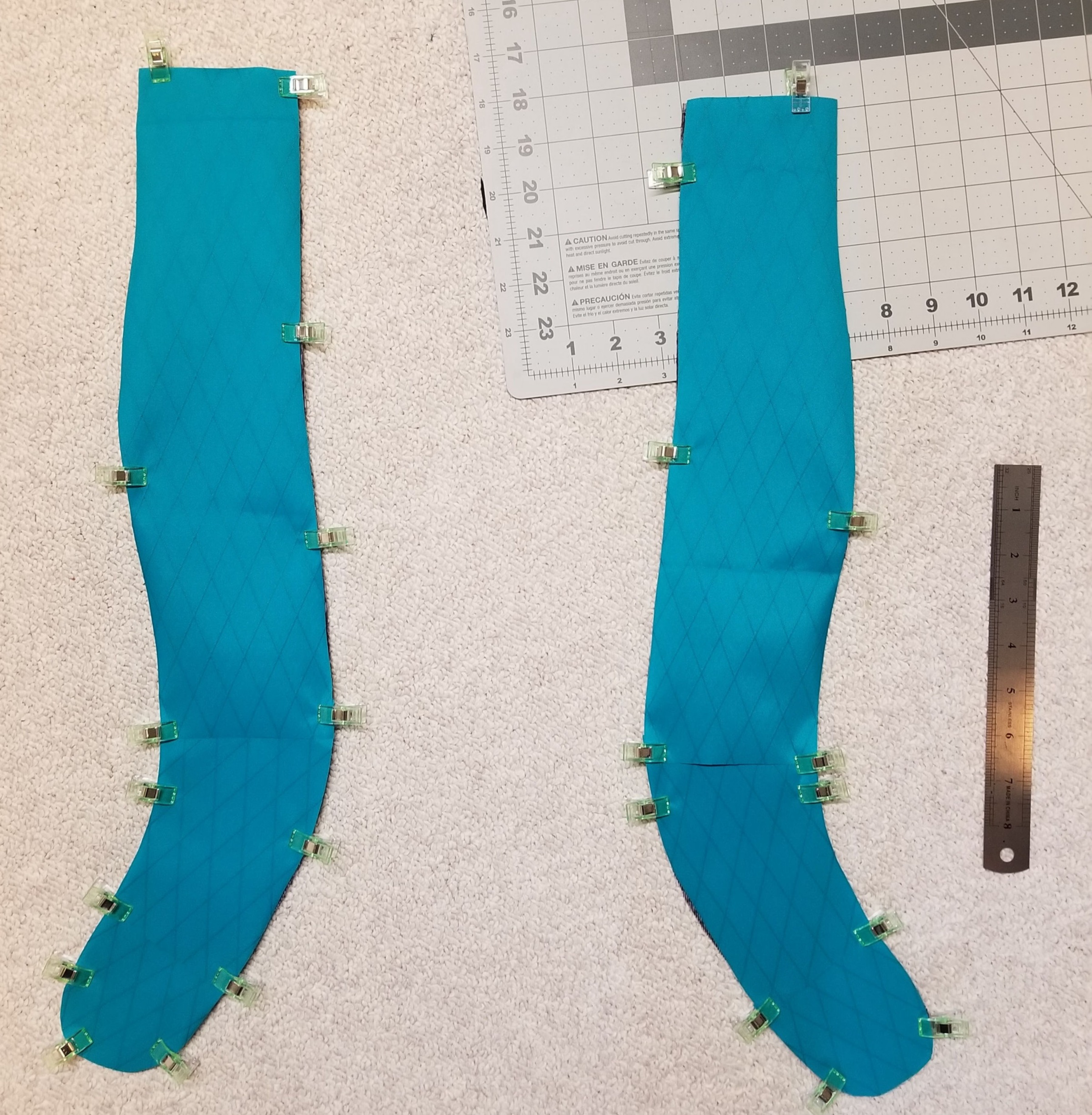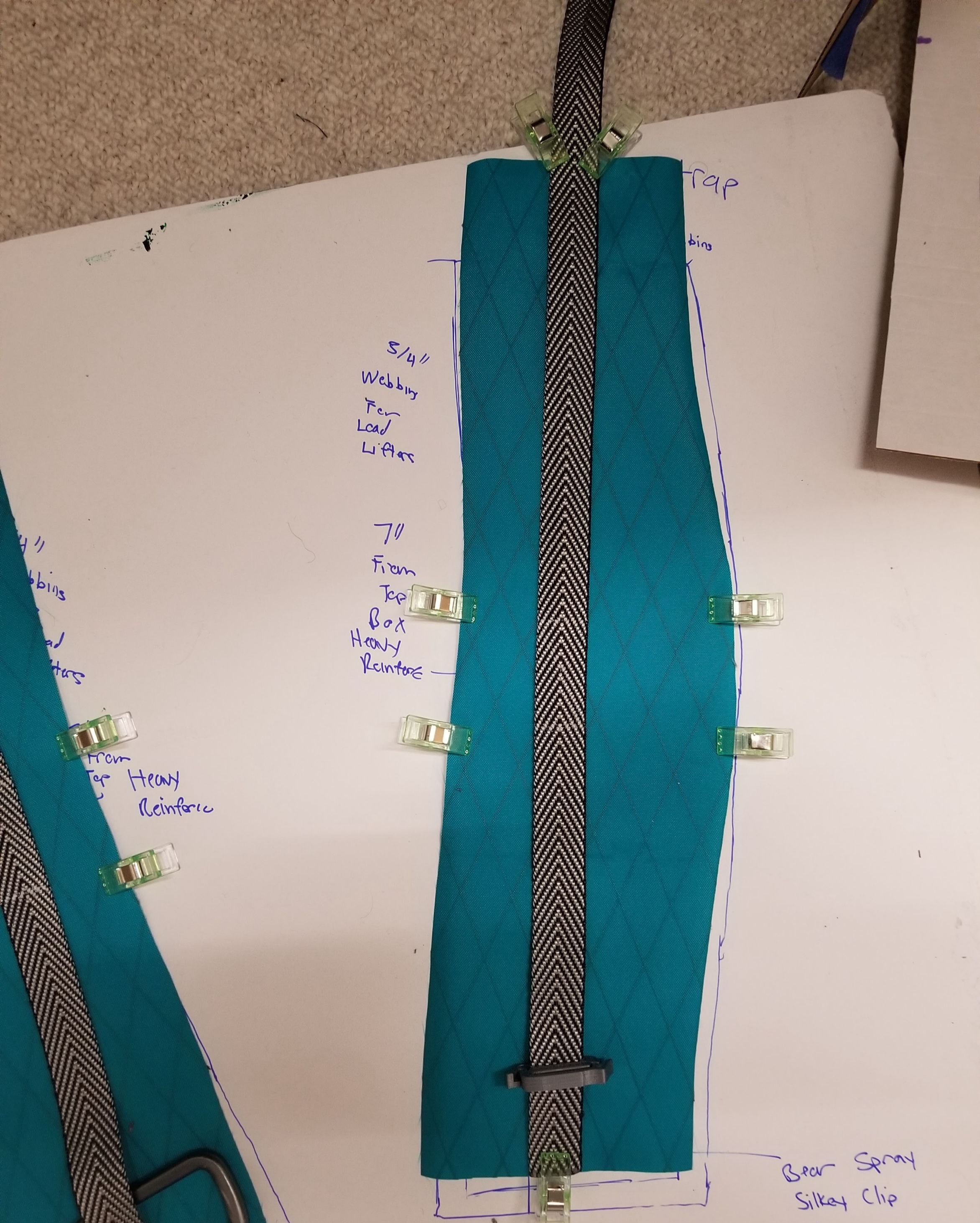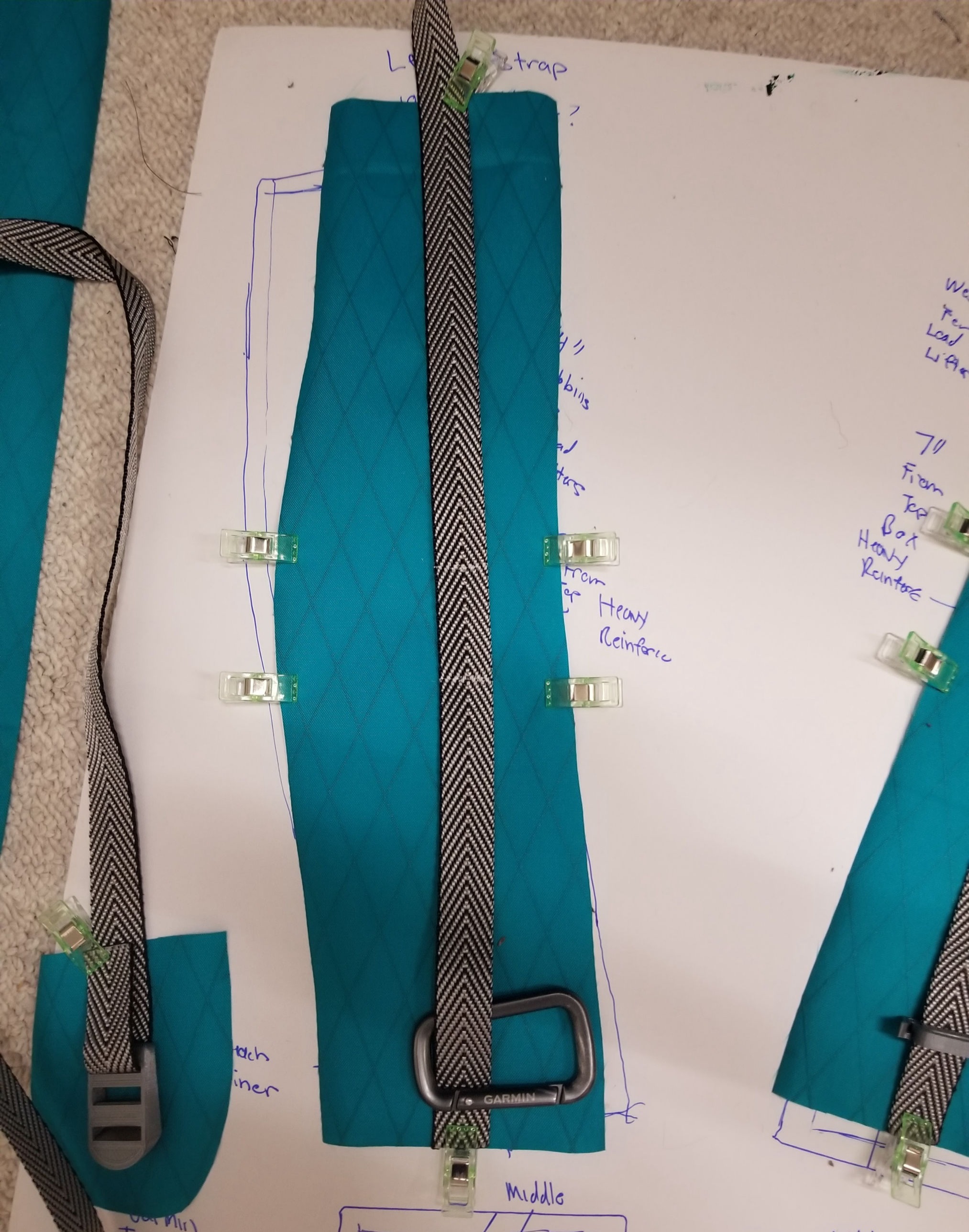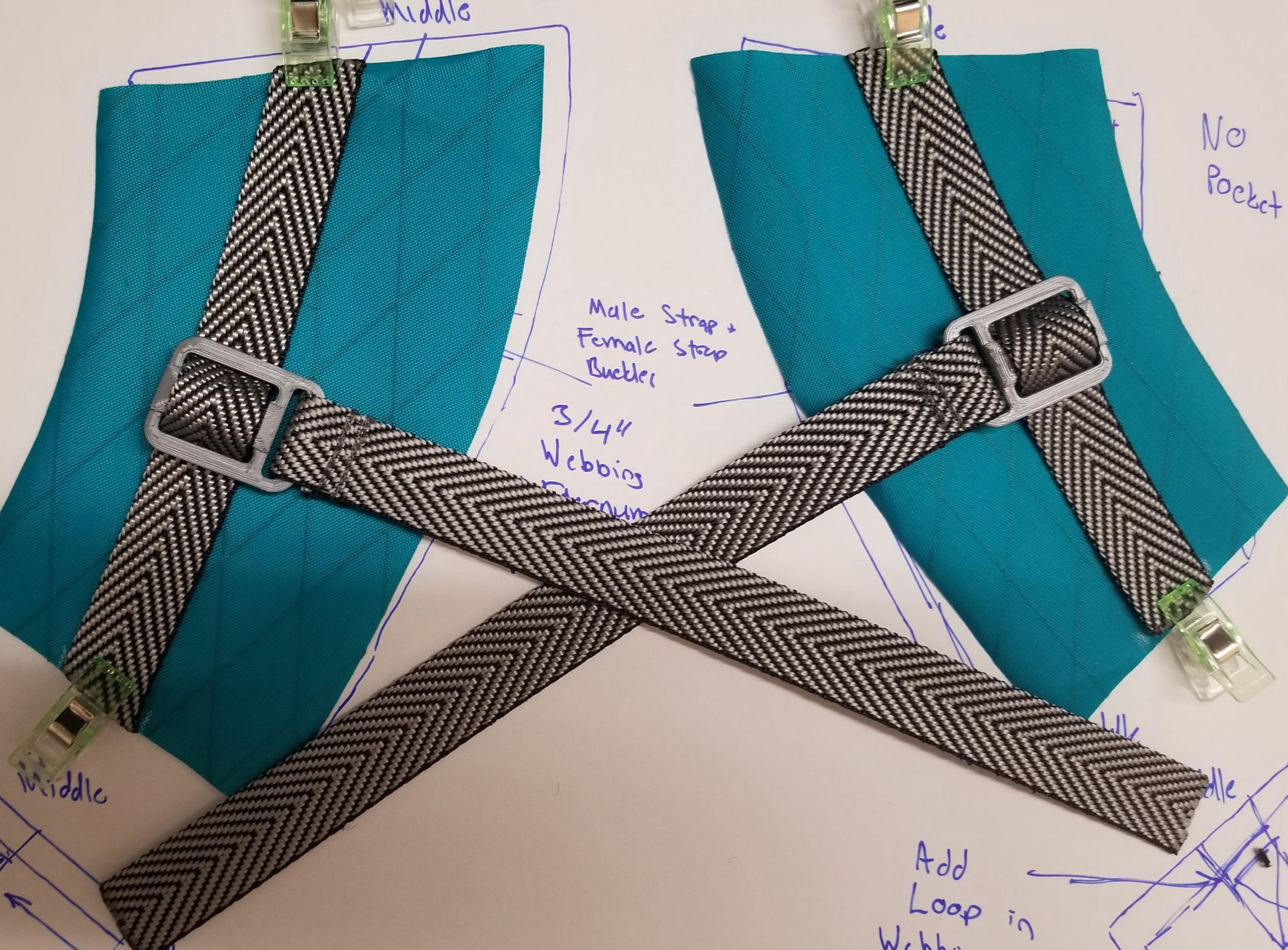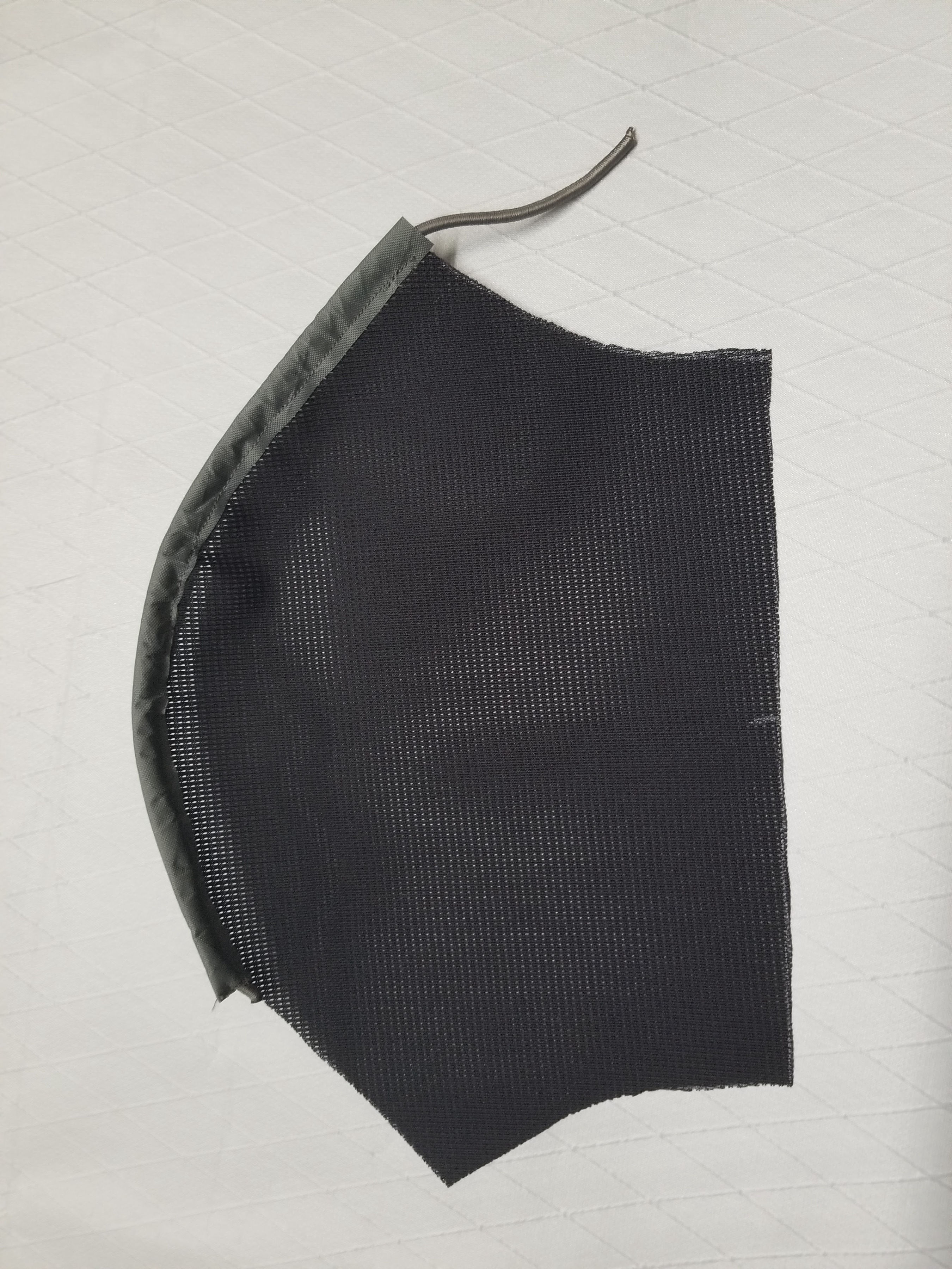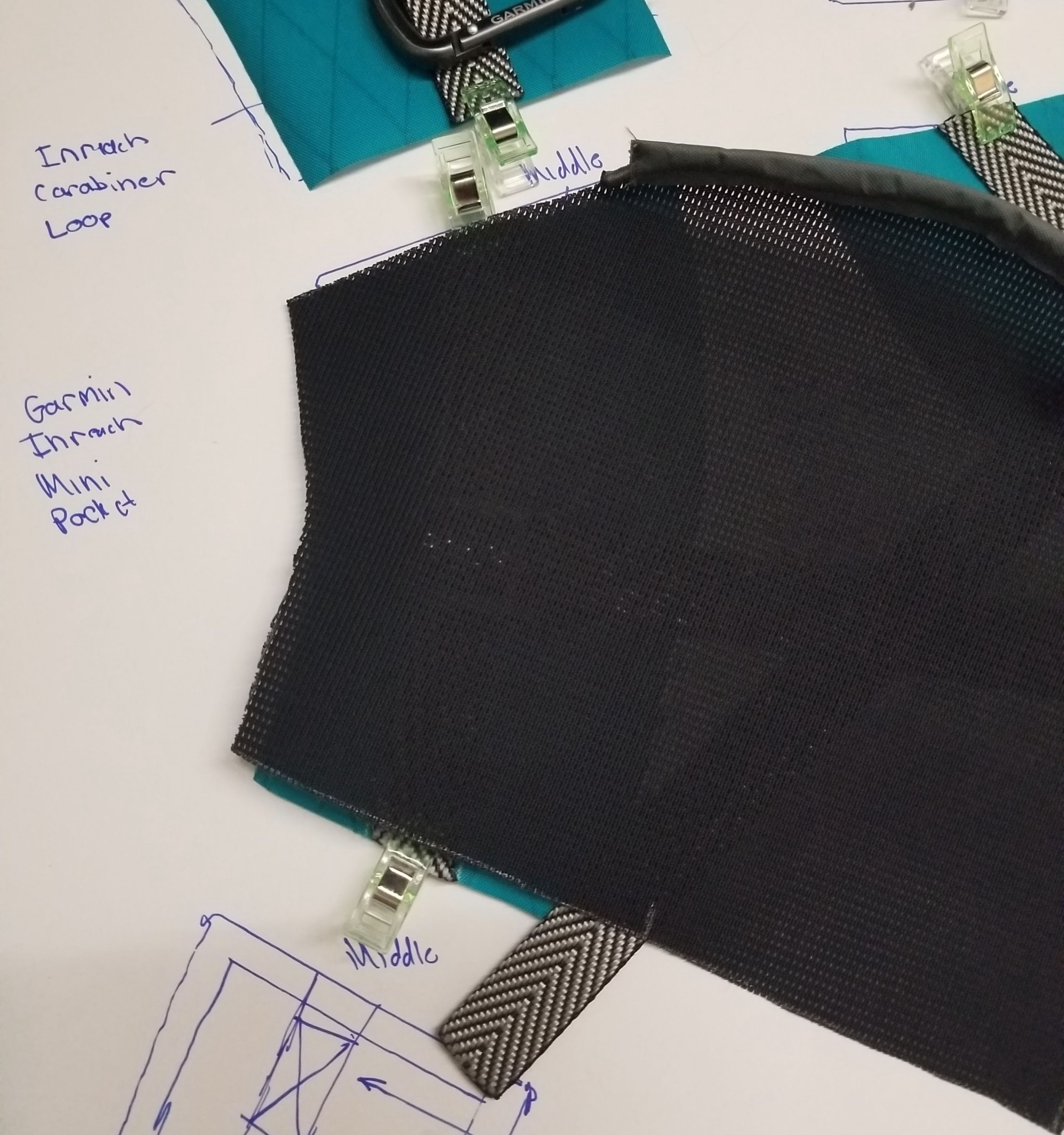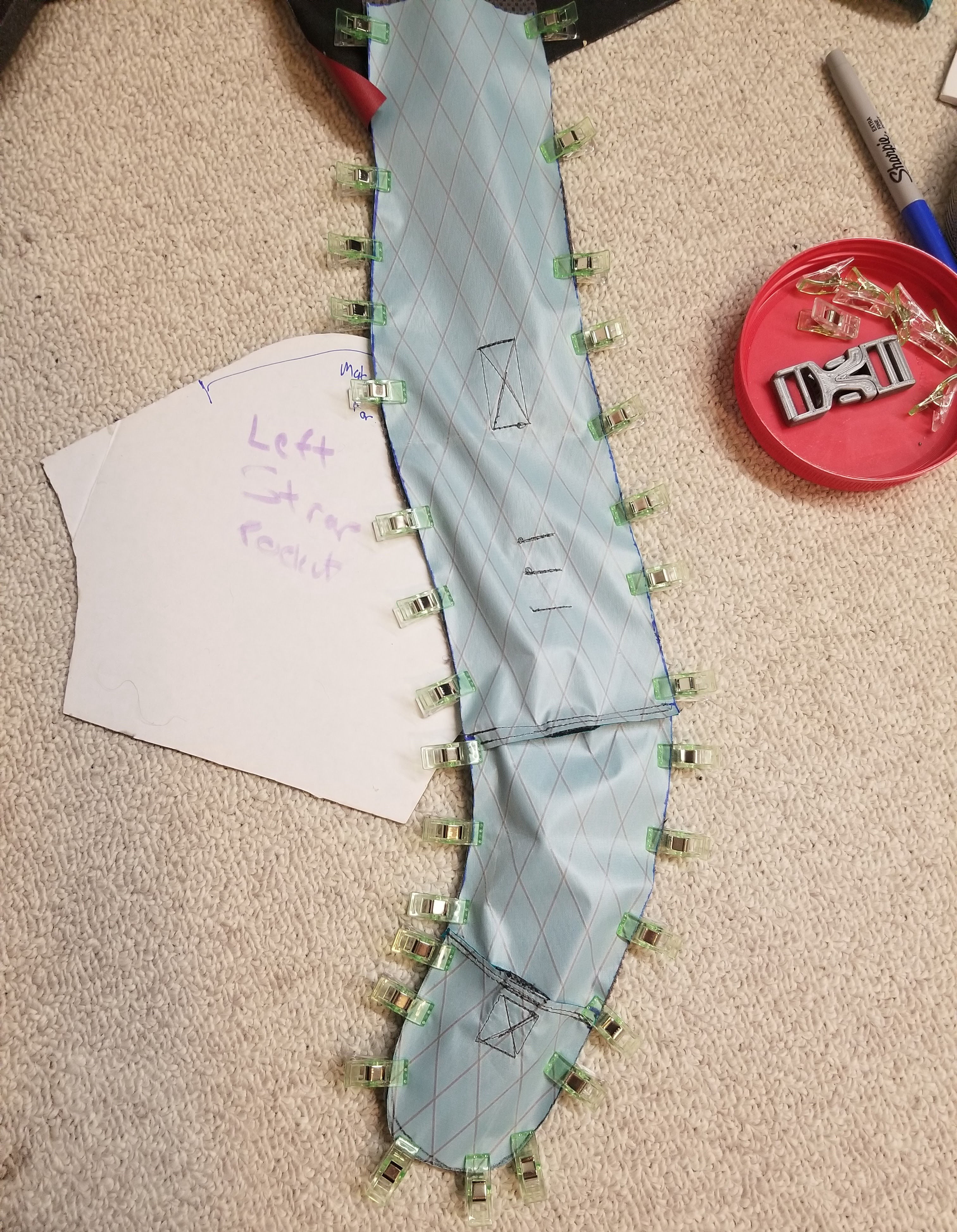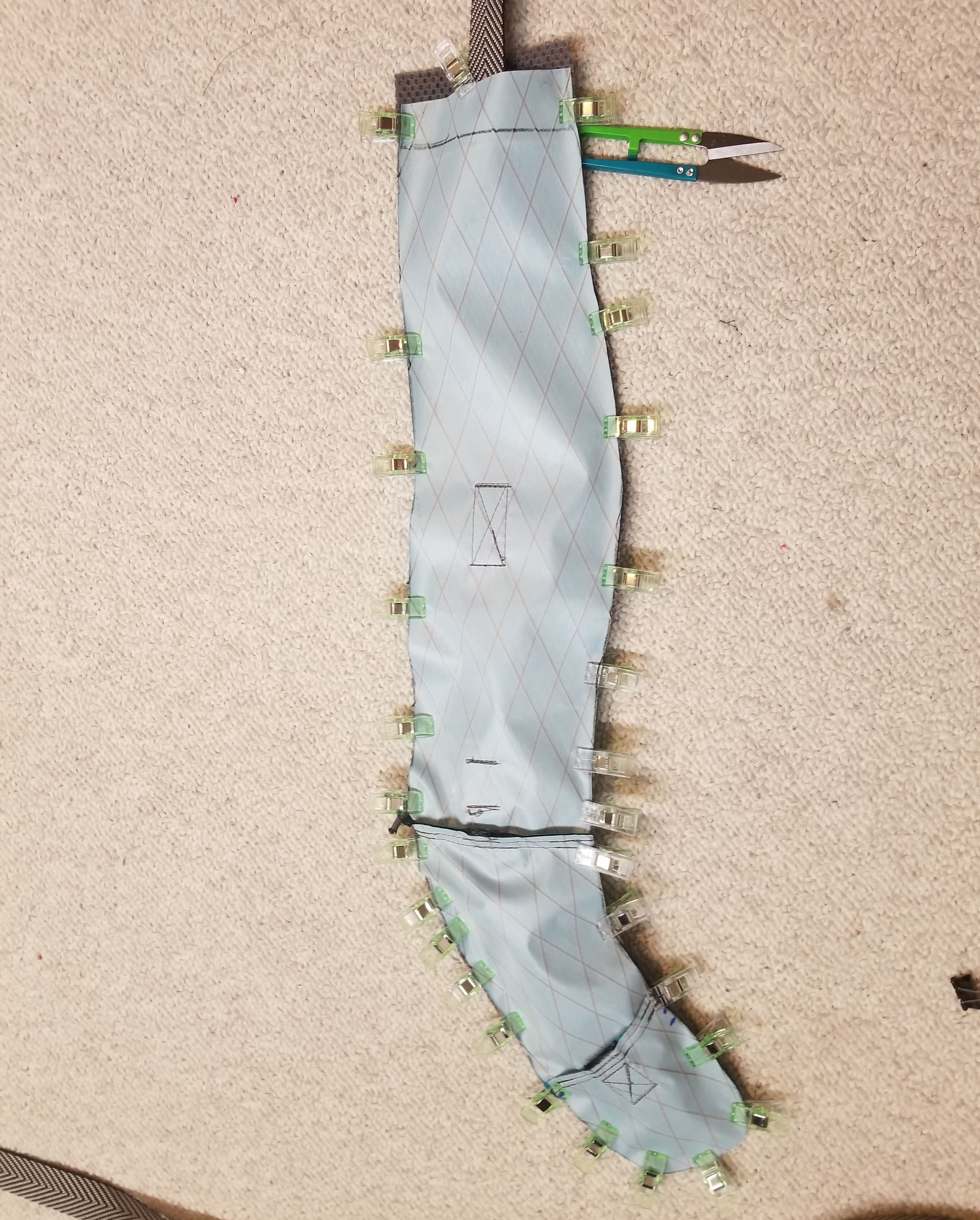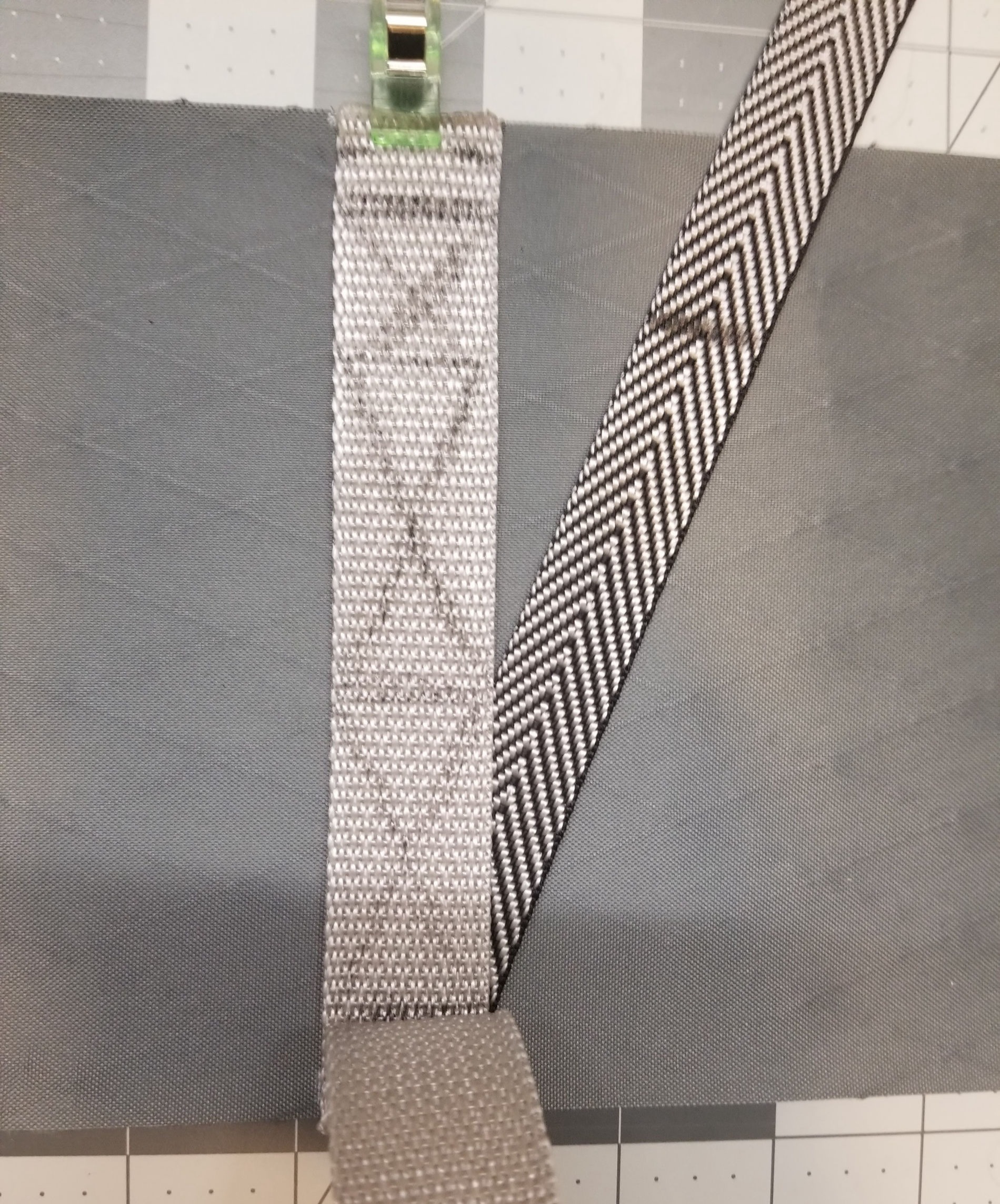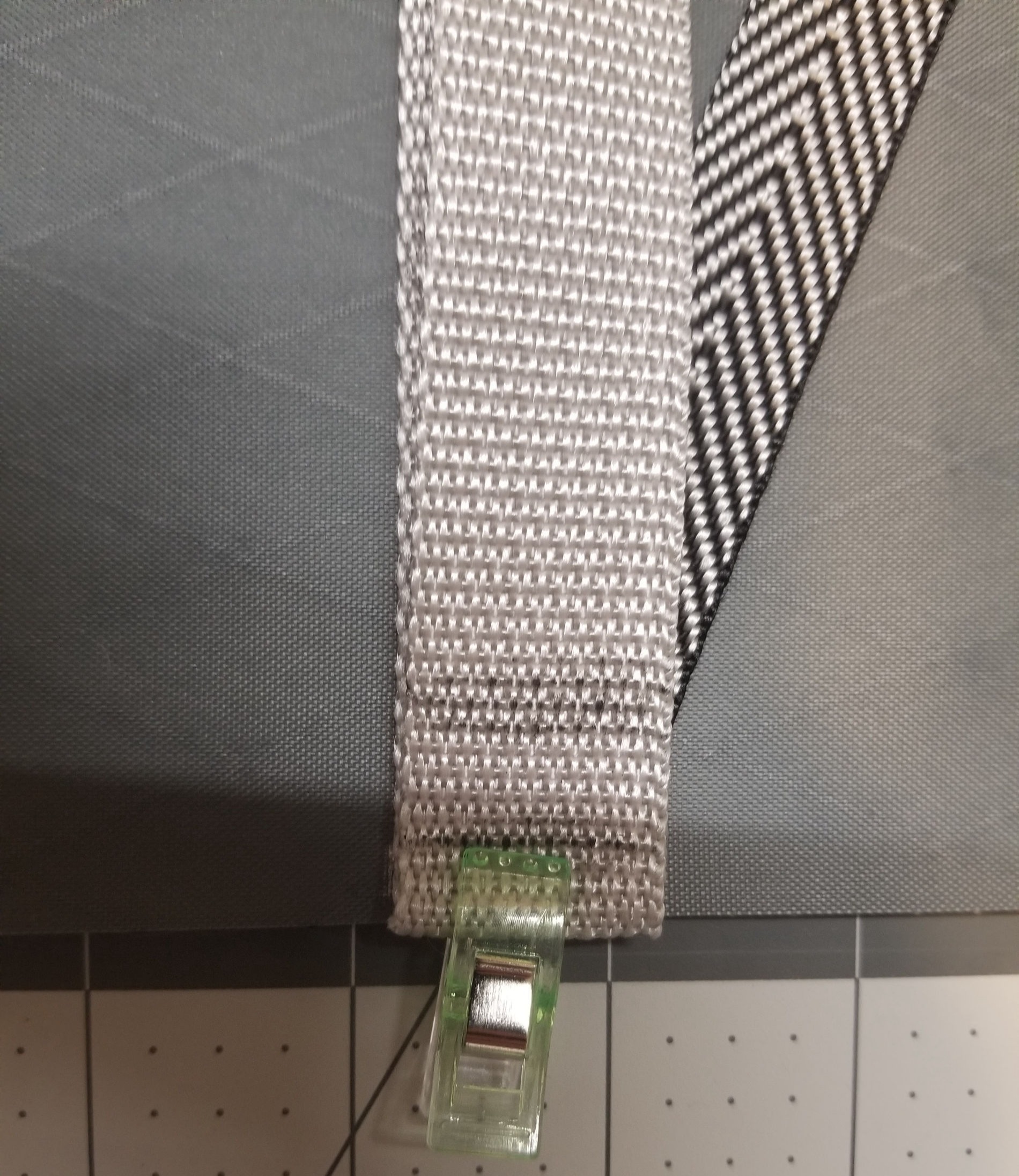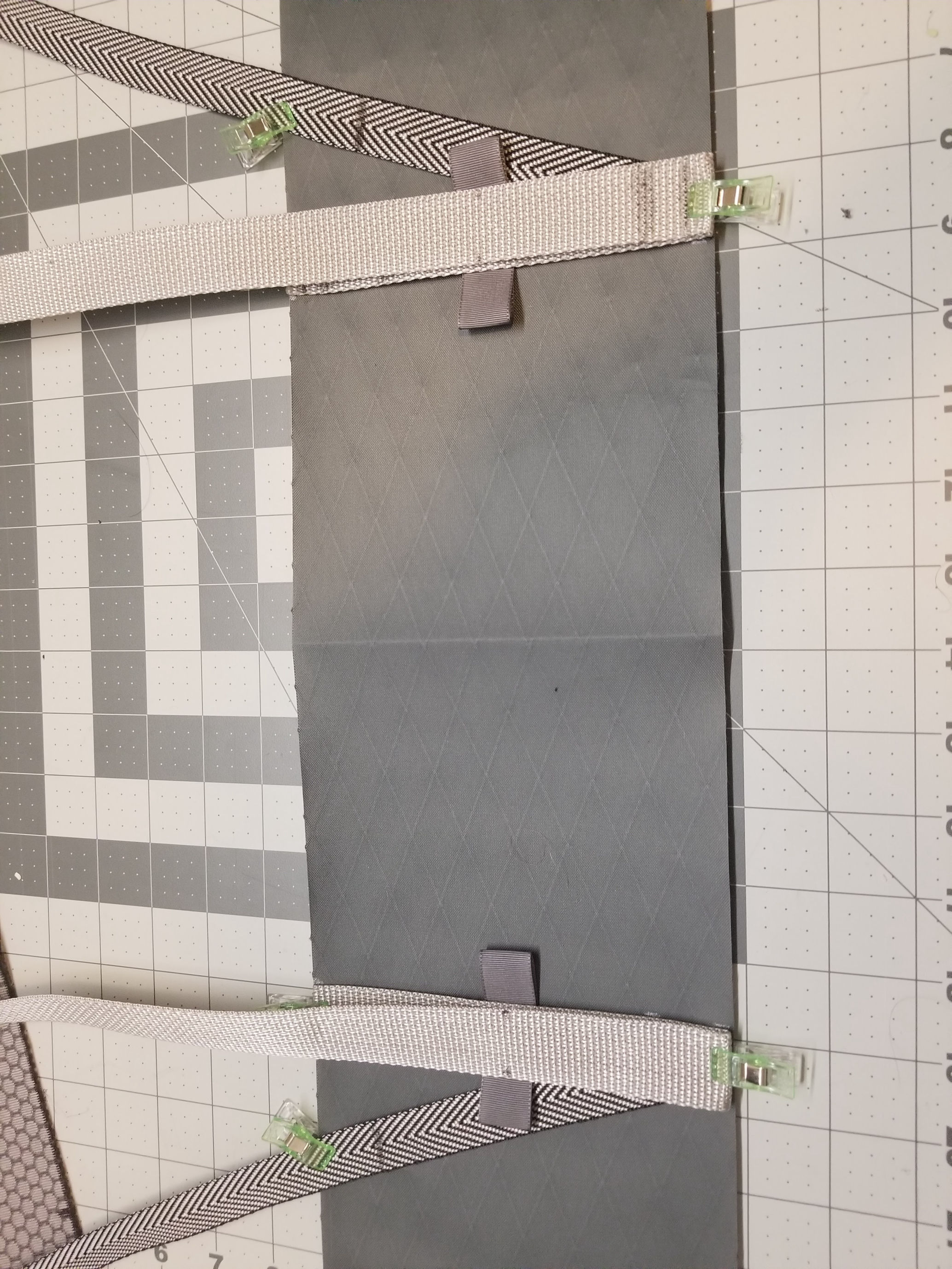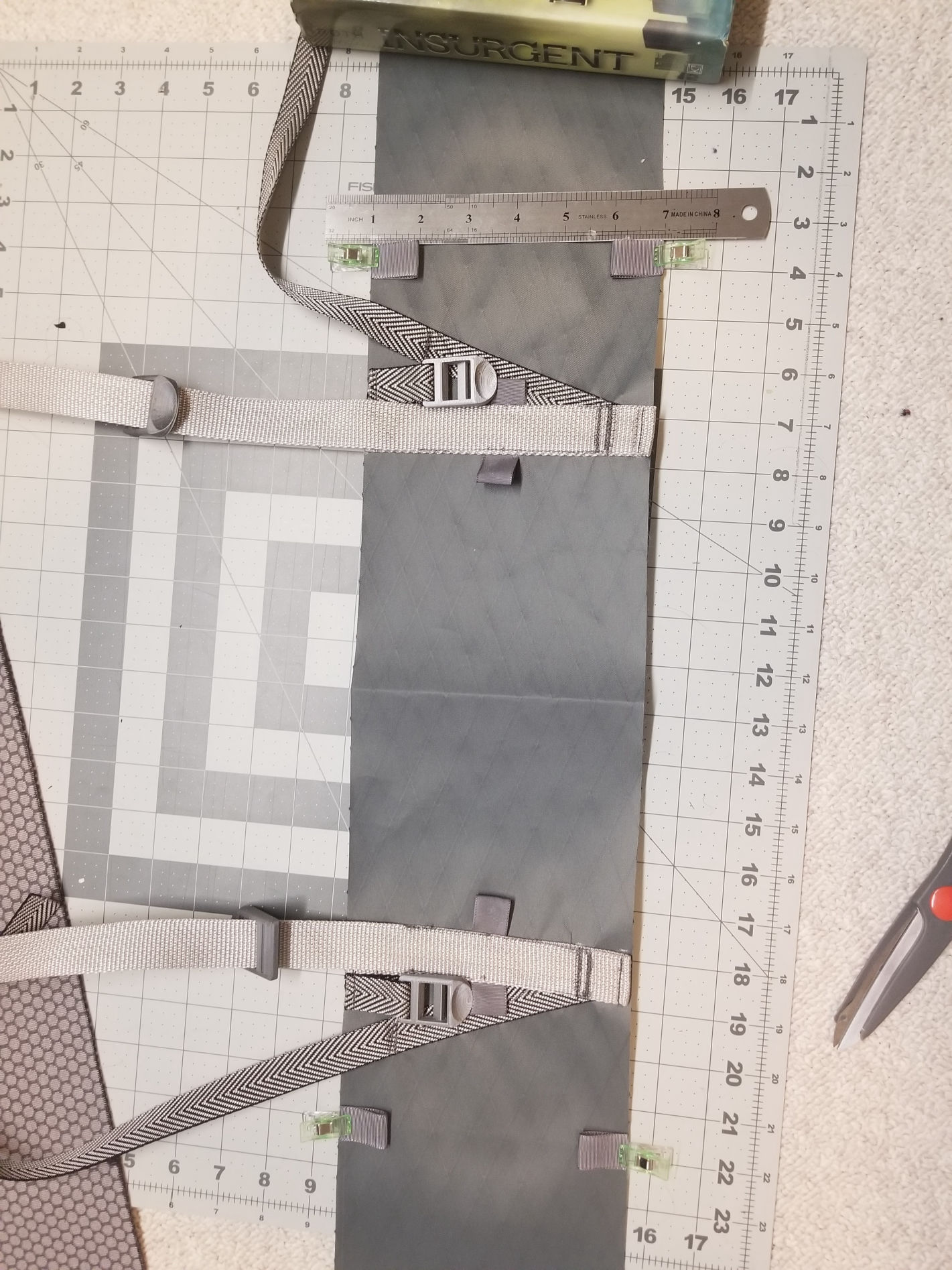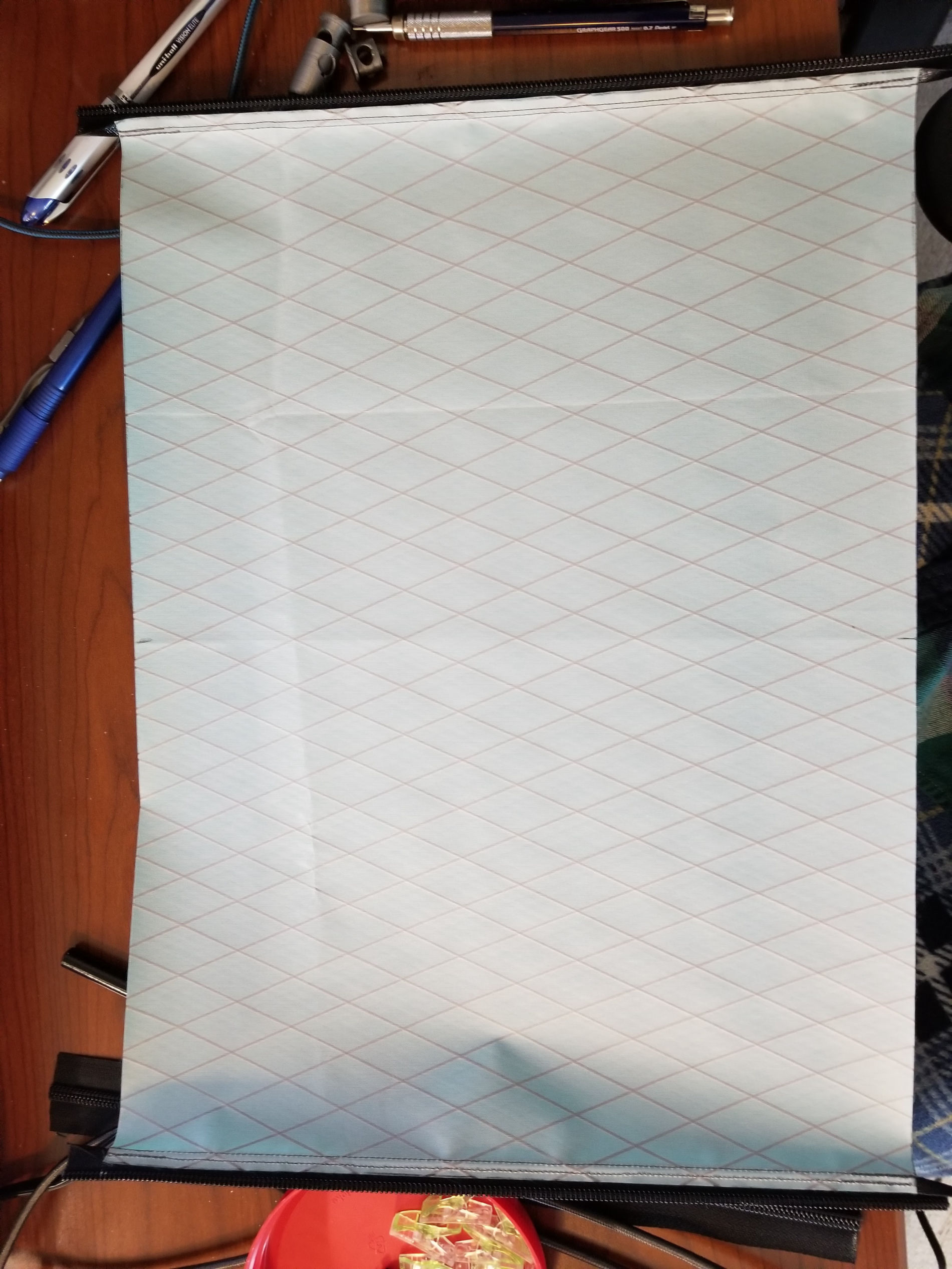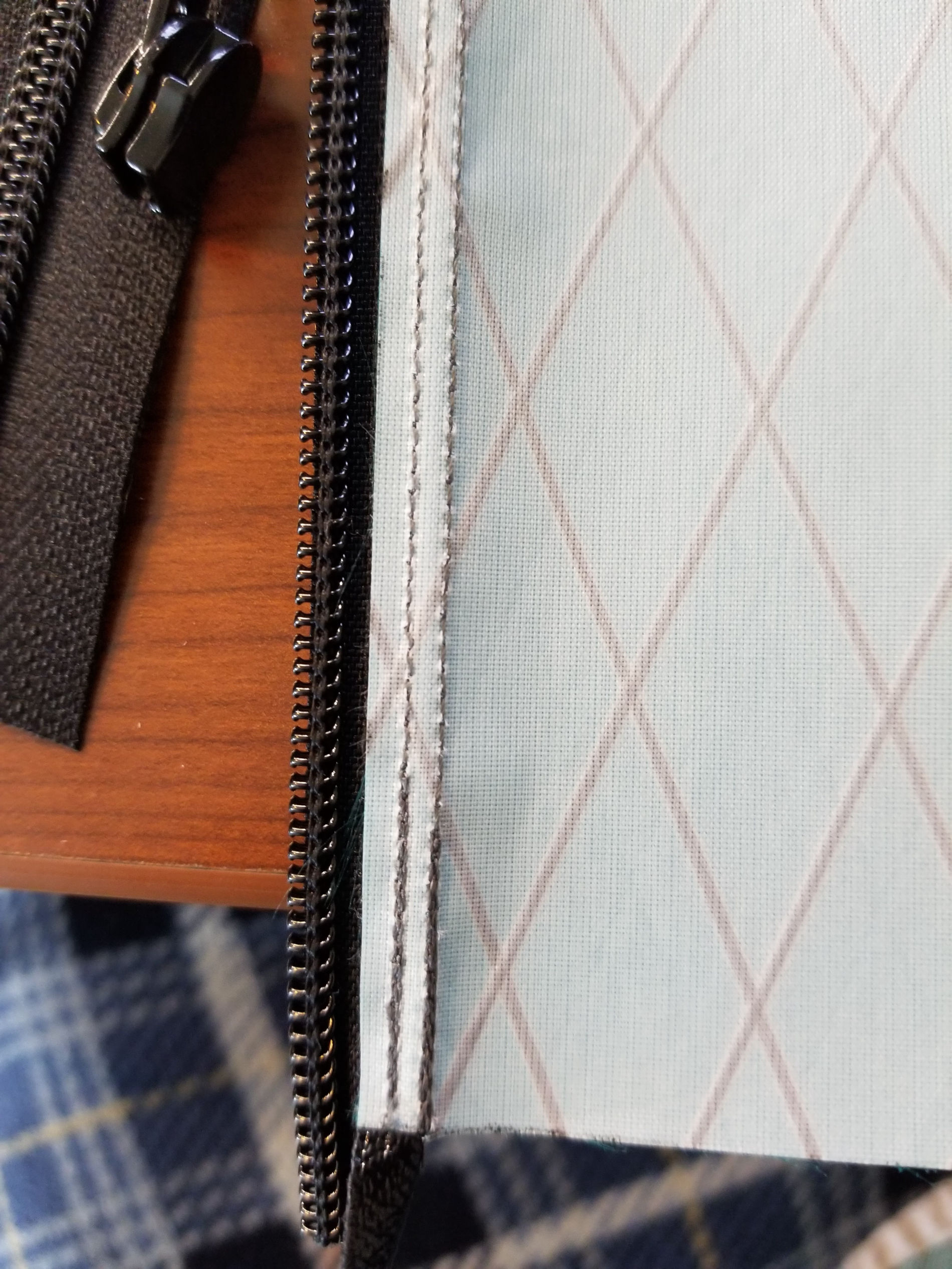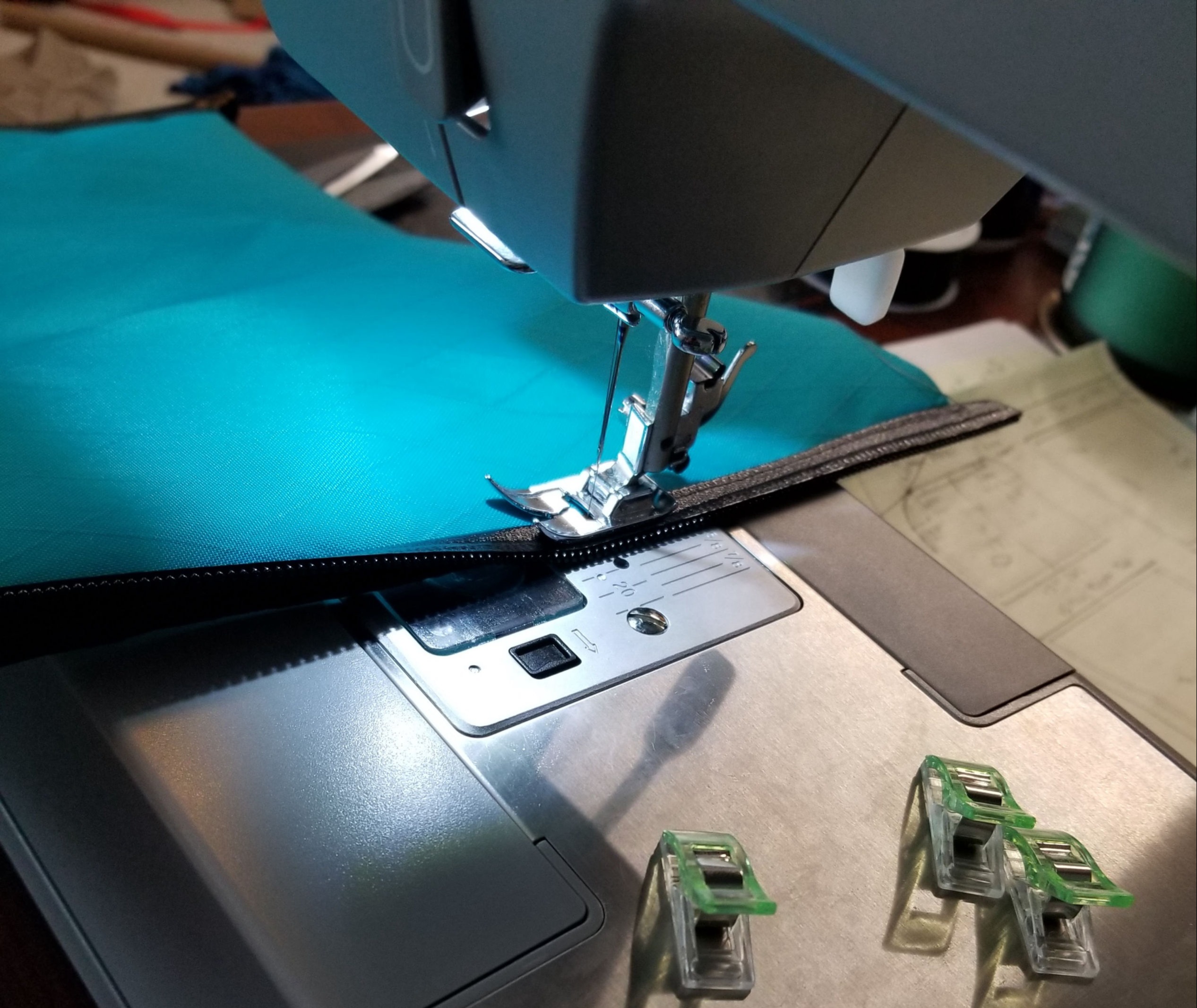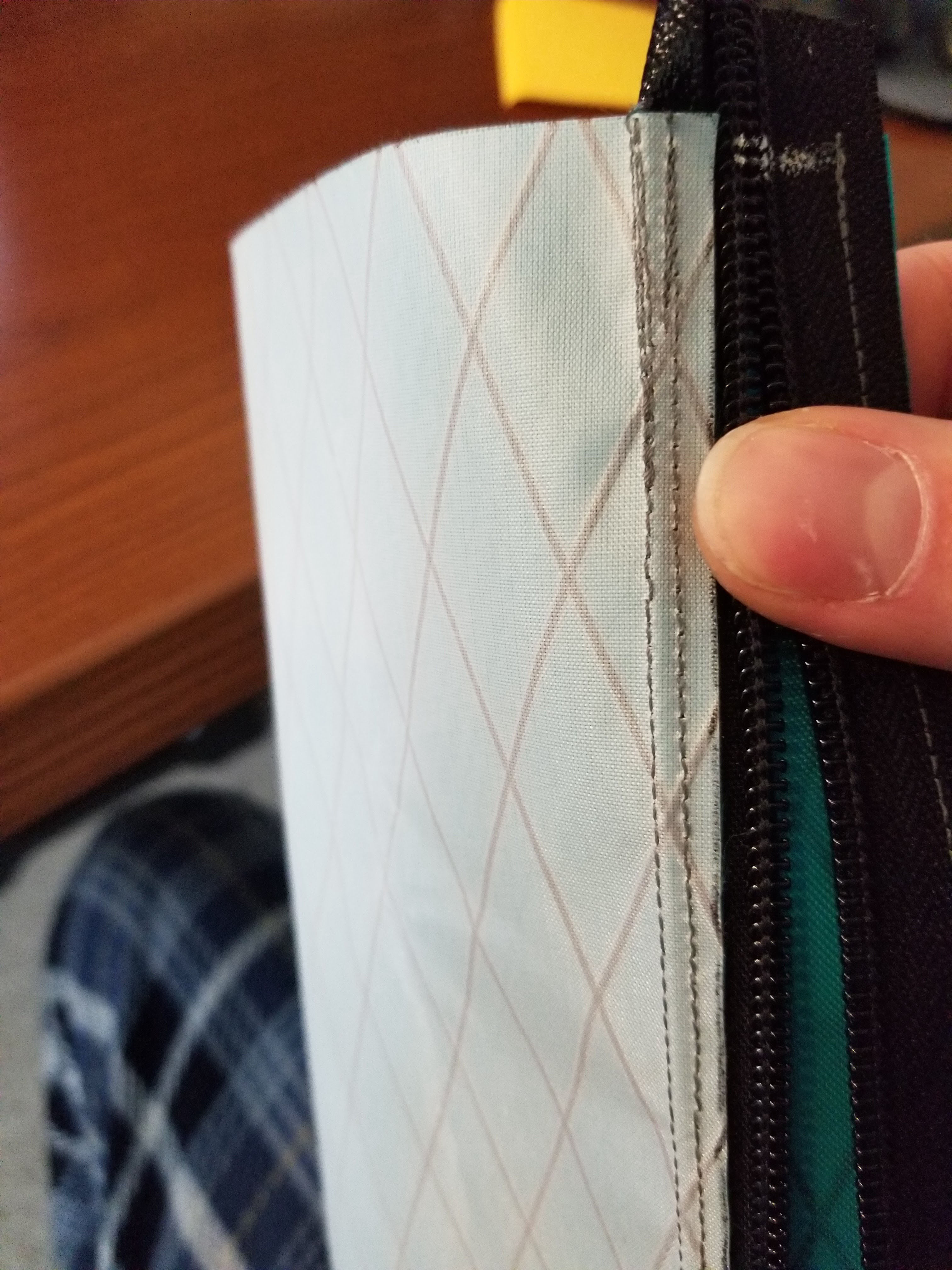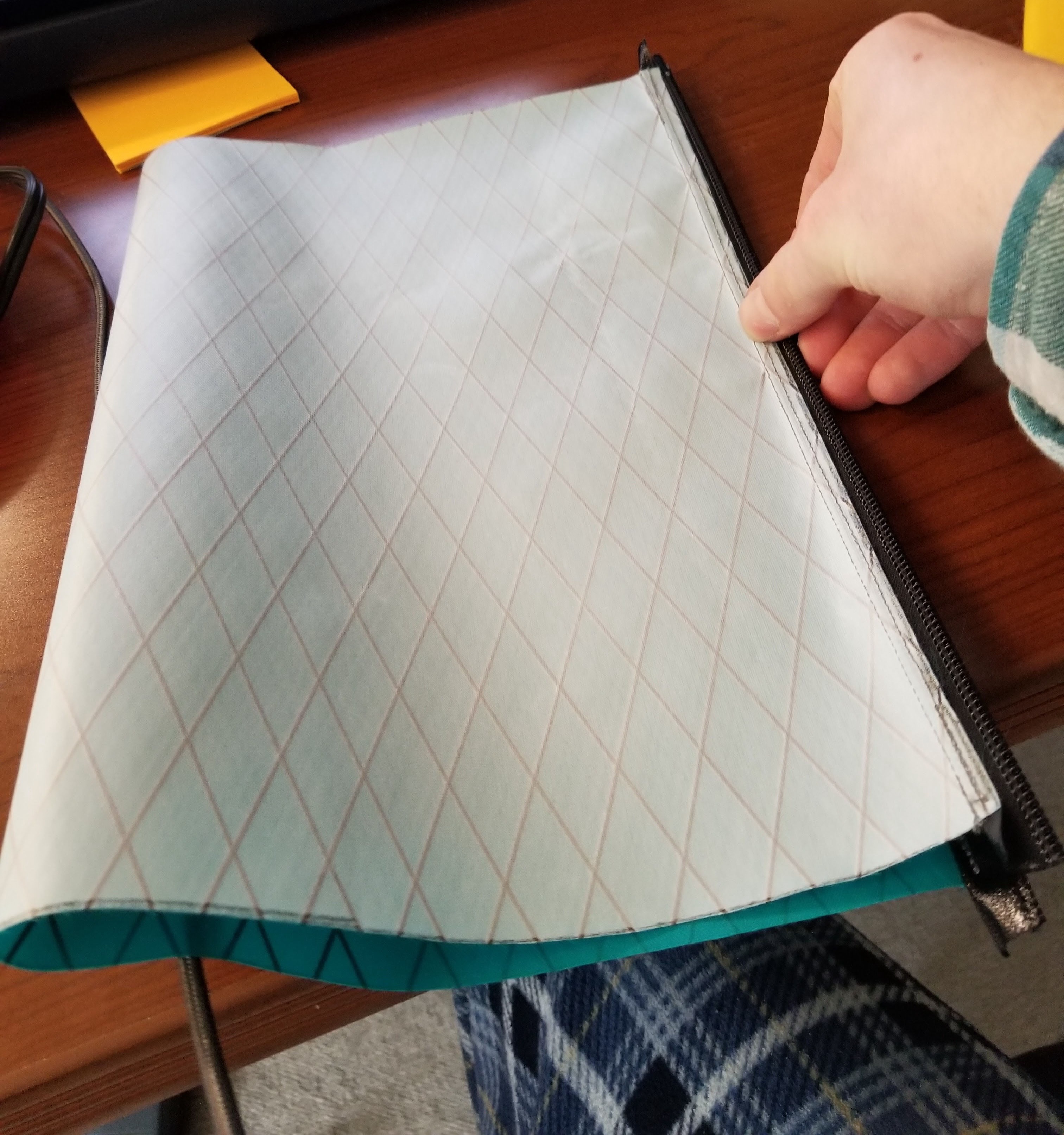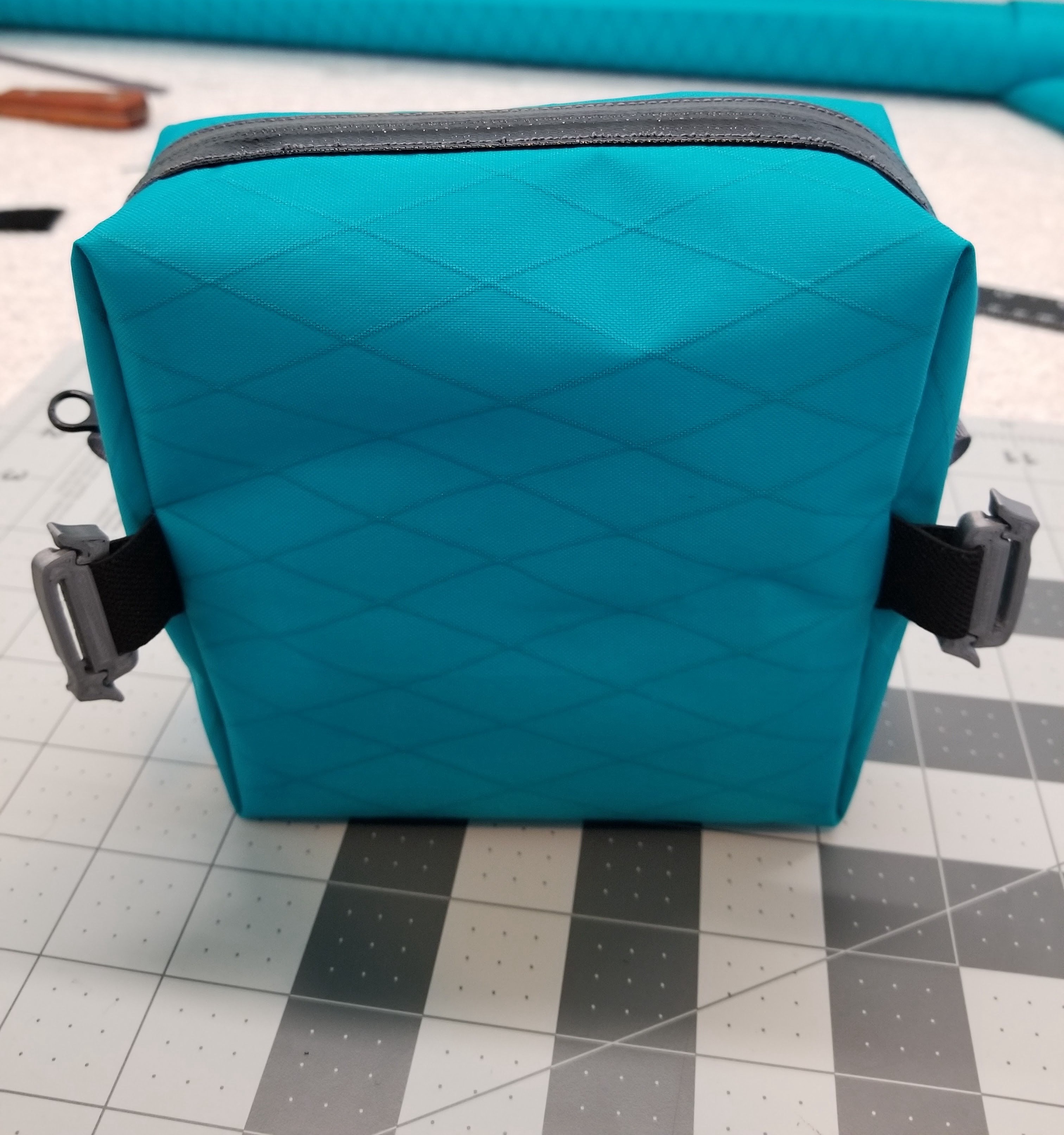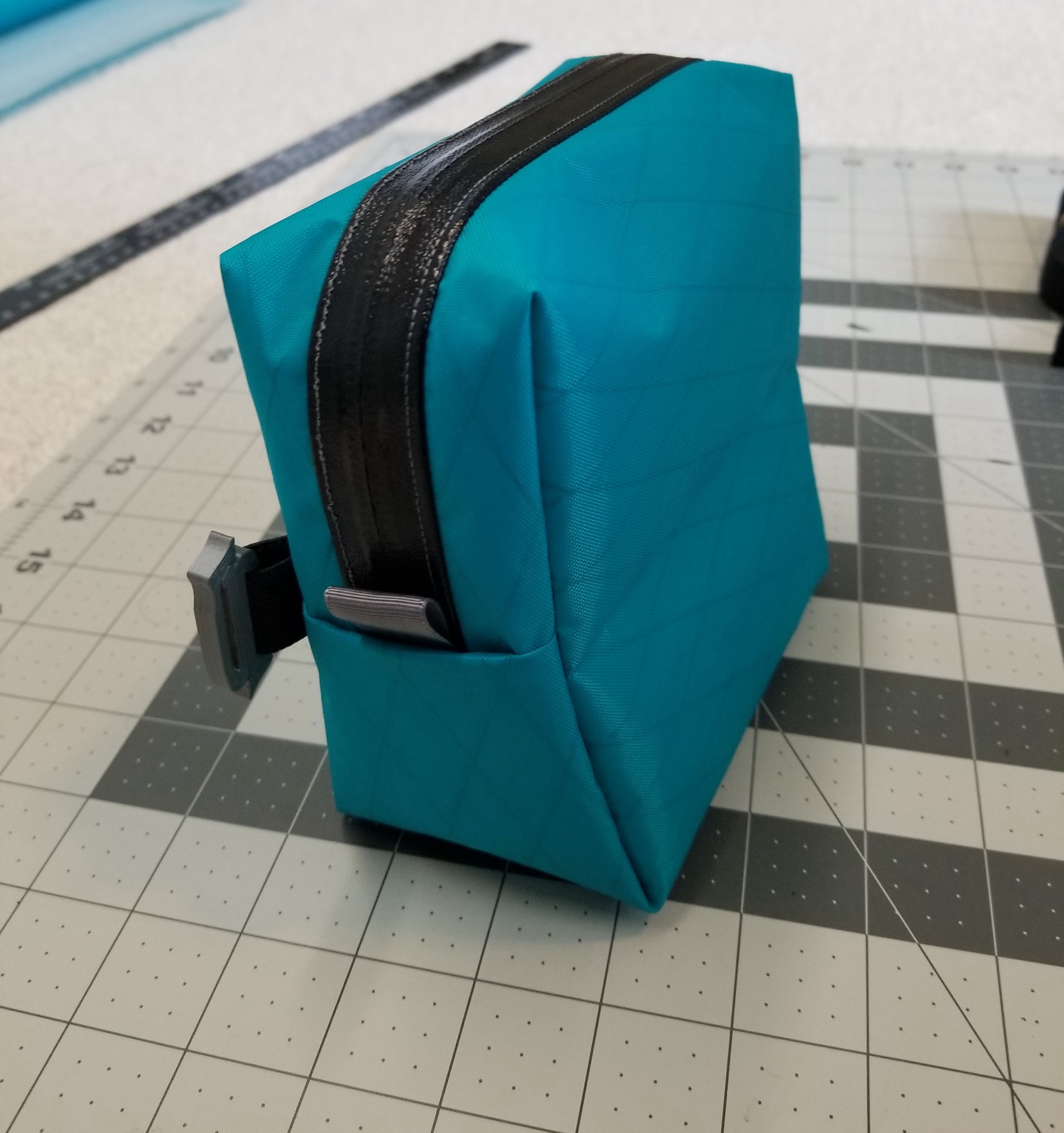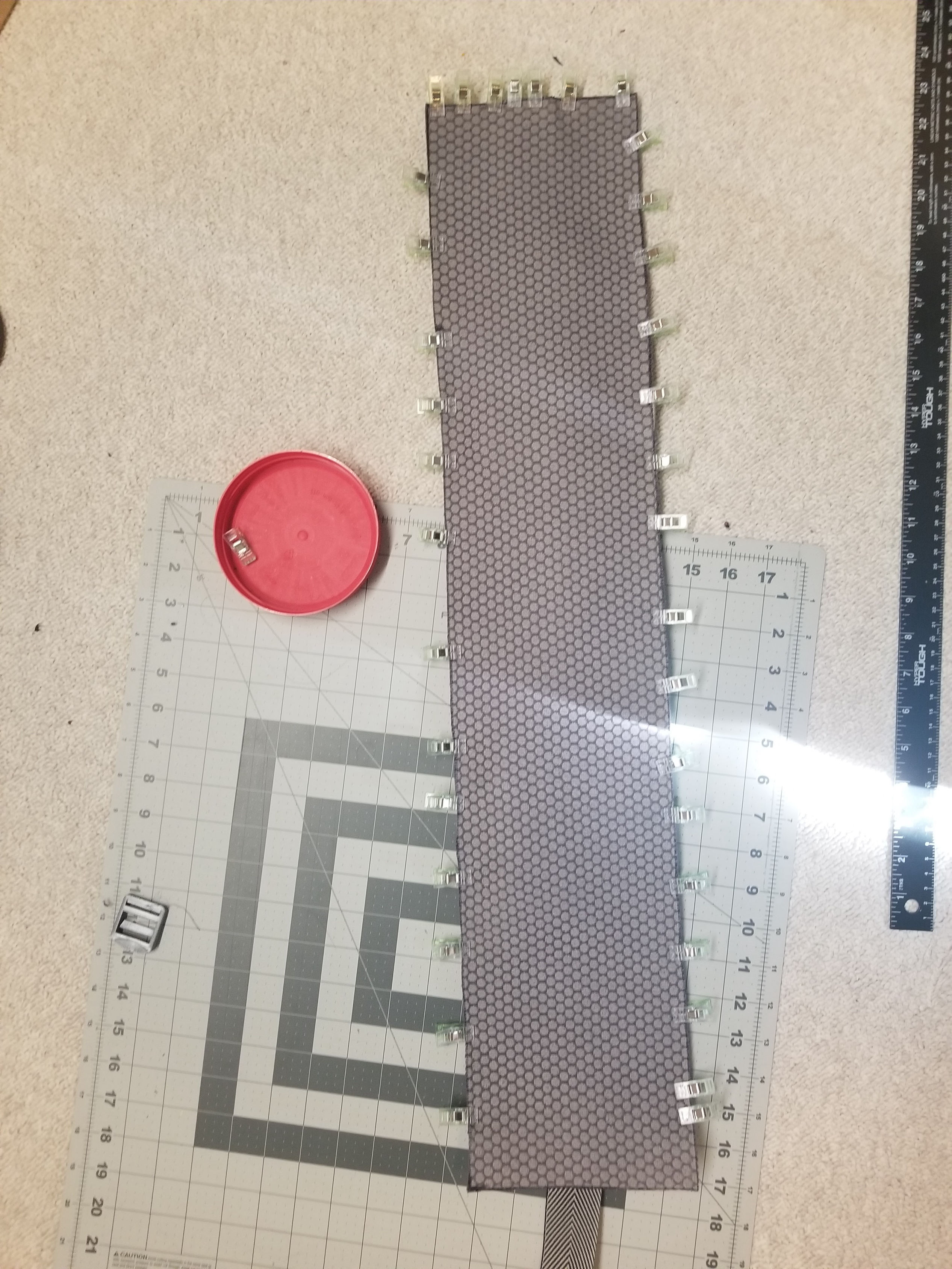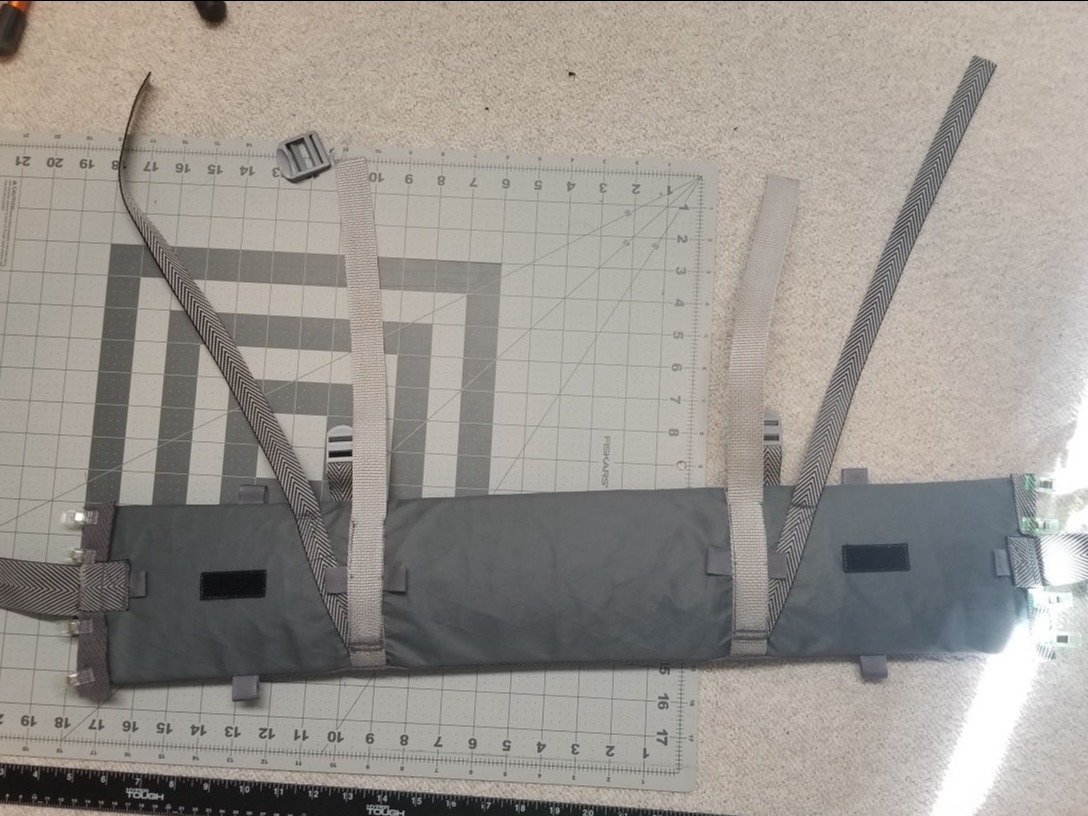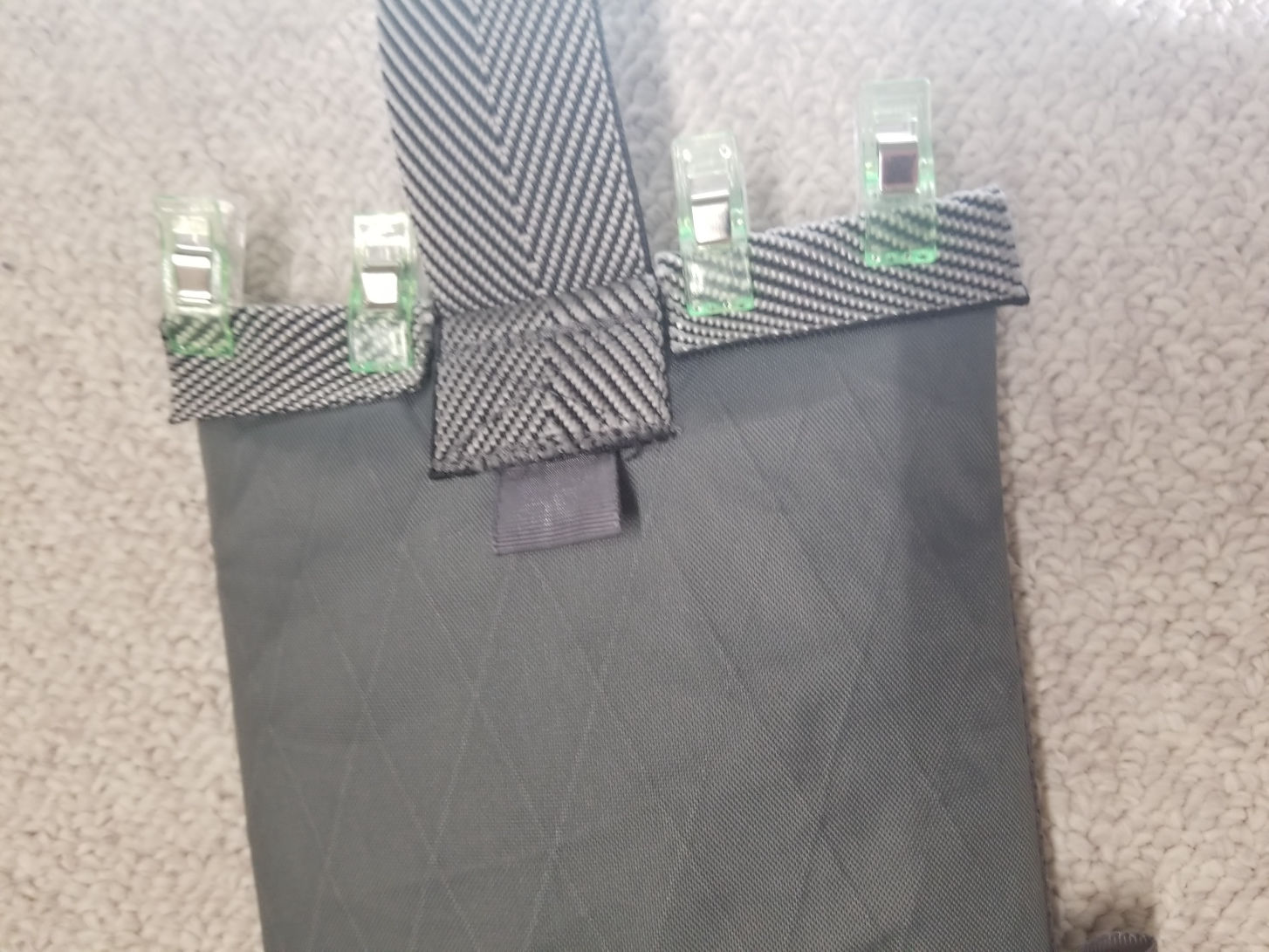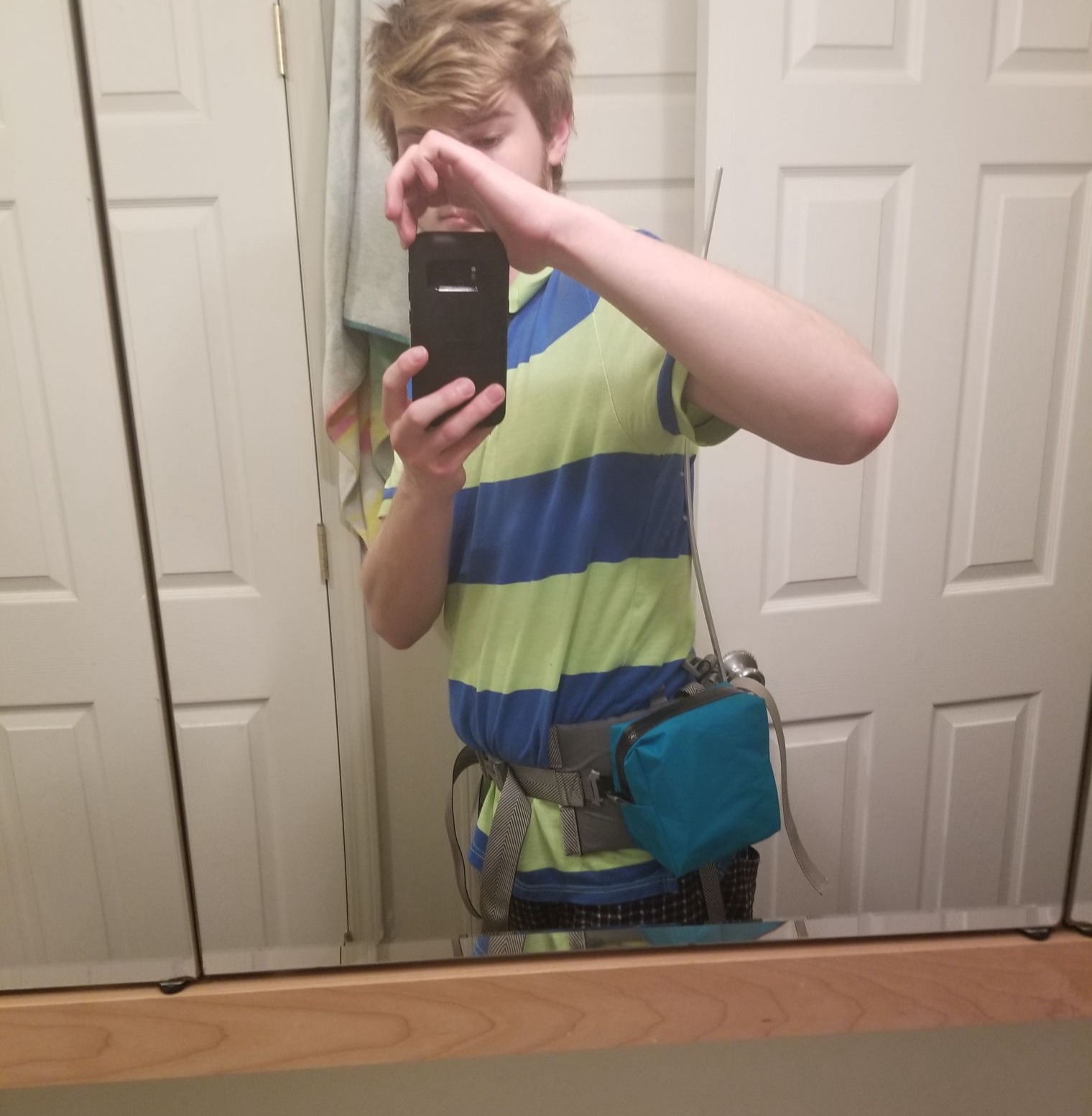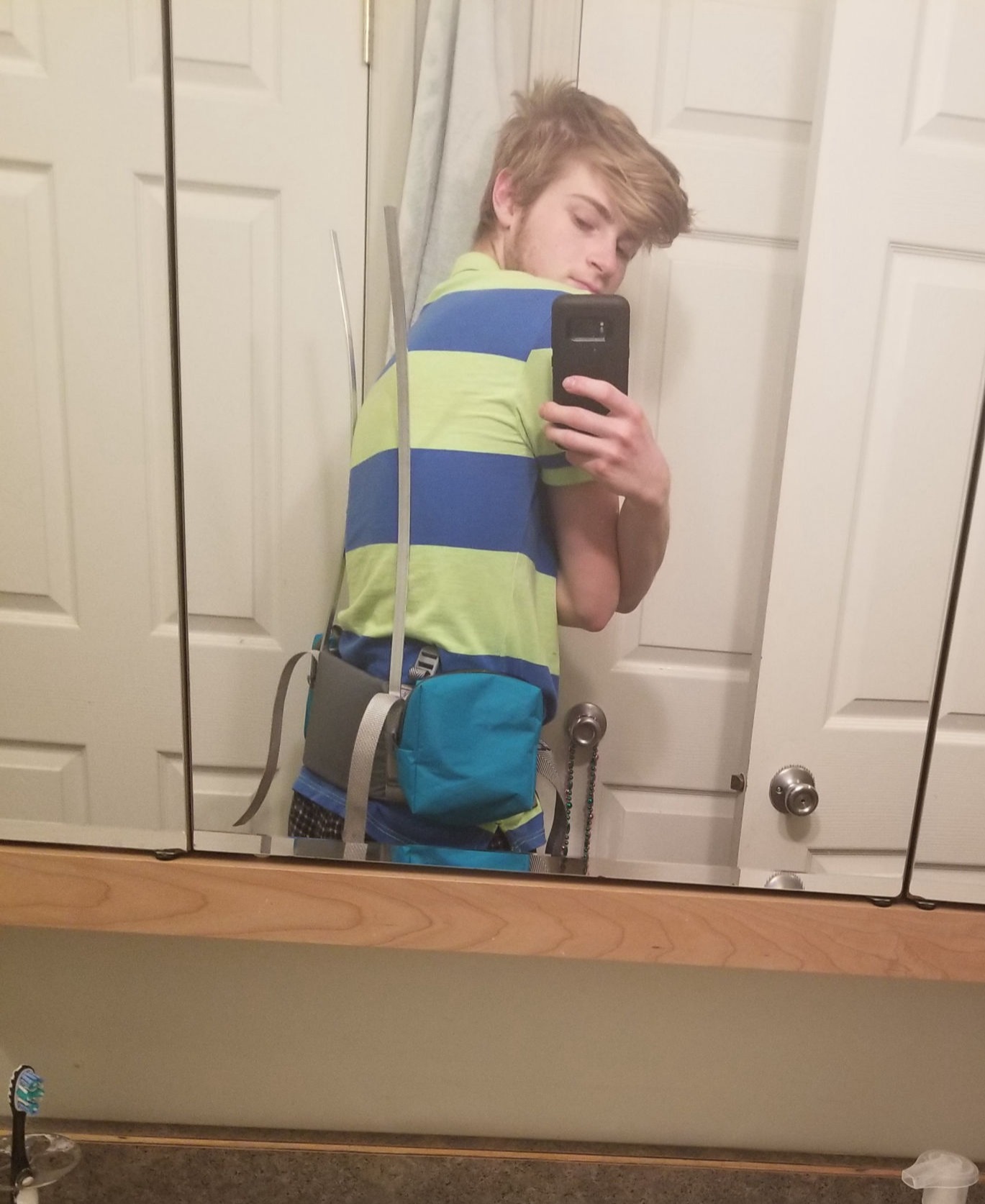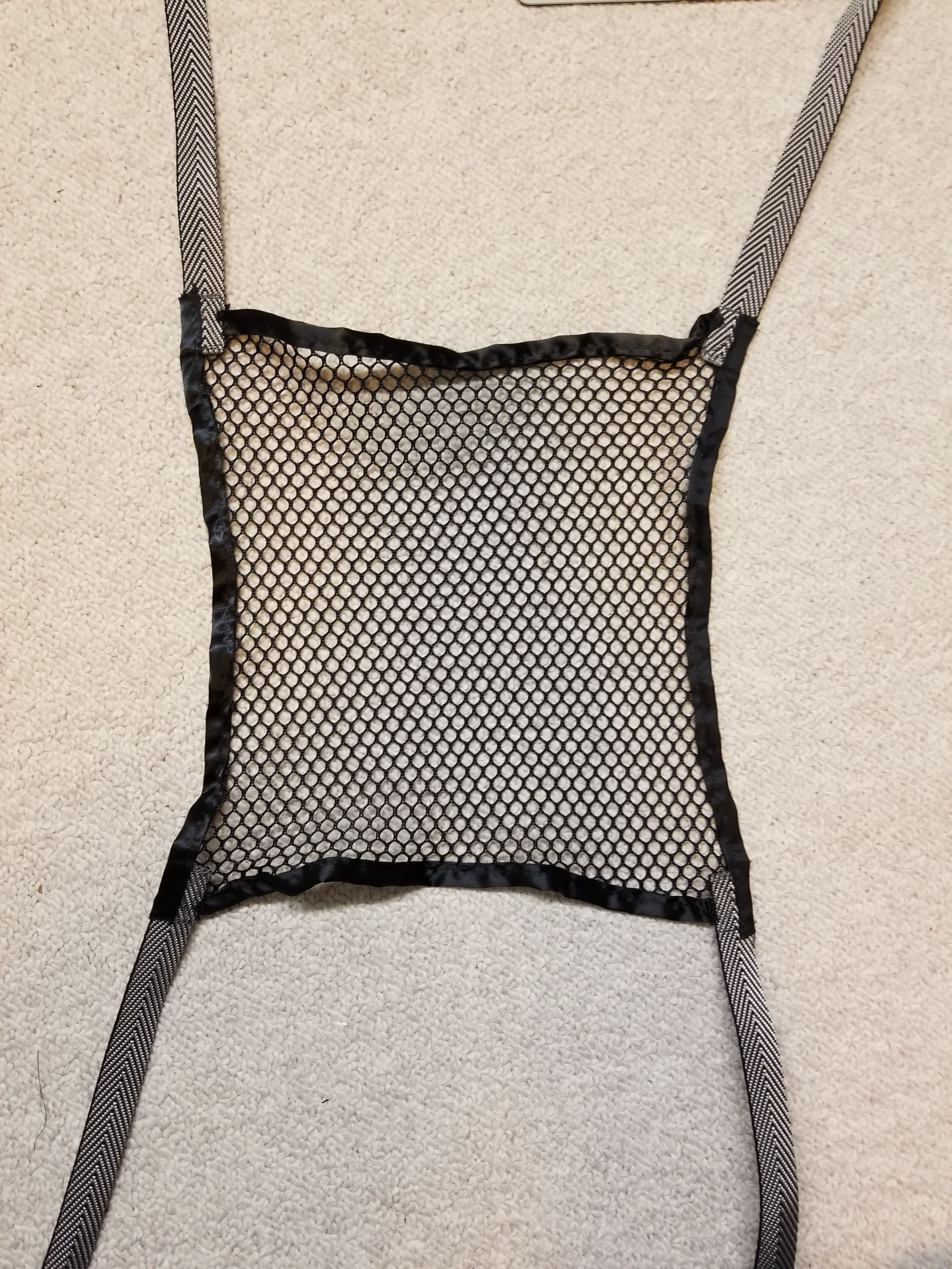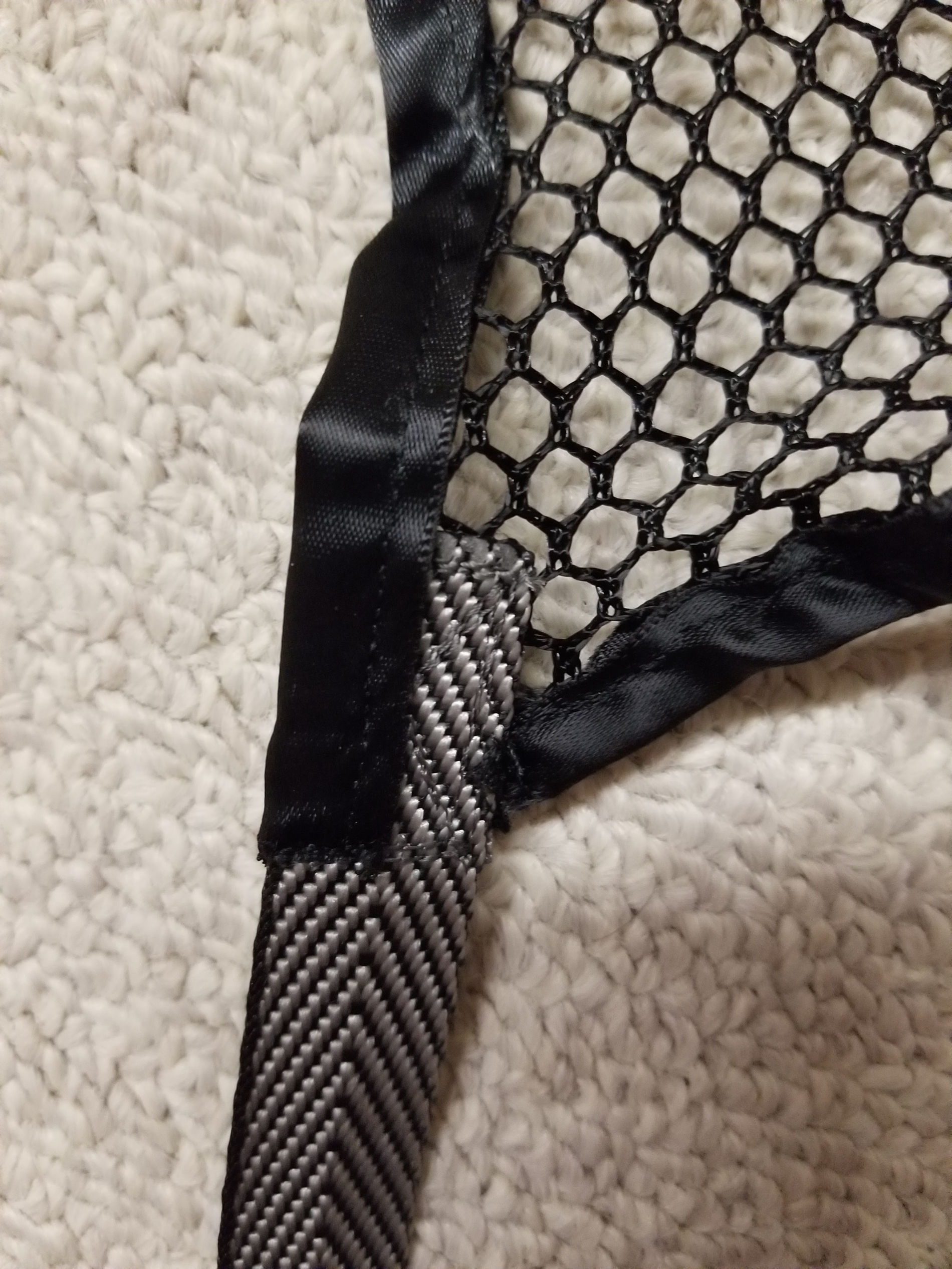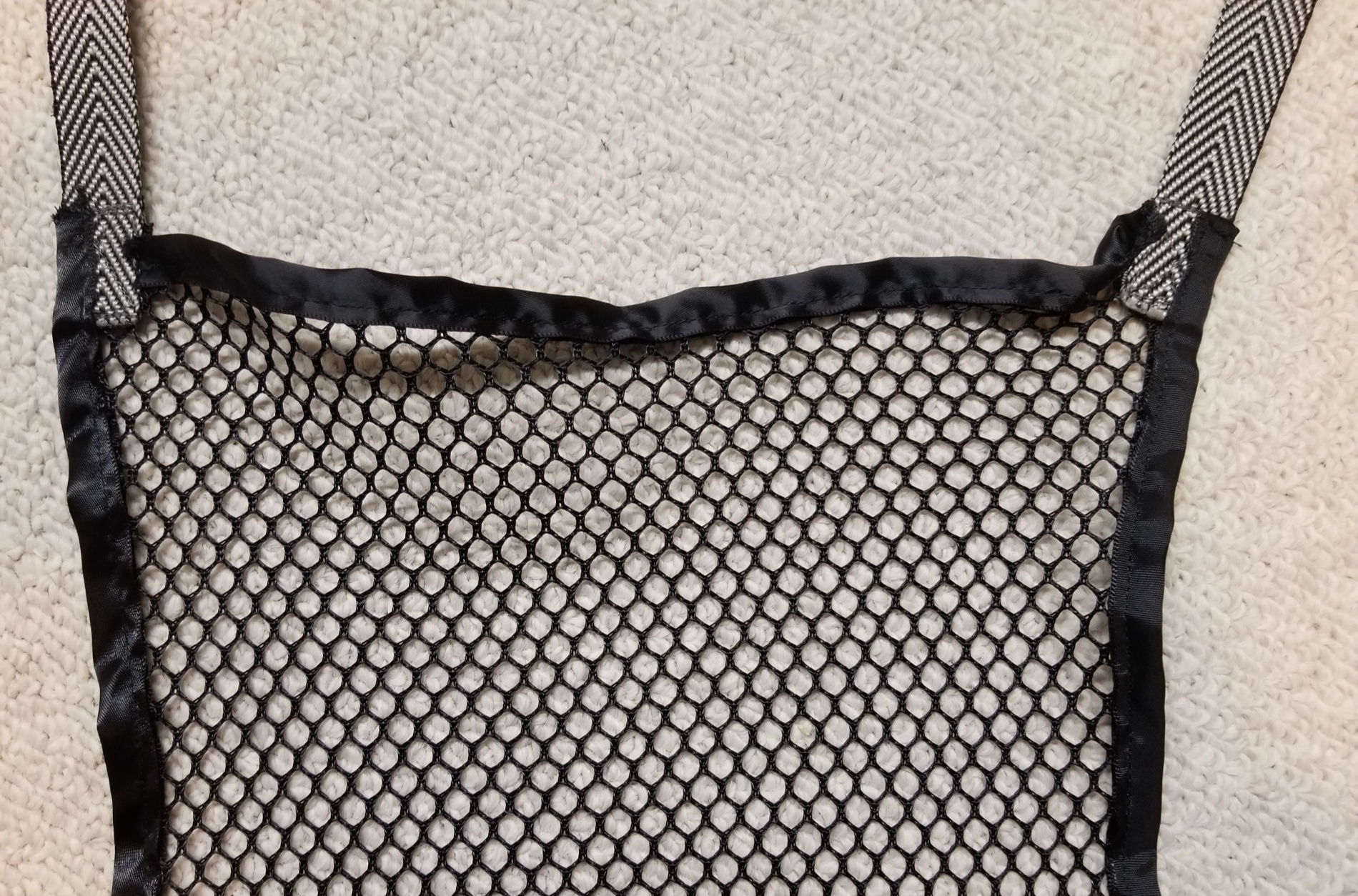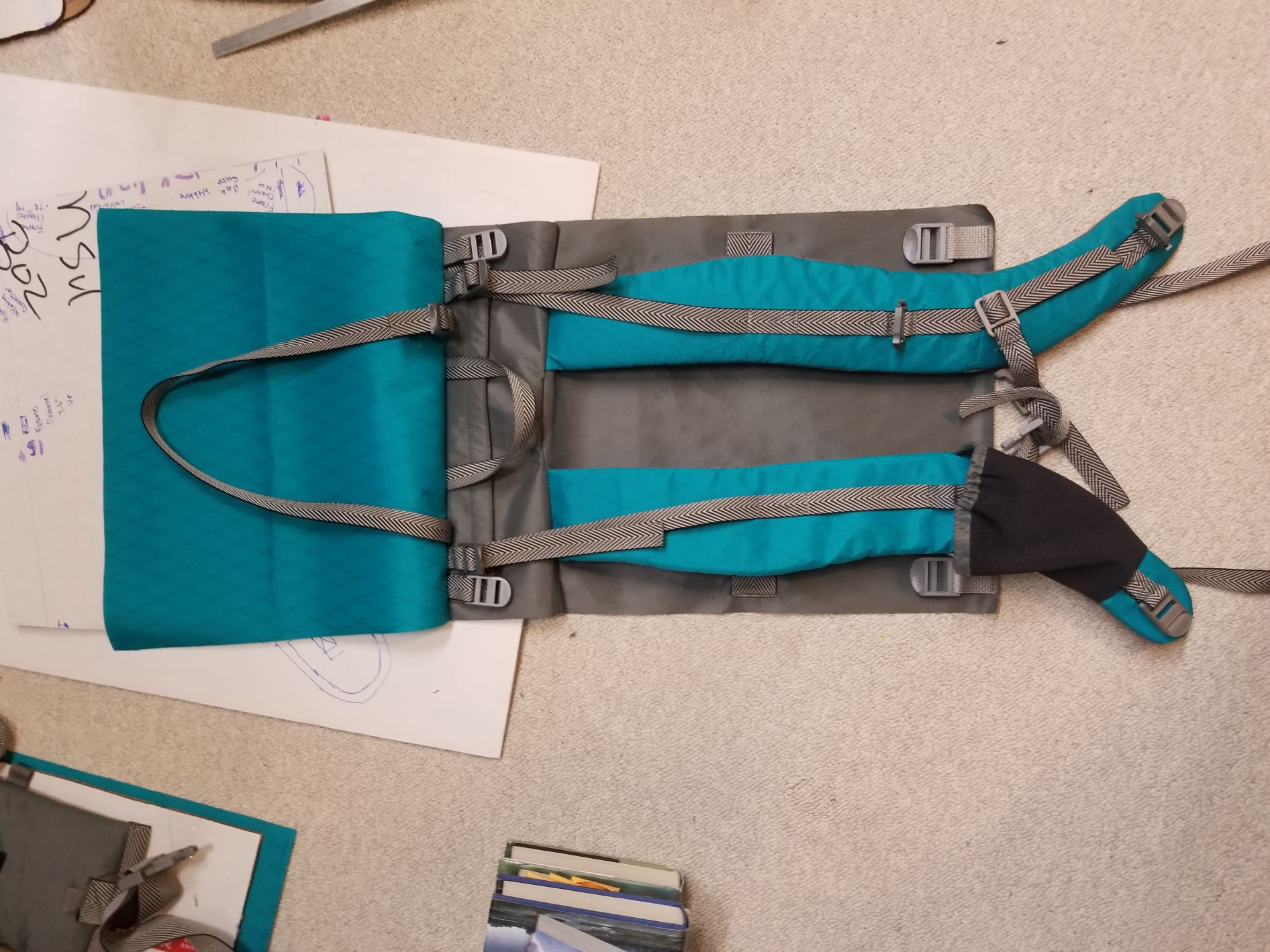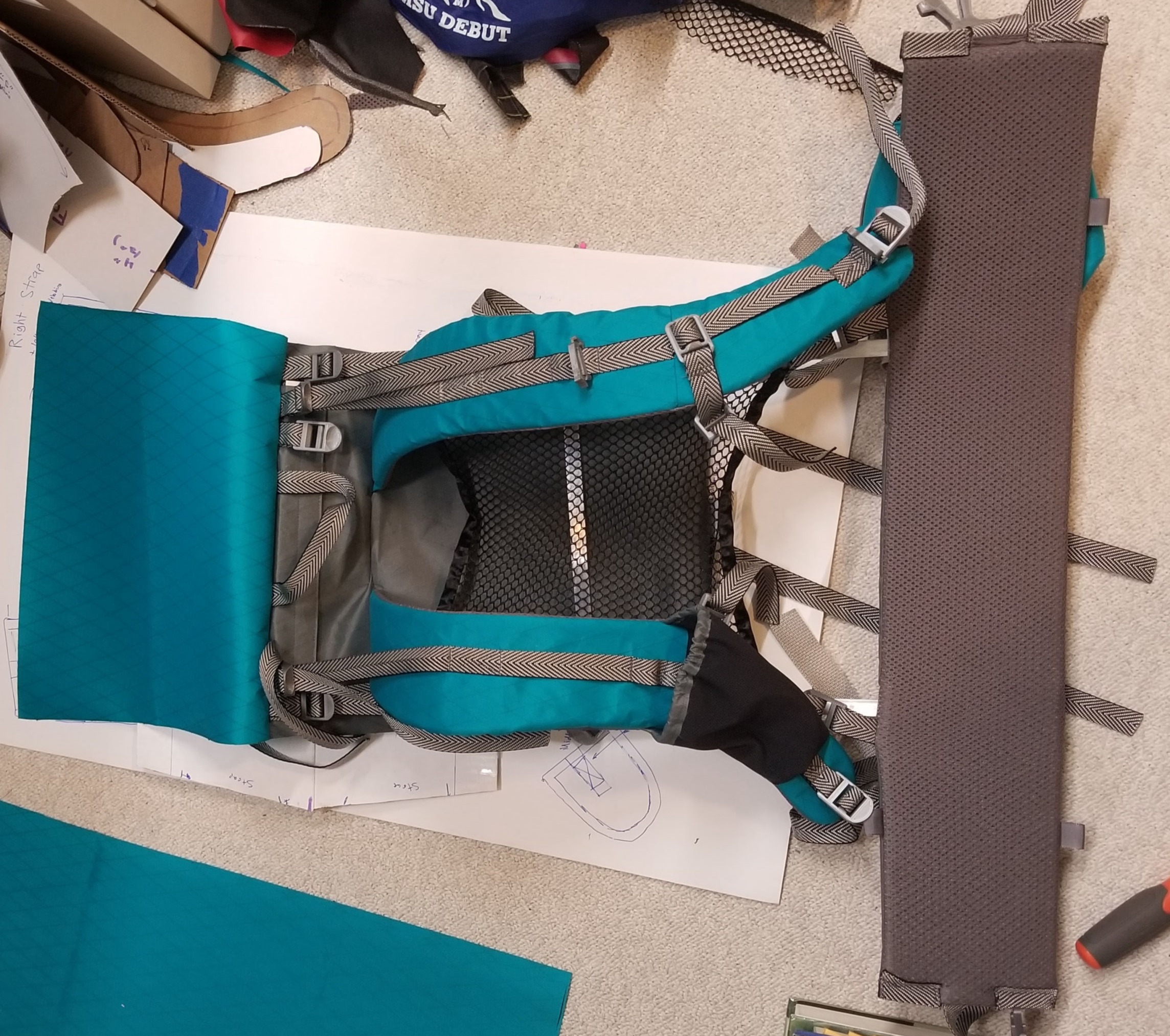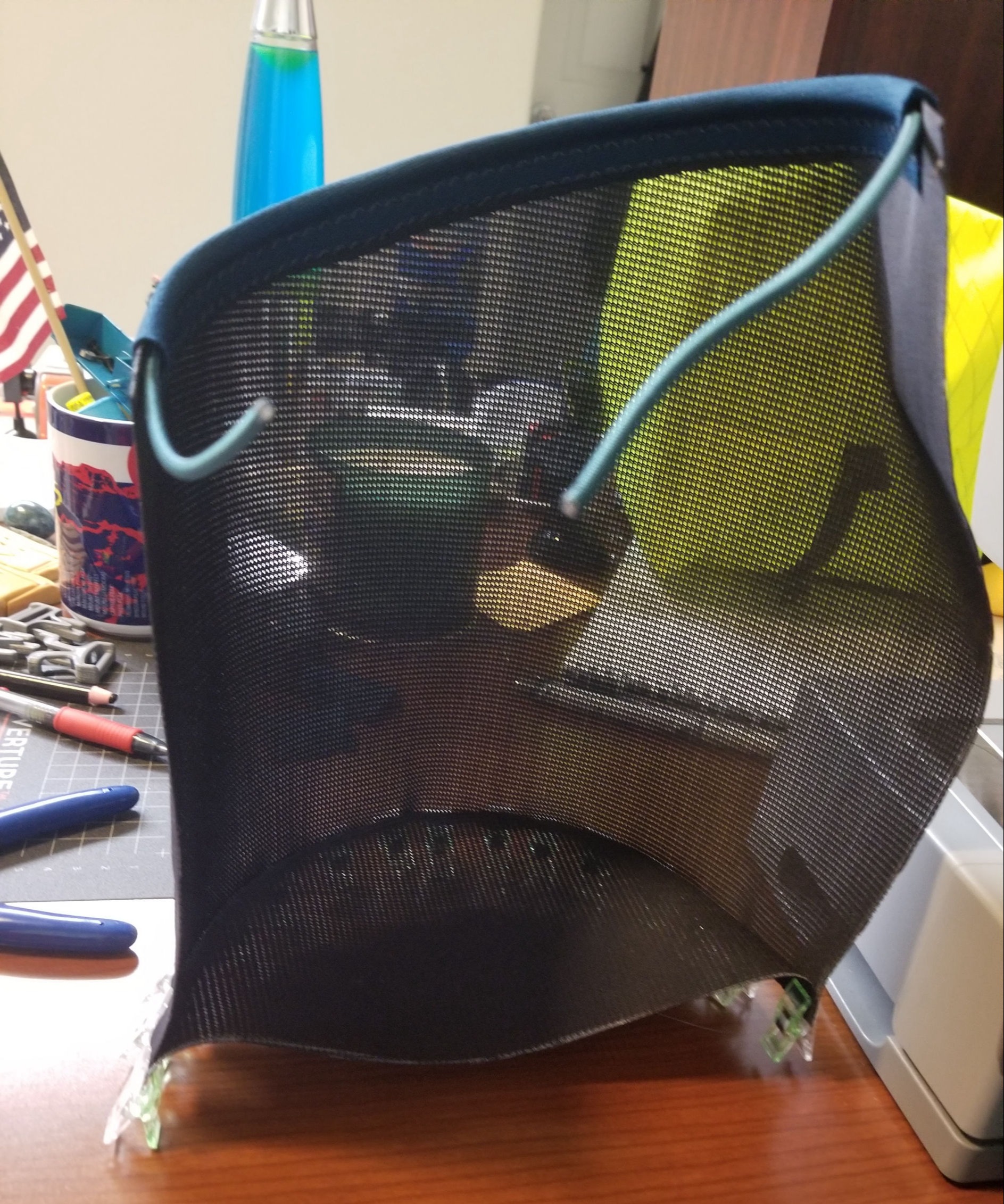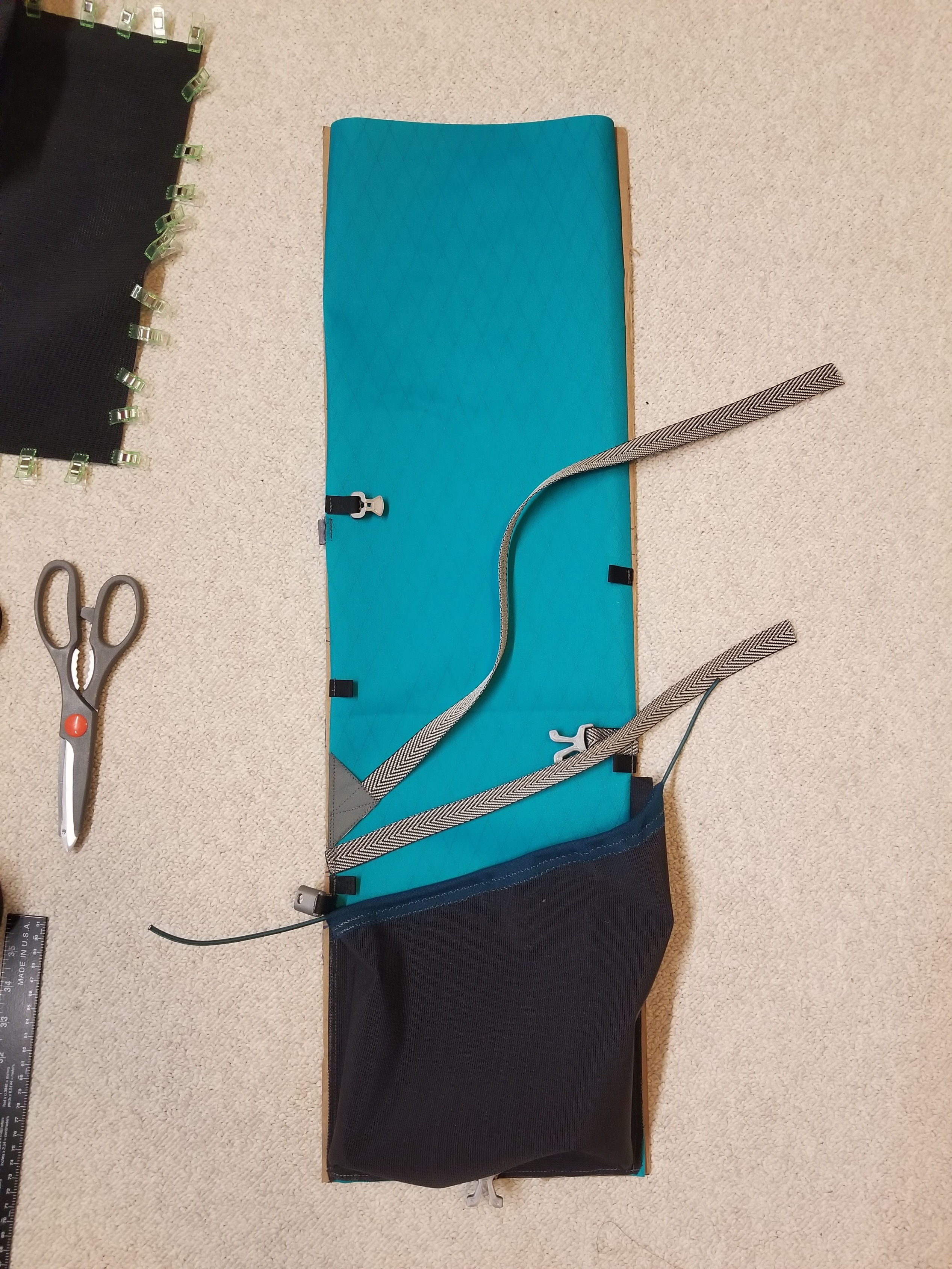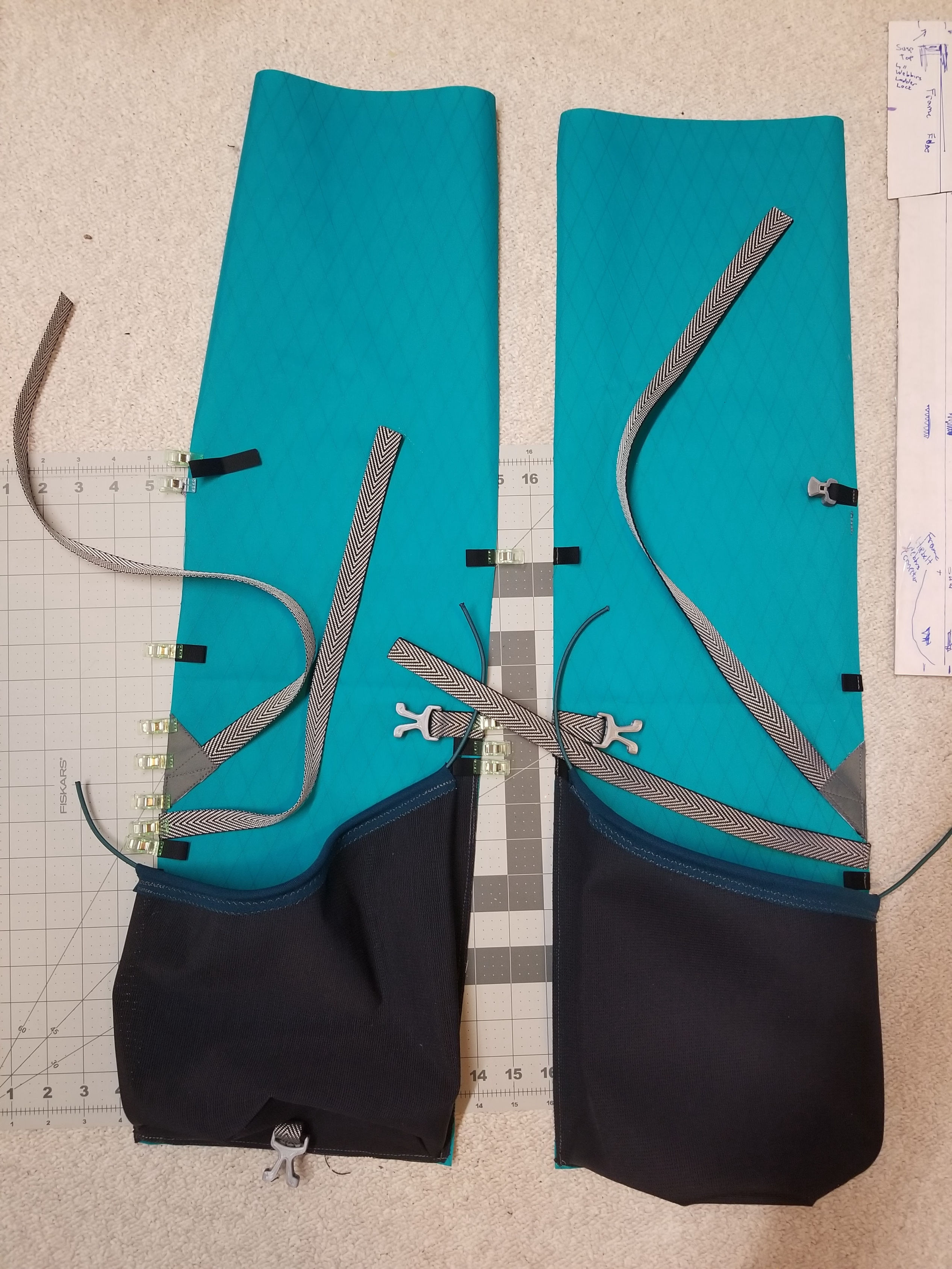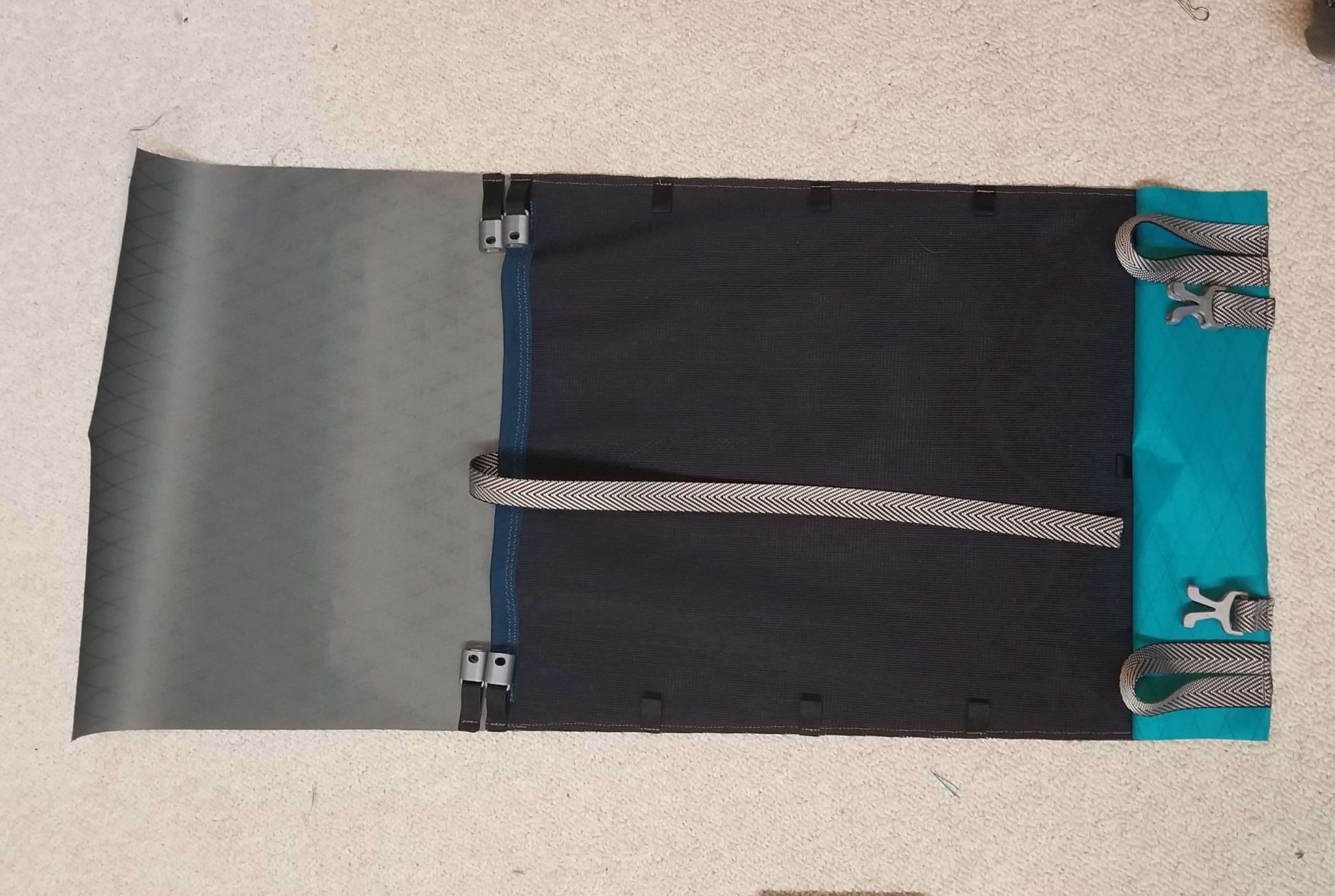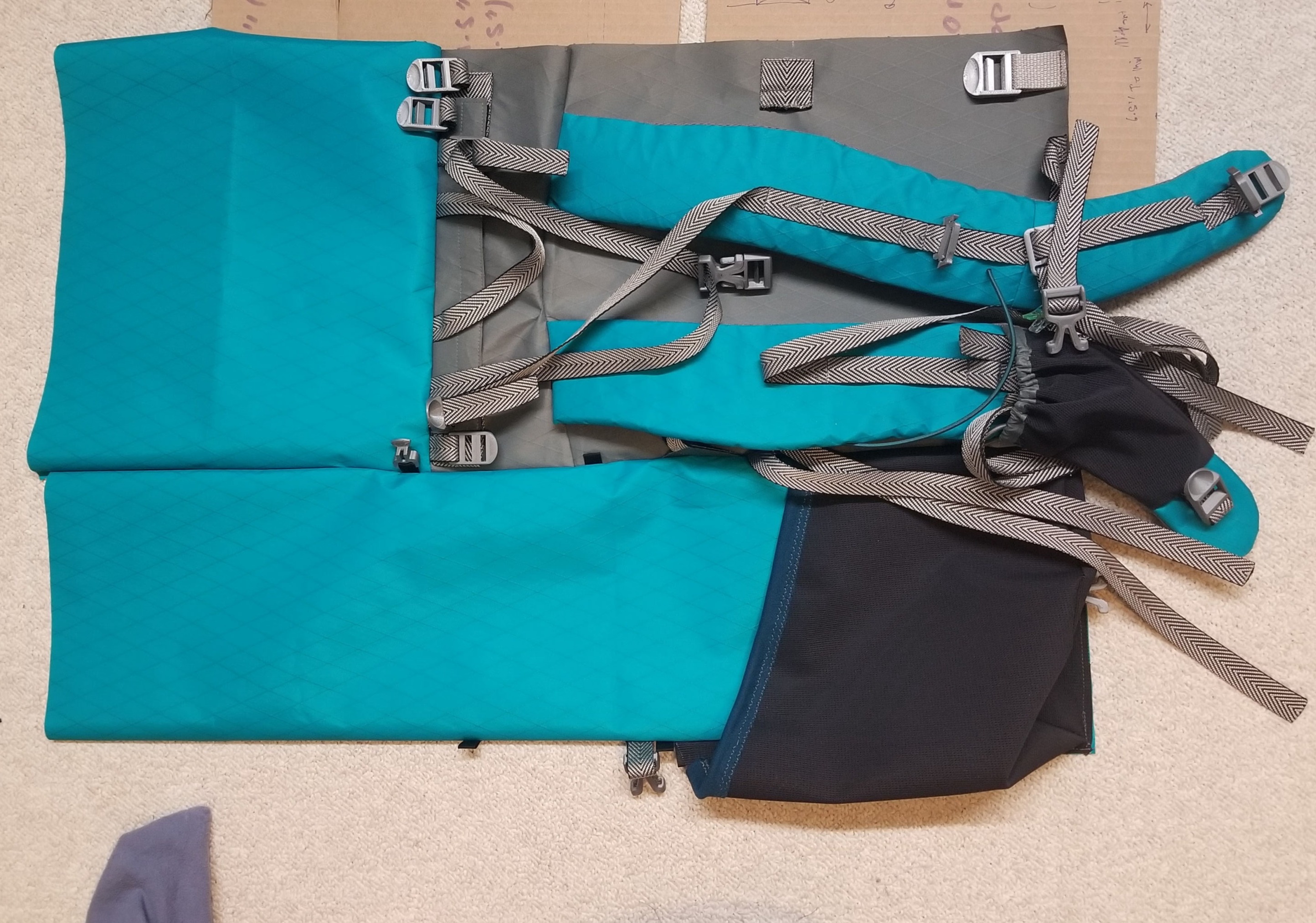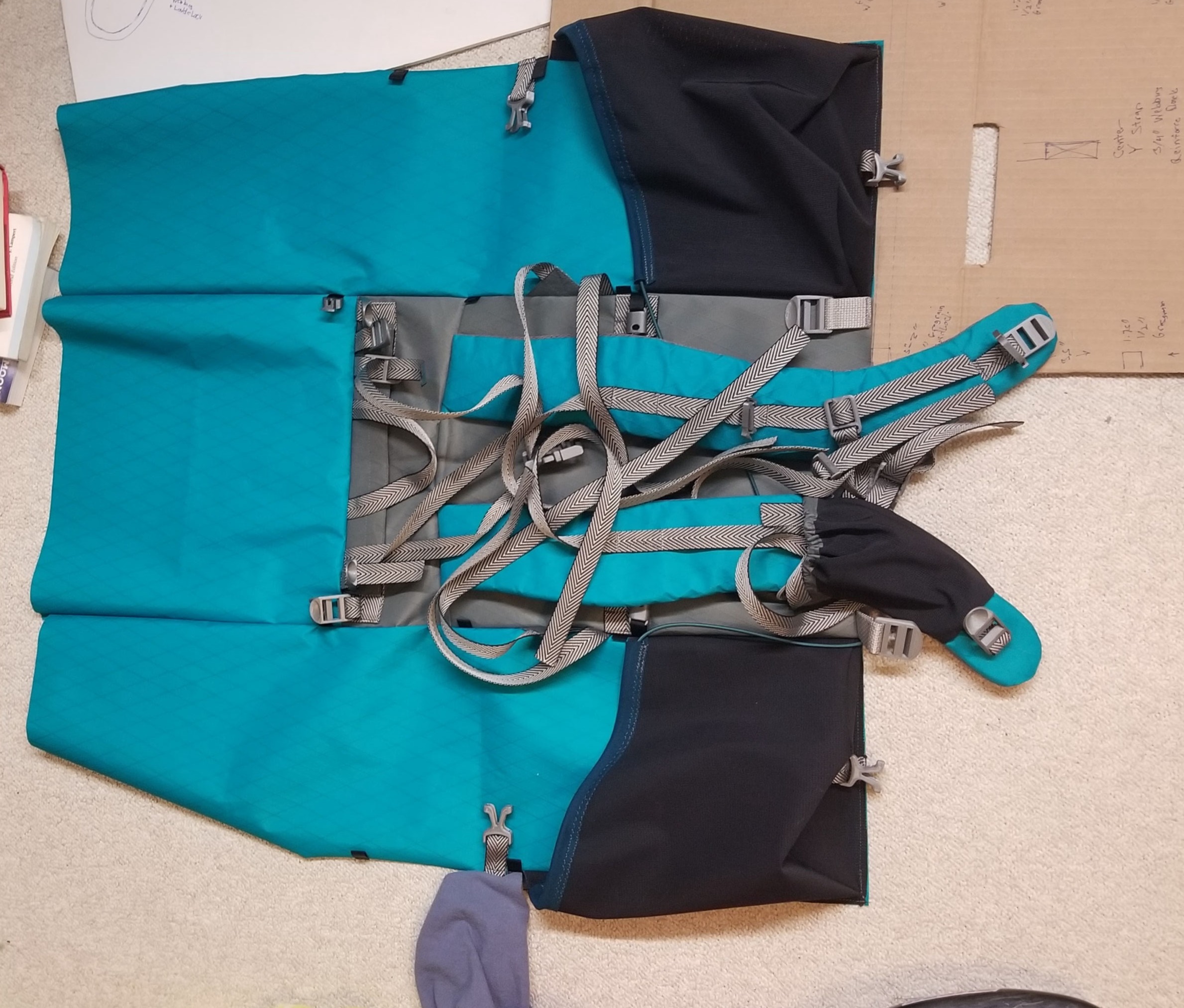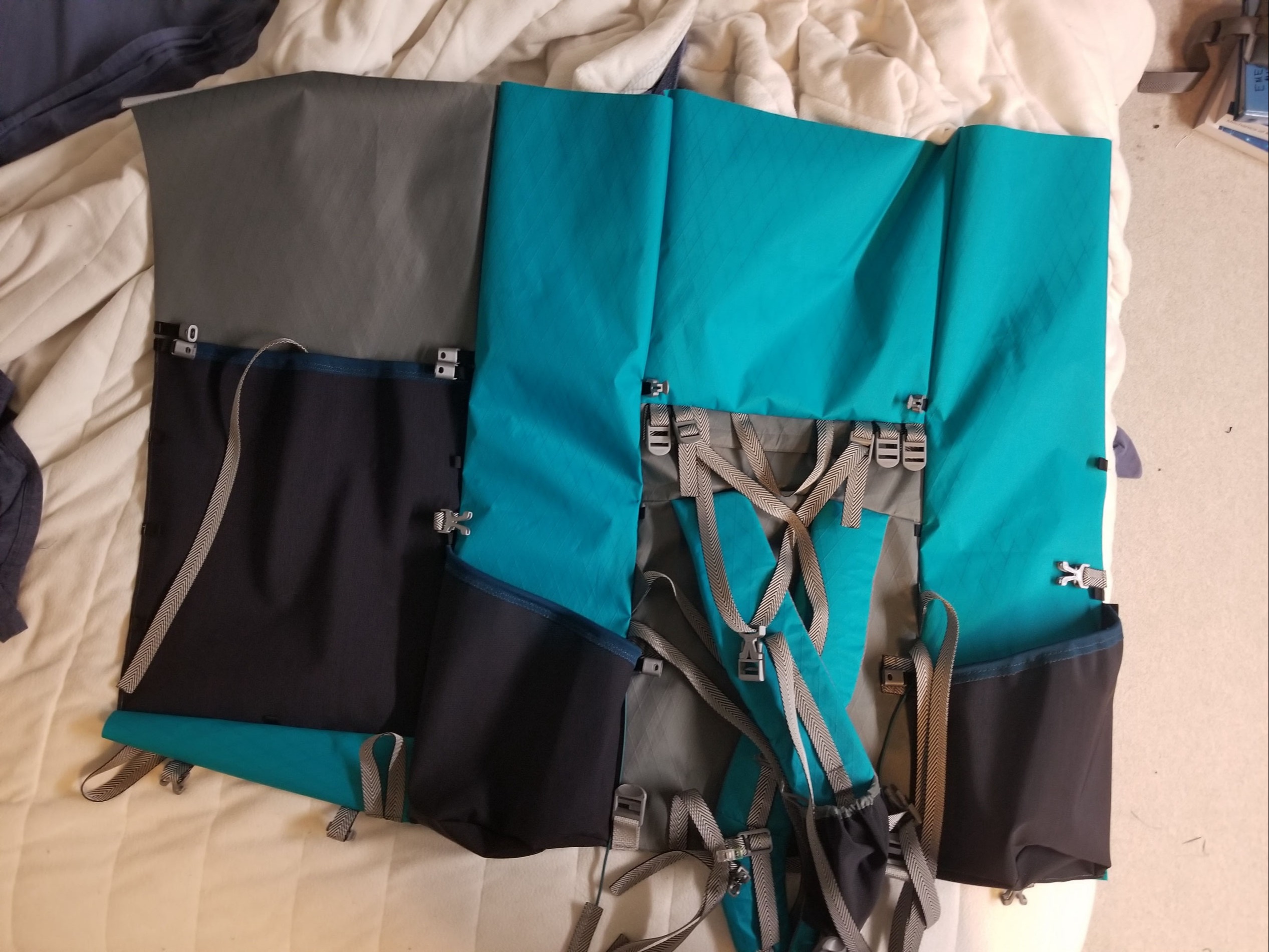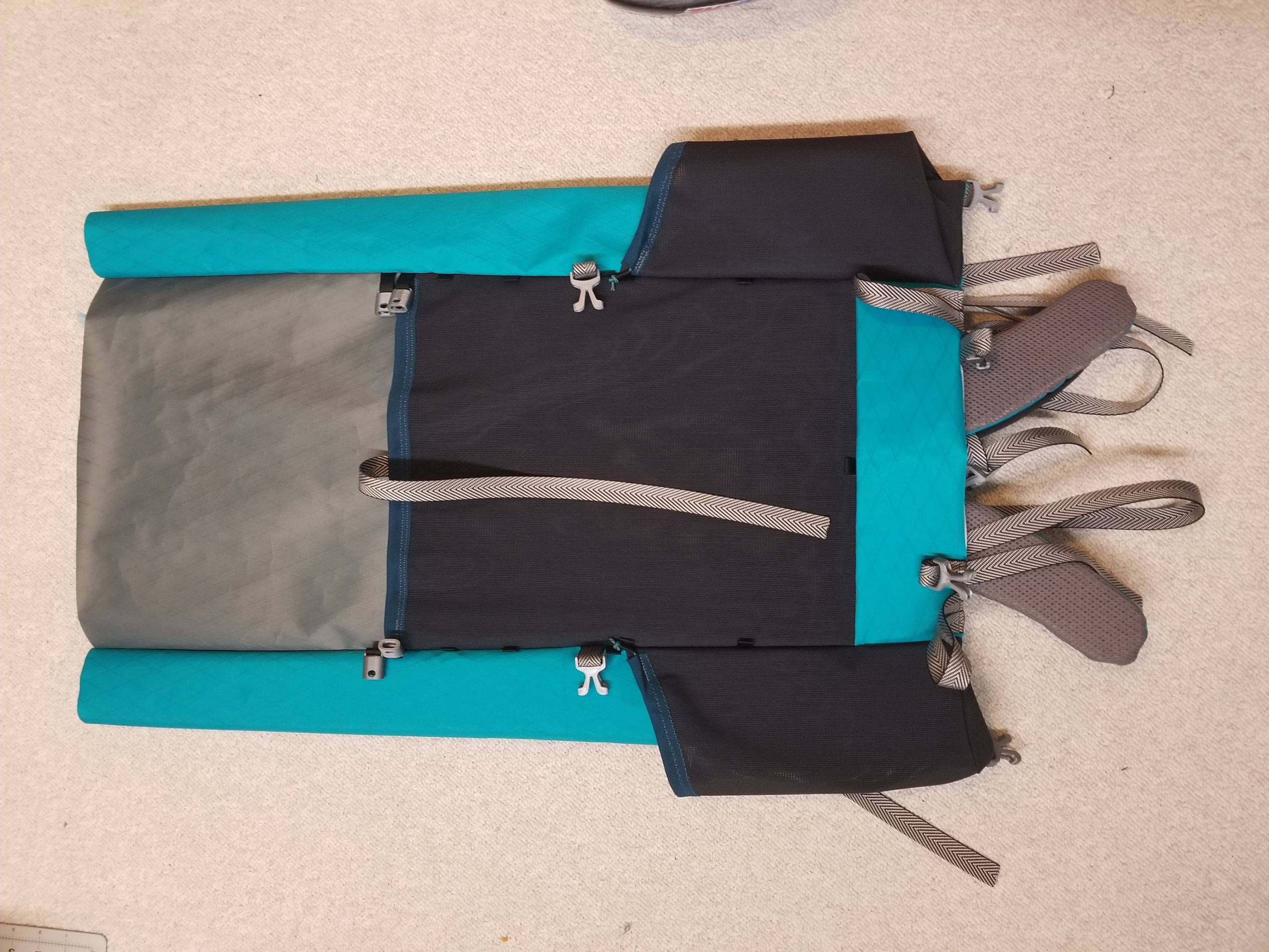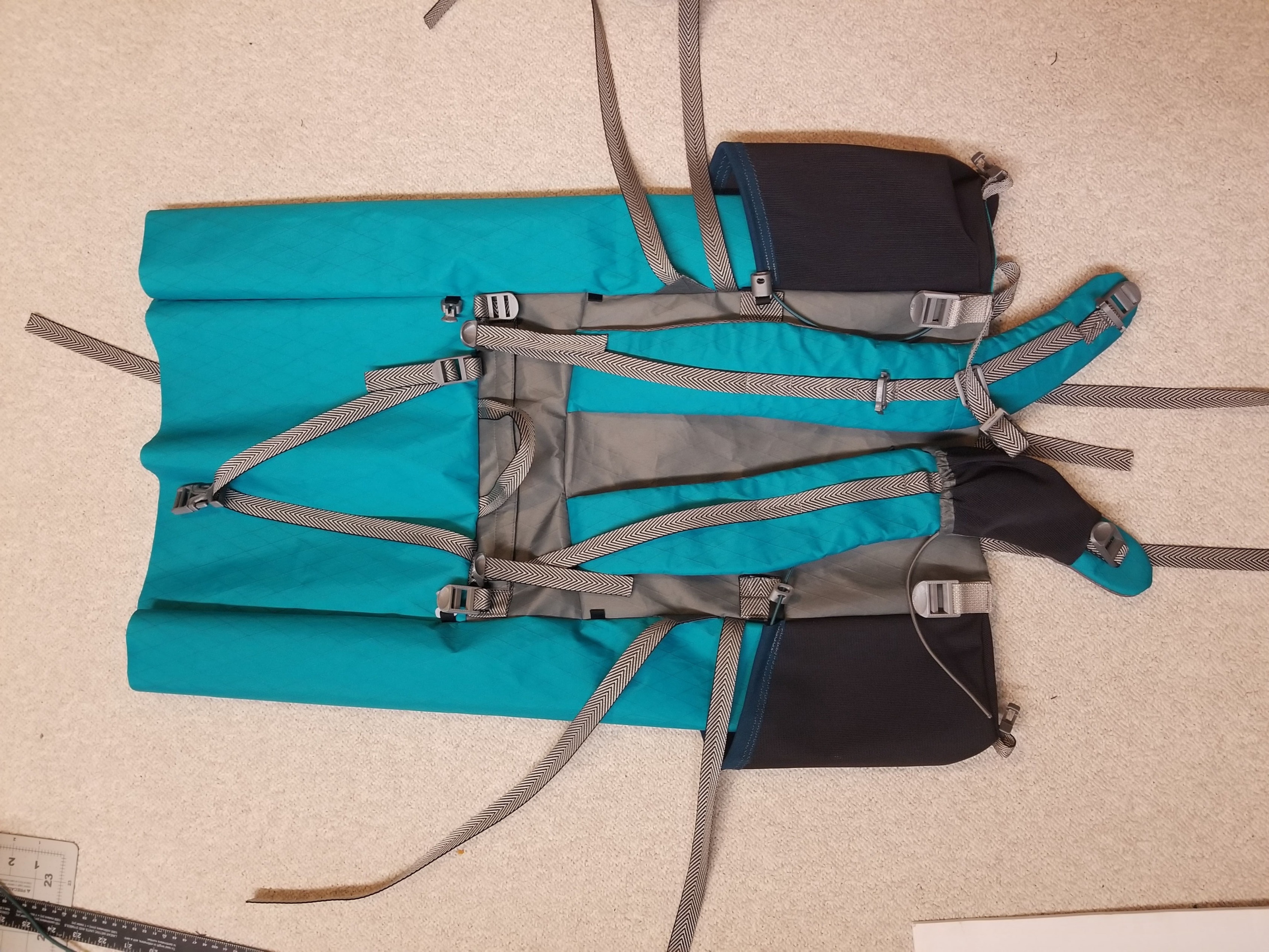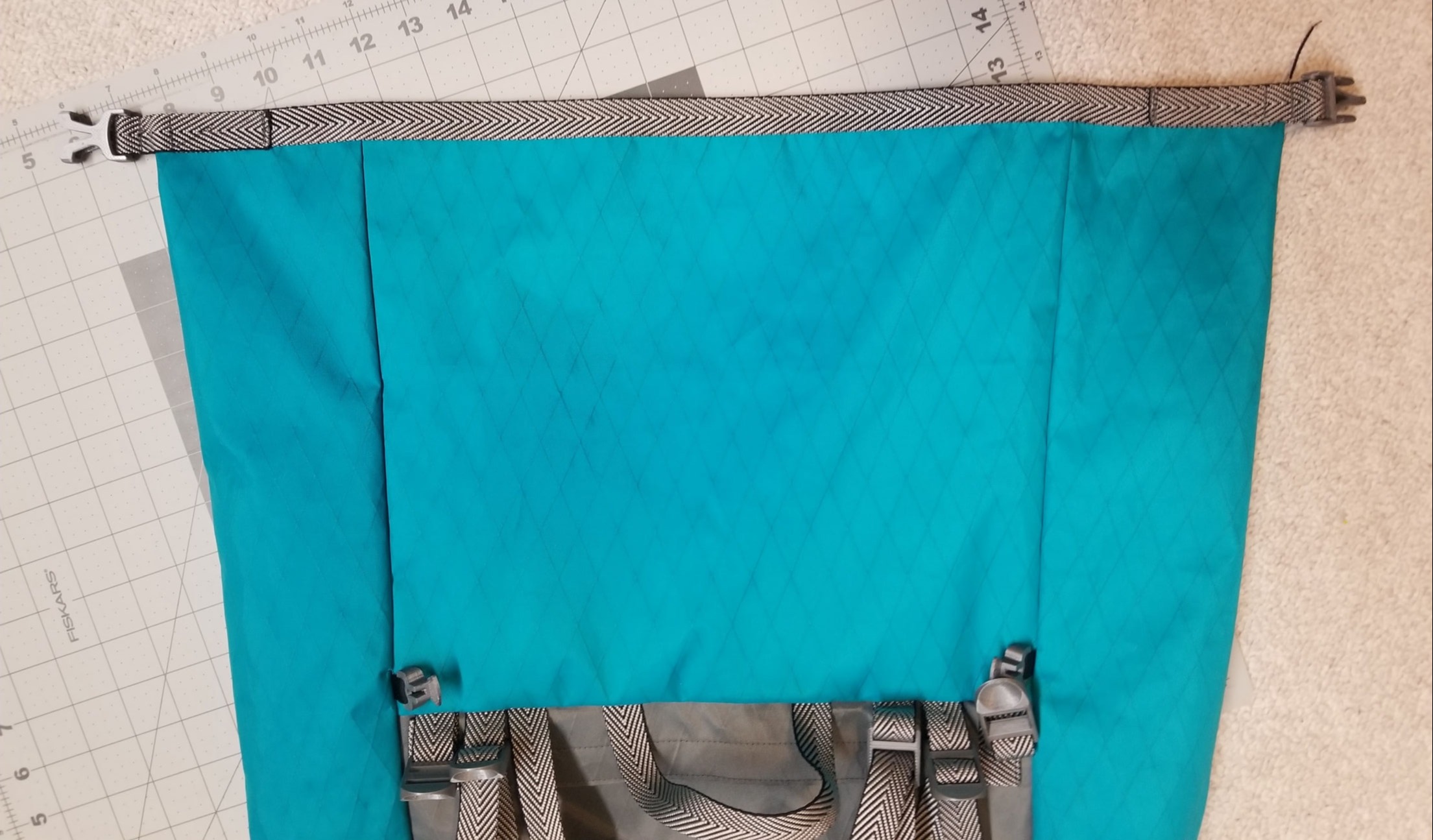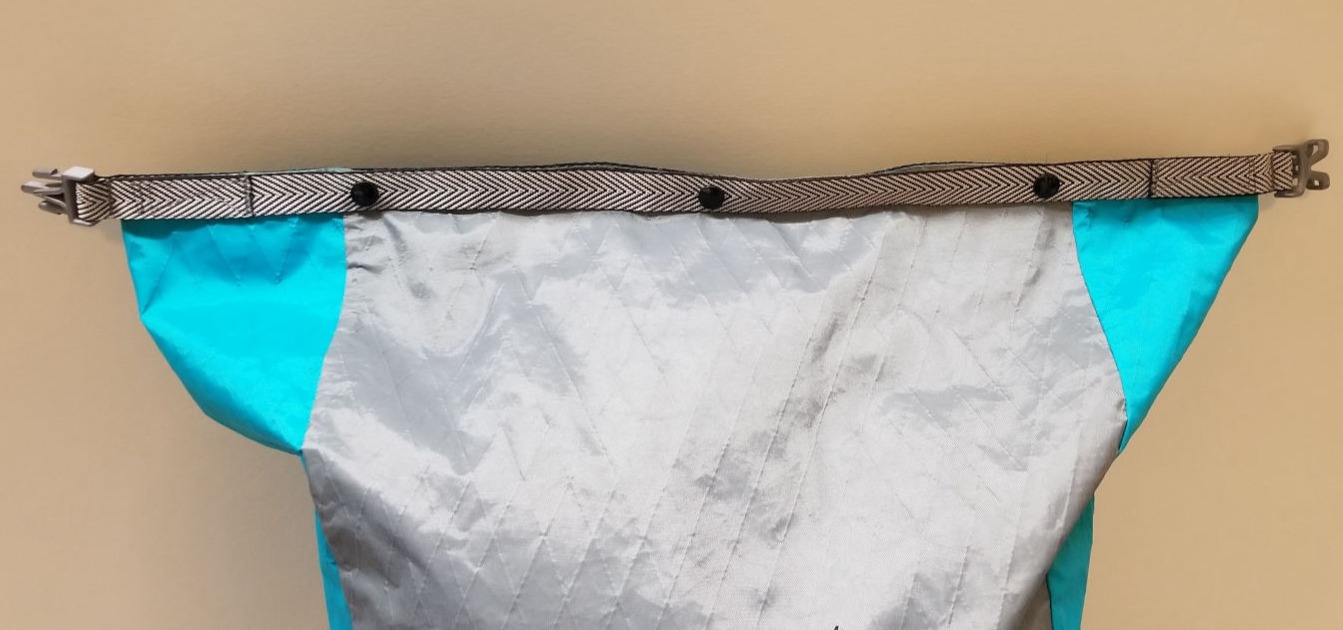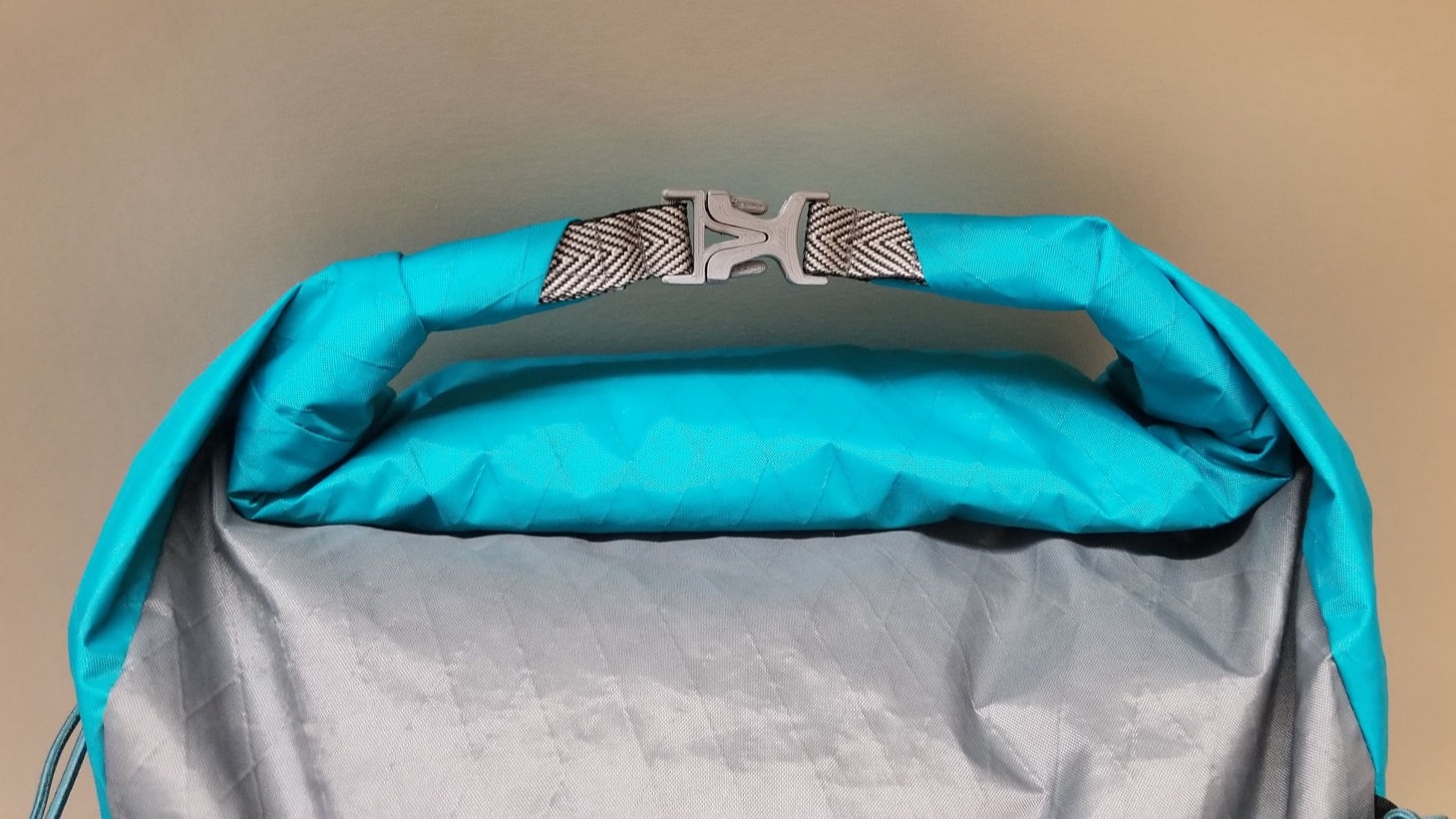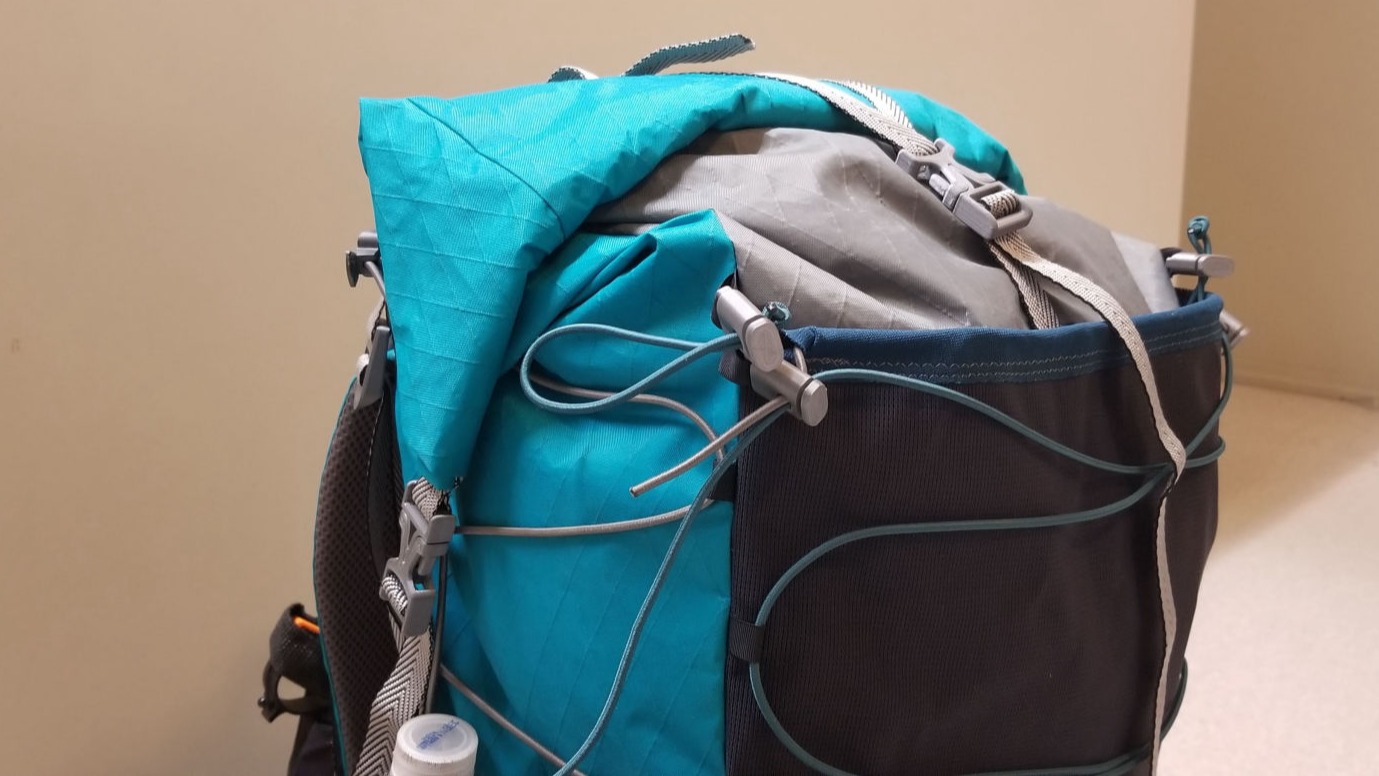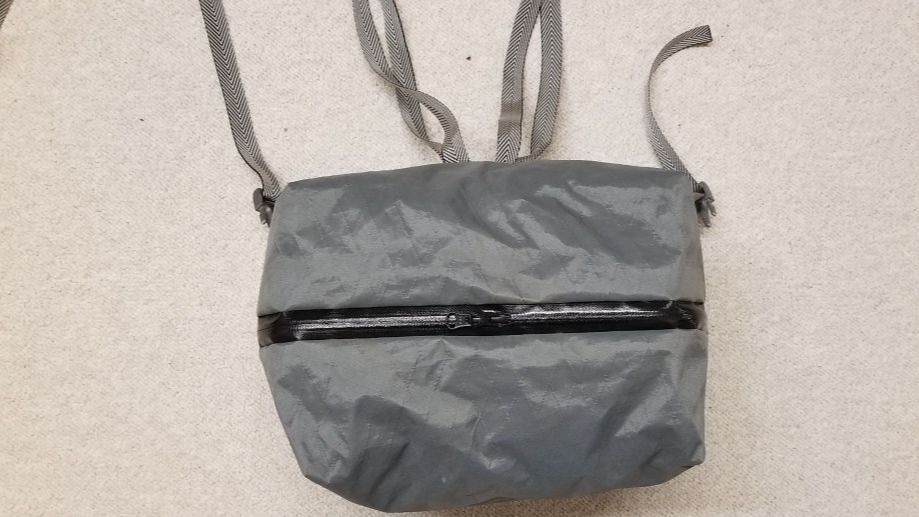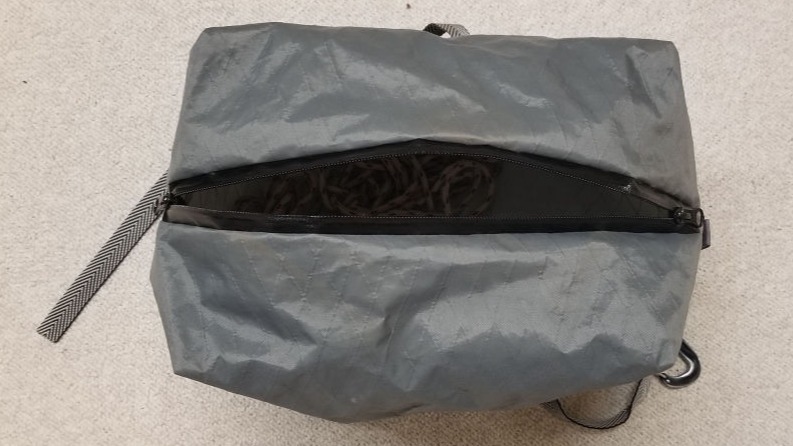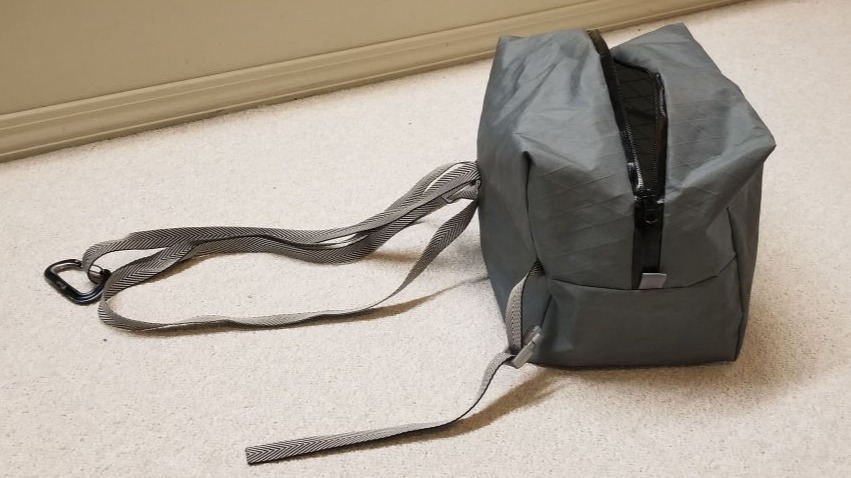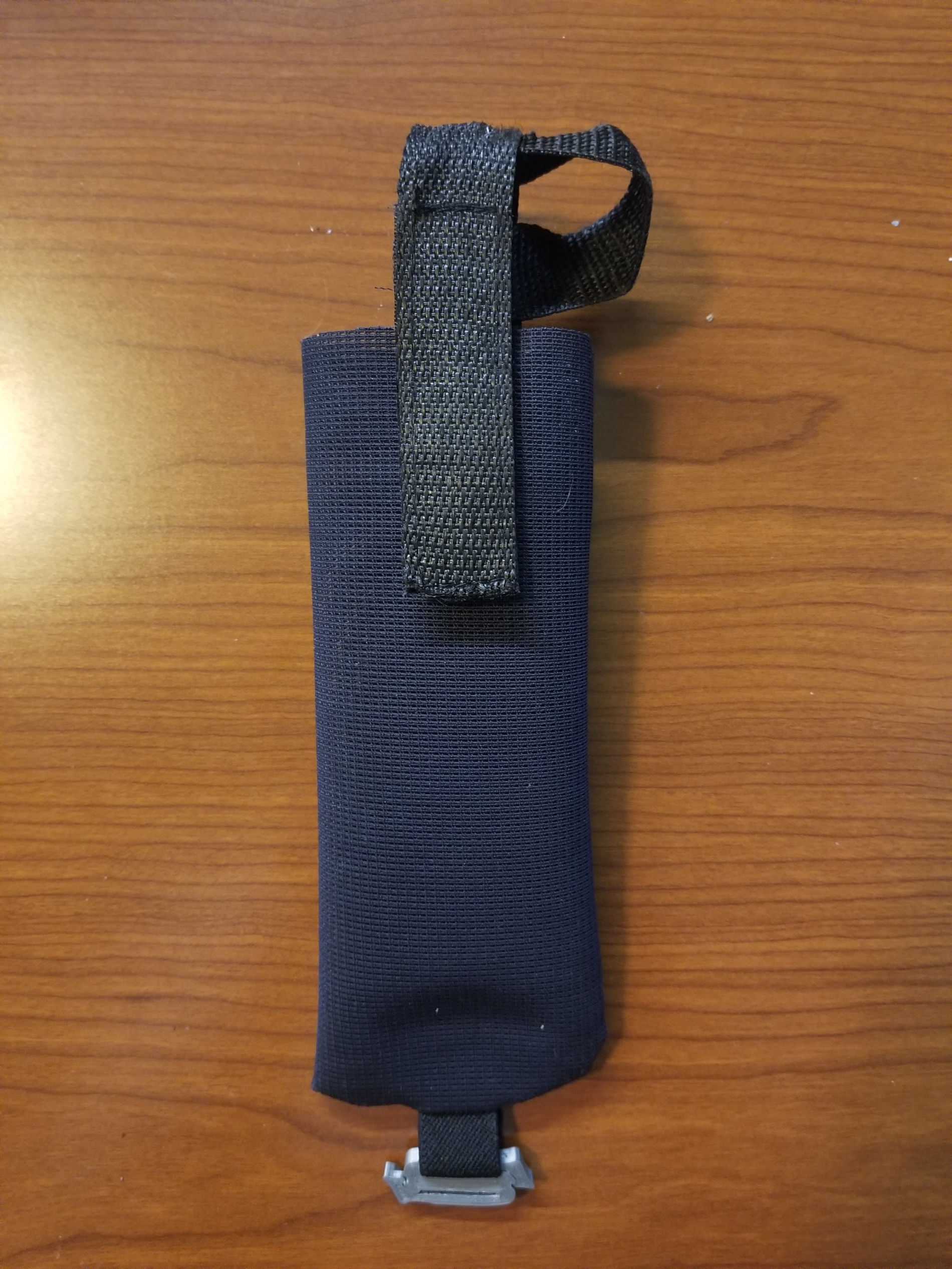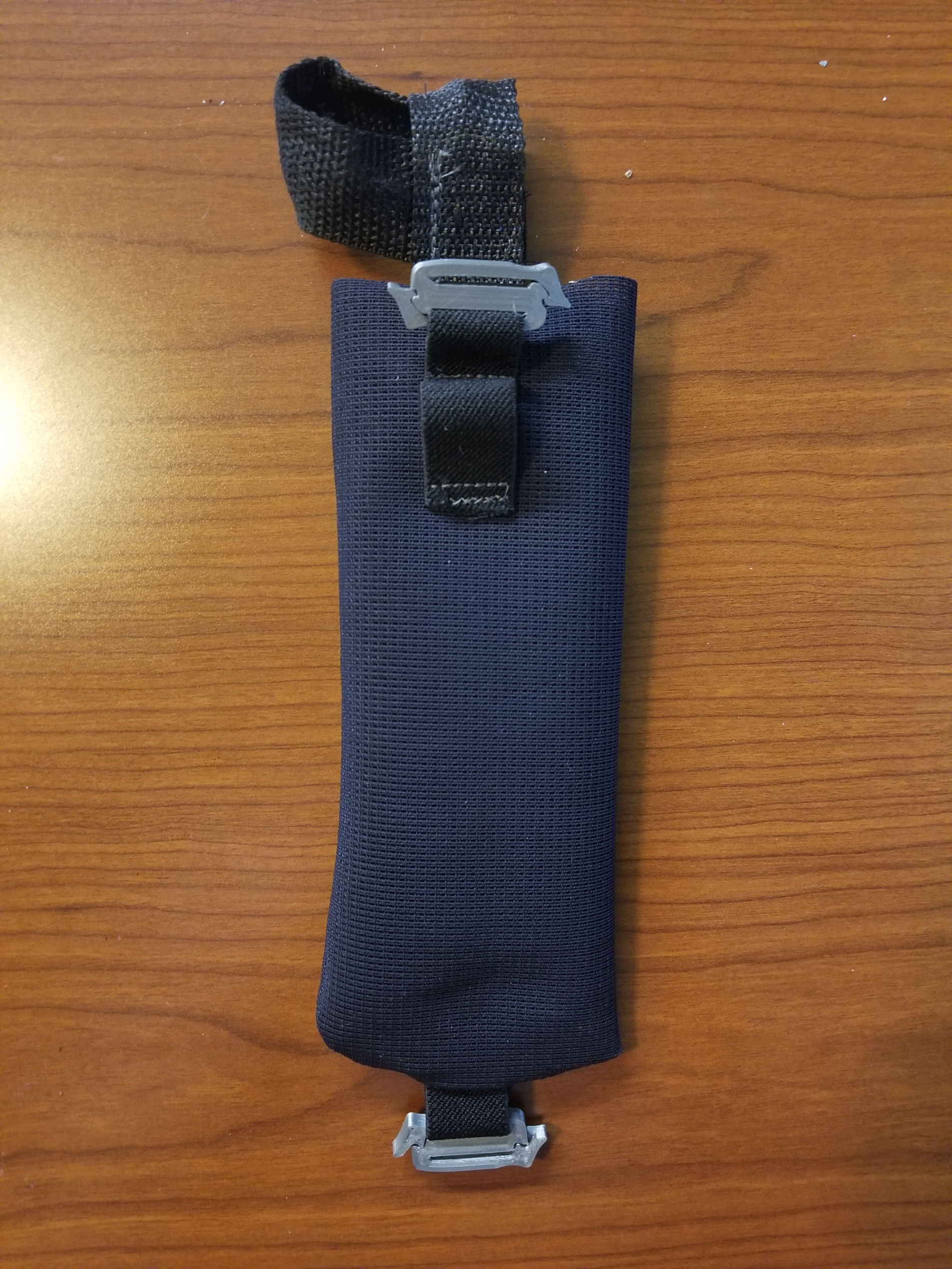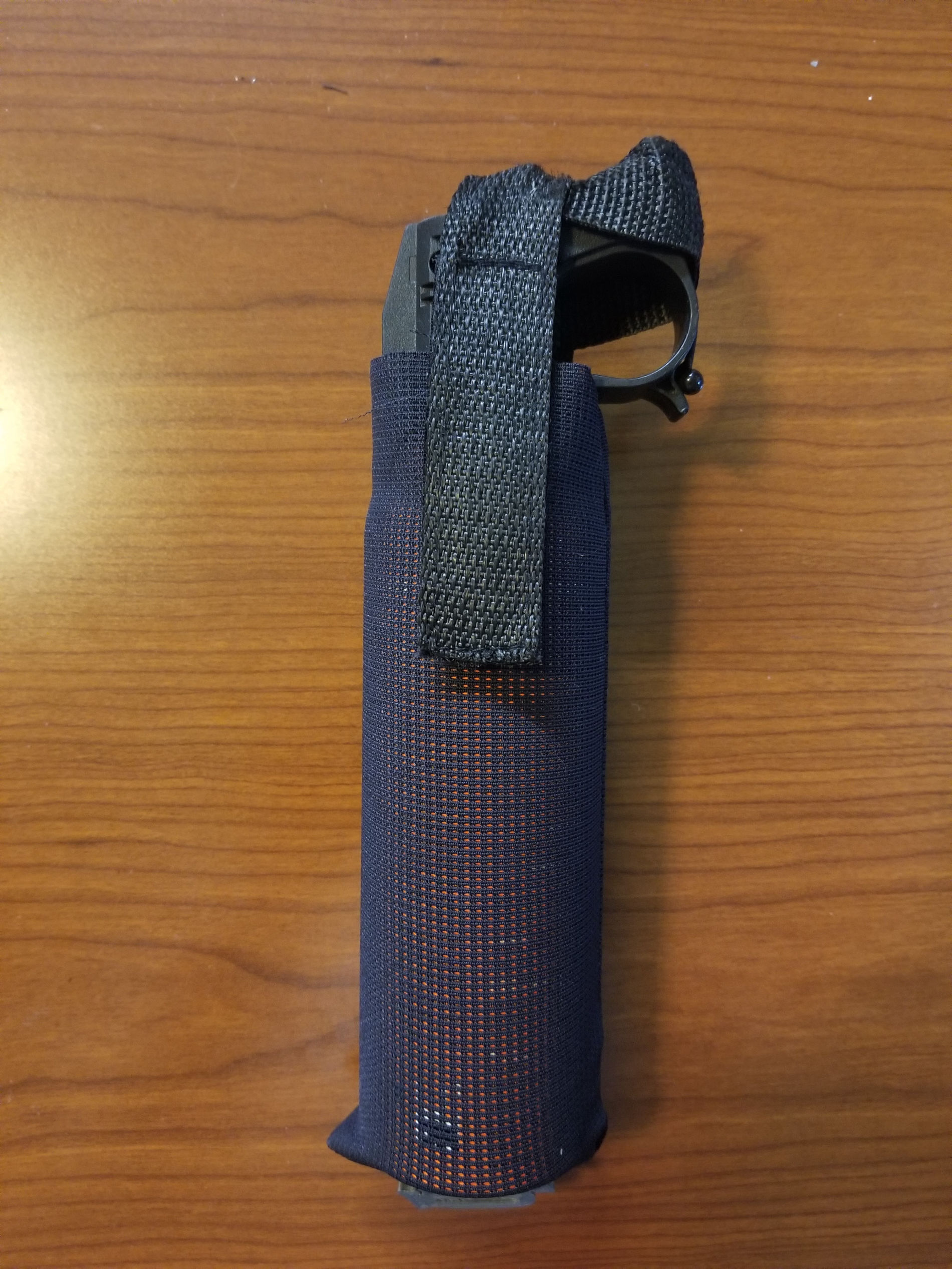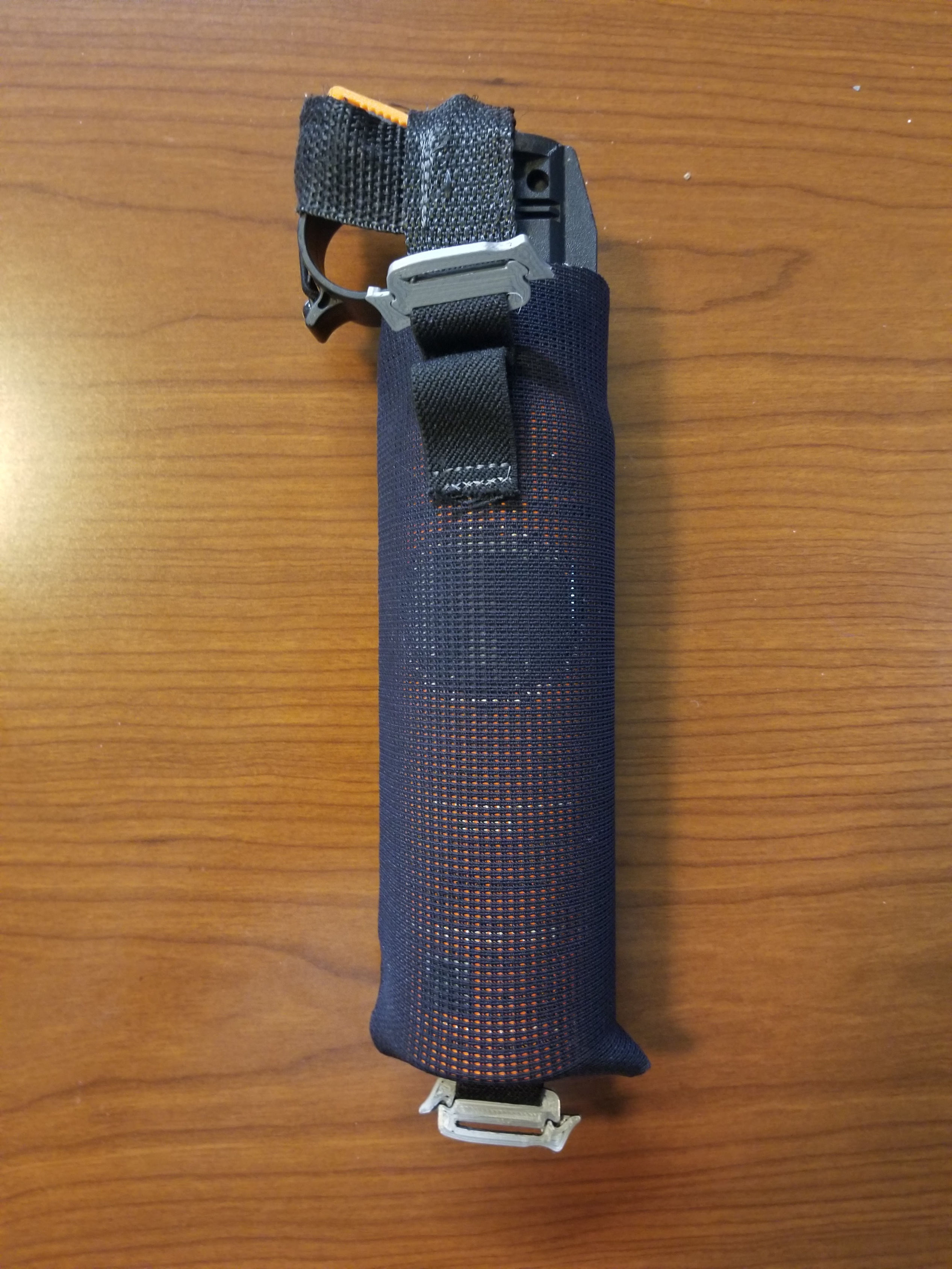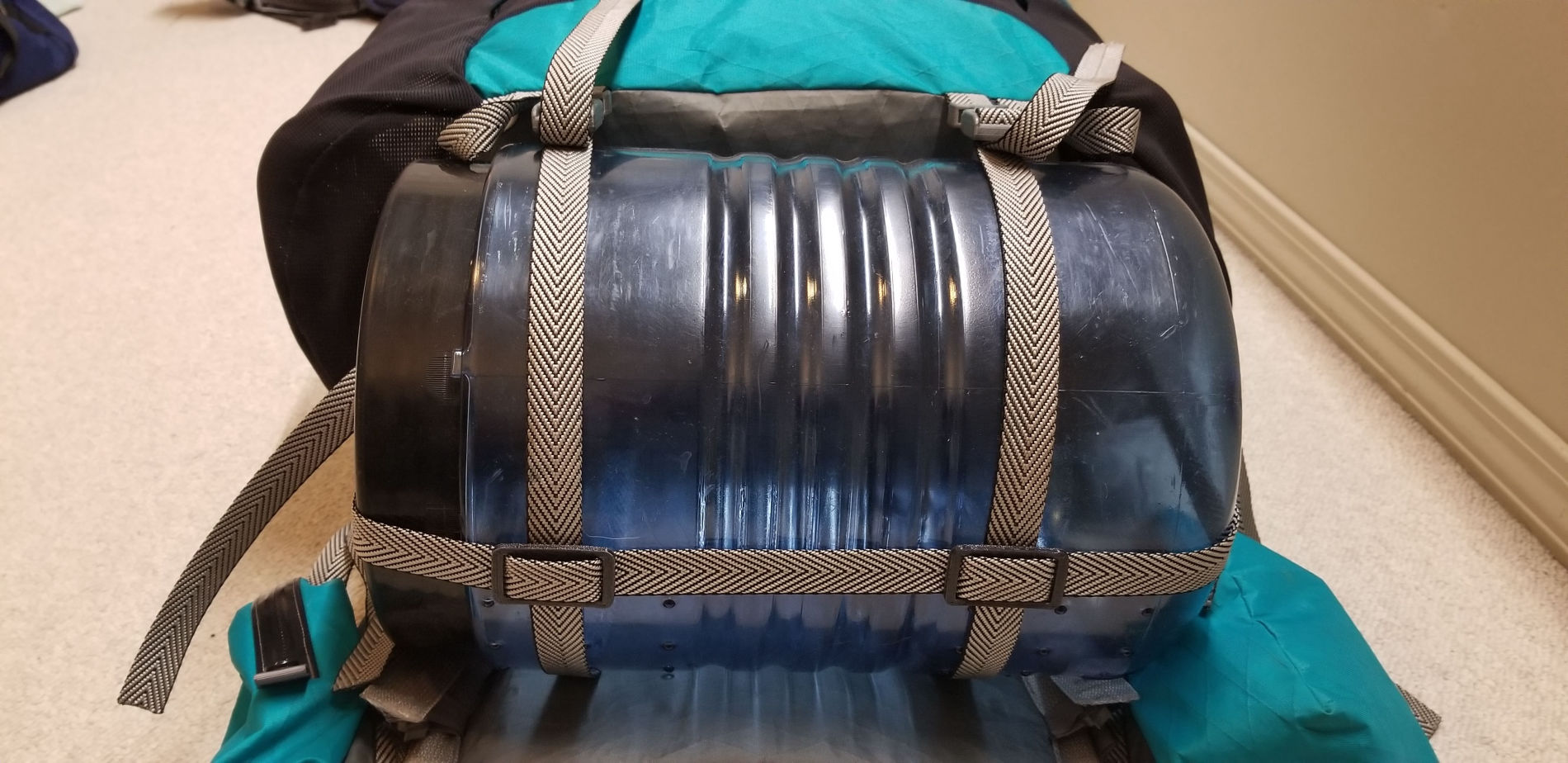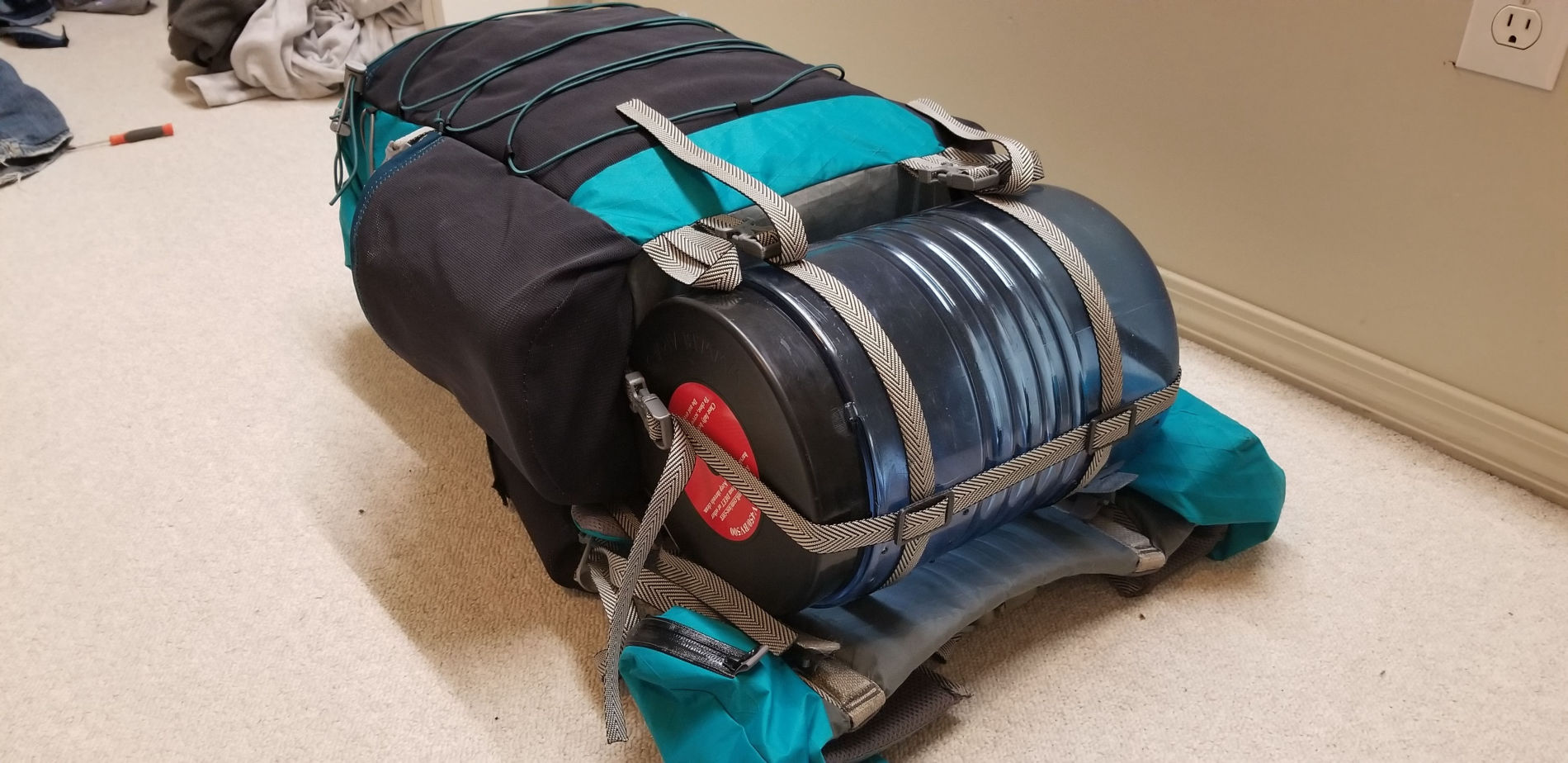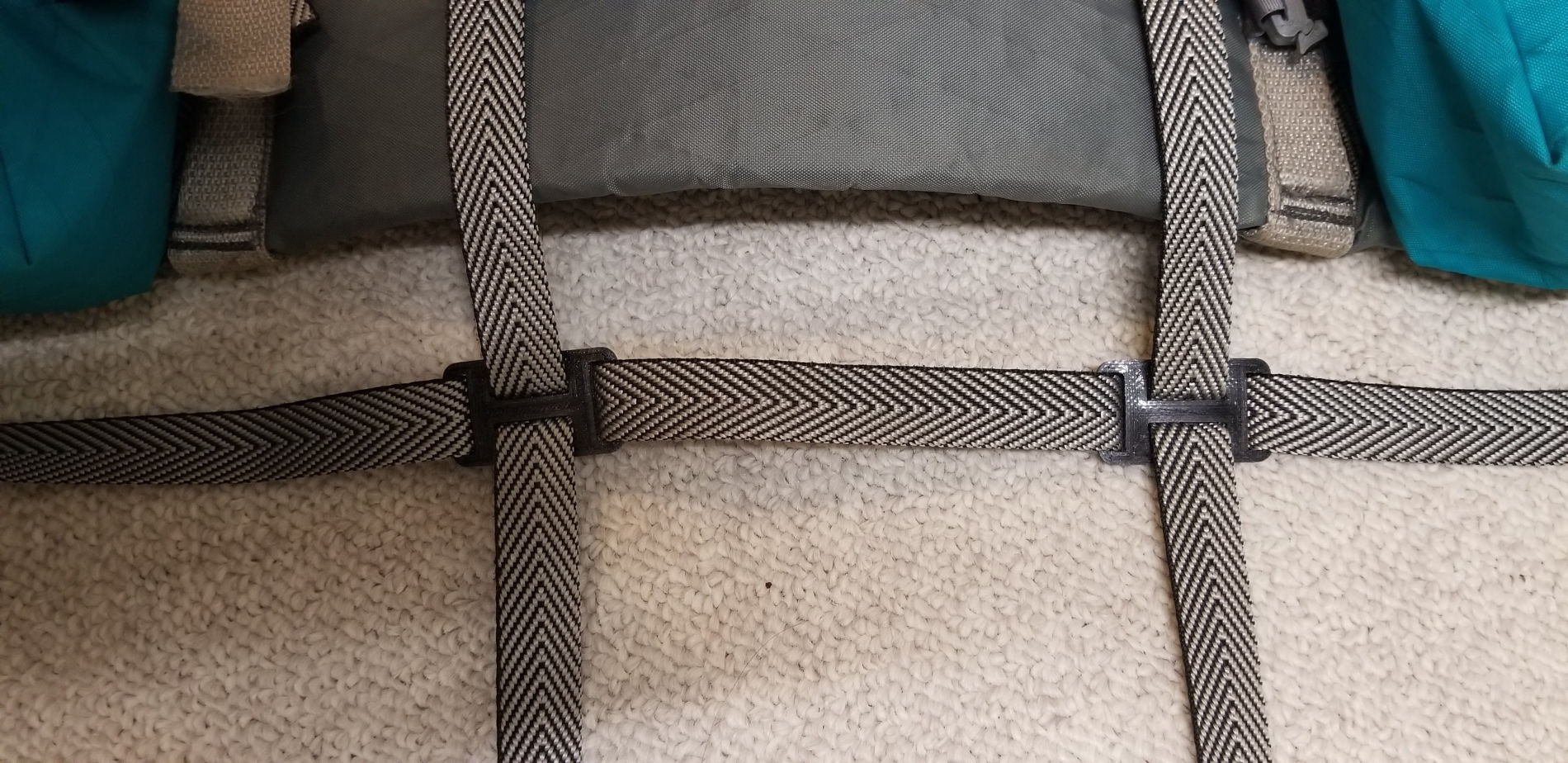Design Process
I took inspiration for designing this backpack from a few different sources. The design of the Z-Packs Arc Blast had always intrigued me, as having airflow and a suspension system between the pack and the back seemed like an ingenious feature. I was able to find other examples of this feature in some MYOG designed packs, and I used this design primarily as inspiration for my creation of my own pattern for the prototype pack. My pattern changed immensely after going through the construction of the prototype pack, and is quite locked in for the current version. The other major component of this pack is the bottom bear canister attachment. As someone who backpacks mainly in grizzly territory, having a bear canister provides immense peace of mind. I've been shocked that the backpack market hasn't designed a pack that easily accommodates bear canisters. The two options for hauling a bear canister with a typical pack are to either put it horizontally or vertically inside of the backpack, which basically removes most of the pack capacity for any gear that would not be inside the canister. The other option is to strap the bear canister horizontally to the top of the pack, but usually in lightweight setups the food and bear canister are the heaviest part of the loadout. This results in the backpack being extremely top-heavy, and is an uncomfortable way to backpack. While researching for backpack inspiration, I stumbled upon an experimental pack design by Nunatak, which utilized a bottom bear canister attachment, and my mind was blown!
With these two main sources of inspiration, I then began to learn how to properly pattern a backpack to incorporate seam allowances, and understand critical pack dimensions. I settled on a pack with a rough rectangular prism volume of 8" thick, 12" wide along the back, and 20" tall, with the roll-top having the ability to expand an additional 12". This gave me a rough estimate of a pack volume of about 30L and a max capacity of about 50L with the roll-top fully expanded. This capacity was quite a decline from my previous 65L pack; however, many features were designed to increase capacity to other areas of the pack. The bear canister attachment system allows for an additional 11.5L of capacity with a BV500, or 10L of capacity with a food bag for areas where a bear canister is unnecessary. The front mesh pocket can also fit approximately 5L of gear for easy access, and each side pocket can fit 2L of water, or 3.5L of water and a backpacking cooking pot set. Finally, the hip belt pockets can store around 1.5L each of gear. Once I had rough dimensions figured out, I needed to combine the ideas of a mesh suspension, along with a bottom bear canister attachment system. This required that the pack have an external frame system, which was integral for properly distributing loads and allowing the backpack to have capabilities of carrying 30lbs.
I used X-Pac VX21 For the main fabric for the pack, as it had desirable structural and abrasion resistant properties, and looks absolutely gorgeous. Teal was used as the main color, and gray was supplemented as a secondary color in areas of less visibility. The front and side pockets used Duraweave Stretch fabric, an extremely durable and stretchy fabric. 1/4" hole size mesh rawhide was used for the back suspension panel. A variety of silver webbing was used, both 3/4" and 1-1/2" polypro herringbone webbing, and 1" polypro webbing, as I was unable to find 1" herringbone webbing. Gray 3/4" grosgrain was used for various attachment points. 1-5/8" stretch binding was used for side and top pocket shock cord channels. Both 3/16" charcoal and turquoise shock cord was used for adjusting pack volume, cinching pockets, and providing exterior attachment space. #5 Uretek waterproof zippers were used for the hip belt pockets. 1/2" by 1/8" thick aluminum bars were used for the back suspension frame. 3/8" thick mini cell foam was used for the shoulder strap and hip belt padding, along with gray 3D spacer mesh. Gray Guterman Tera 80 Thread was used, along with Smetz Sharp 90/14 needles. The hardware was all 3D printed from Space Gray PETG, with the exception of frame end caps and bear canister strap holder printed from TPU, and currently an injection molded Cobra Buckle which I plan on reverse engineering for 3D printability. Again, the design process of the hardware is covered on the 3D Printed Hardware page.
After sewing the pack, it has been used on over 100 miles of trail so far, fully loaded for the most part. It has held up nicely so far, only needing a minor shoulder strap seam repair resulting from being picked up too forcefully, along with a back suspension webbing repair where the webbing has frayed. Furthermore, to prevent the frame from rubbing through the webbing reinforcement, frame end caps were designed from TPU. I am extremely satisfied with the changes that I made deviating from the prototype, and feel that future versions will likely be 95% of the same construction methods and design. If you are interested in having one of these packs made for yourself, feel free to contact me!
